Last updated on March 6, 2024

Muraganda Petroglyphs | Illustration by Scott Altmann
Future Sight was one of three funky sets from the Time Spiral block. Released in May 2007, Future Sight followed up Planar Chaos’ colorshifted cards by featuring a number of “futureshifted” cards, i.e., cards that hadn’t been printed before but might be reprinted in future sets.
What exactly are futureshifted cards? What sorts of mechanics did R&D test in Future Sight? Come, gaze into my crystal ball…
Future Sight Basic Information
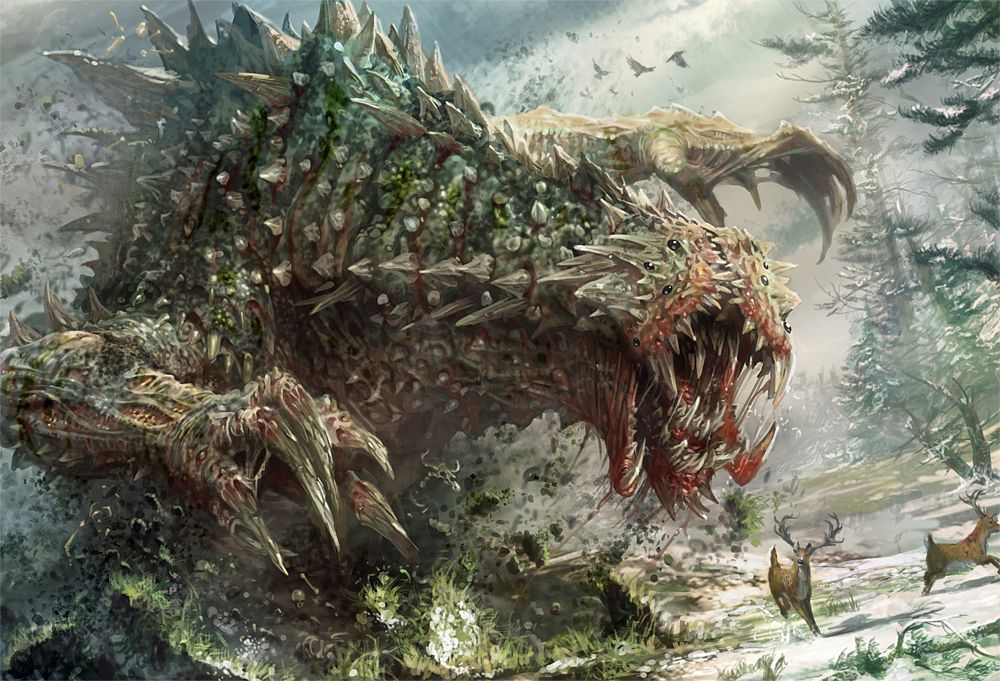
Tarmogoyf (Modern Masters) | Illustration by Ryan Barger
Set Details
| Set Symbol | 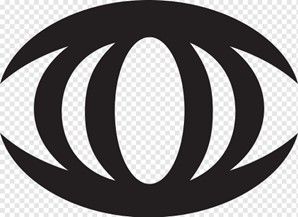 |
| Set Code | FUT |
| Number of Cards | 180 |
| Rarities | 60 commons, 60 uncommons, 60 rares |
| Mechanics | Absorb, Assemble, Aura swap, Bloodthirst, Convoke, Cycling and Typecycling, Deathtouch, Delve, Dredge, Double strike, Echo, Fateseal, Flanking, Flash, Flashback, Fortify, Frenzy, Graft, Grandeur, Gravestorm, Hellbent, Kicker, Lifelink, Madness, Morph, Poisonous, Reach, Scry, Shadow, Shroud, Split second, Storm, Suspend, Transfigure, Transmute, Vanishing |
Important Dates
| Event | Date |
|---|---|
| Release Date | May 4, 2007 |
| Prerelease Dates | April 21-22, 2007 |
About the Set: The Story
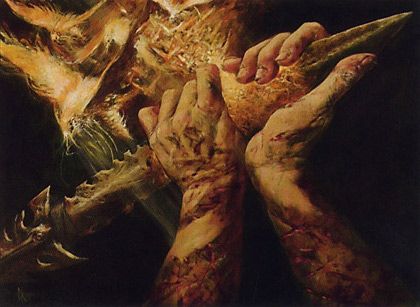
Intervention Pact (Future Sight) | Illustration by Dave Kendall
During the Time Spiral block time itself is fracturing on Dominaria where Teferi and his companions have finally returned. Our planeswalking heroes must mend the time rifts across Dominaria all while facing down classic villains like Nicol Bolas and Leshrac.
One major factor makes Future Sight important to the overall Magic story: the actions of the planeswalkers in this set trigger the Mending, forever changing the planeswalker spark. Jeska seals no less than three of these time rifts with help from Teferi, Radha, and Multani.
She ultimately sacrifices herself to seal the final rift in Otaria, caused by her transformation into Karona during Onslaught. This triggered the Great Mending, healing the planes and Dominaria of the time rifts, but forever diminishing the power of all current and future planeswalkers and preventing them from bringing creatures without a spark along when they planeswalk.
The Time Spiral block’s time travel theme allowed for characters from and references to previous stories to make appearances all over. Cue the ‘90’s sitcom opening where Teferi, Karn, Jeska, Jhoira, Leshrac, and Nicol Bolas all turn and smile at the camera.
Set Mechanics
Future Sight featured 80 “pre-print” cards, or cards that R&D expected to print again when they found a home for them. These cards feature unique mechanics, both keyworded and not. A number of old mechanics also returned, and several evergreen mechanics that were already present in Magic got their own keywords.
Absorb N

Absorb N prevents an amount of damage (N) to a creature whenever damage would be dealt to it. It's only appeared on Lymph Sliver. It seems fairly hard to balance, and it’s definitely easier to design cards that prevent all of a certain type of damage (Fog effects and its peers).
Deathtouch
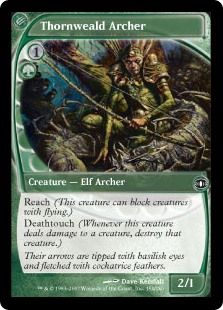
You’d think an exact wording on deathtouch would’ve been in the game before now, but Wizards didn’t nail it down until Future Sight. Previous incarnations of this ability include Lowland Basilisk and Loyal Sentry. Deathtouch only appears on Thornweald Archer.
Delve
A spell with delve lets you exile any number of cards from your graveyard as you cast it, and each card exiled pays for one colorless mana of that spell’s casting cost. Delve effects have become a staple in self-mill decks, especially when it returned in Khans of Tarkir.
Fateseal N

Fateseal basically lets you scry the top of your opponent’s library. It’s a very effective way to control their draws, so it’s only been printed on two cards: Mesmeric Sliver and Spin into Myth.
It’s considered very un-fun by R&D, but I don’t think that should exclude it from being reprinted. We saw an effective fateseal on Jace, the Mind Sculptor’s +2 ability, and it’s effectively present on Sealed Fate (its namesake) and Precognition.
Fortify
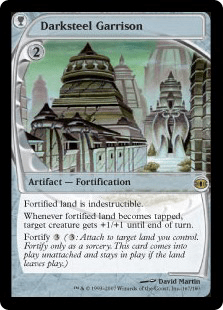
Fortify appeared on Darksteel Garrison, the only card with the “fortification” subtype. Fortifications were basically equipment for lands, a really unique idea! R&D doesn’t seem to agree.
MaRo is quoted saying there’s not enough difference between fortifications and auras that enchant lands. If that were true, Mark, why do we still see equipment for creatures, when we could just cast auras? Checkmate.
Frenzy N
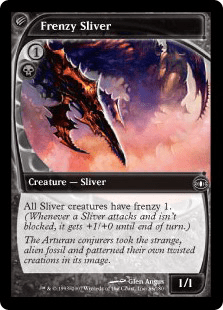
Frenzy appeared on a single card in Future Sight, the aptly named Frenzy Sliver. Frenzy gives an attacking creature +N/+0 if it isn’t blocked.
The mechanic is meant to encourage blocking and force players to make smart trades in combat, but it’s unlikely to return because of a general shift away from that play pattern. Murk Dwellers effectively has frenzy 2, but the ability has never been ruled as such.
Grandeur
Grandeur’s five legendary creatures allow you to discard another card with their same name to activate an effect. Grandeur was effectively an outlet for extra legendaries you couldn’t play, giving a player some payoff for running multiple copies of legendary creatures that would otherwise be useless unless played one at a time.
Future Sight’s five legendary grandeur creatures were all descendants of previous Magic legends: Oriss, Samite Guardian and Orim, Samite Healer; Korlash, Heir to Blackblade and Dakkon Blackblade; Baru, Fist of Krosa and Kamahl, Heart of Krosa; Tarox Bladewing and Rorix Bladewing; and Linessa, Zephyr Mage and Alexi, Zephyr Mage.
Gravestorm

Gravestorm is storm, but for the grave! What a concept!
When you cast a spell with gravestorm you copy it for each permanent that’s been put into a graveyard this turn. It only appears on Bitter Ordeal with a Surgical Extraction-type effect that black is known for. It hasn’t returned so far, but here’s hoping!
Lifelink
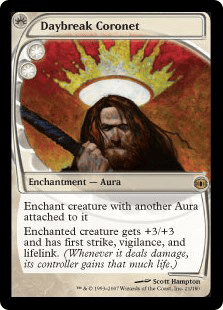
Lifelink was keyworded in Future Sight despite effectively being present on dozens of cards before then. It appeared on Daybreak Coronet and Mistmeadow Skulk.
At the time it was worded as a triggered effect (“when this creature deals damage, its controller gains that much life”), but it has since been reworked into a static effect (“damage dealt by this creature also causes its controller to gain that much life”). This may seem insignificant but there was a time when you could respond to a lifelink trigger.
I’m not exactly sure where the advantage is to that, but I’m sure some enterprising commenter can help me out.
Poisonous N

When a creature with poisonous N deals combat damage to a player, that player gets N poison counters. Poison counters have been in Magic since Pit Scorpion and Serpent Generator, and they’re a favorite alternate win condition among many players.
Poisonous was the first attempt to consolidate the poison counter rules into a keyworded mechanic, but it was replaced in favor of infect in New Phyrexia. Poisonous was only printed on Snake Cult Initiation and Virulent Sliver, which has since become a staple in Pauper sliver decks.
Aura Swap
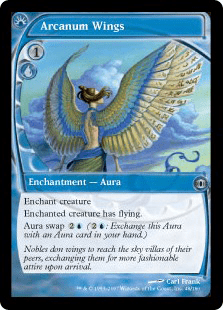
Aura swap is an activated ability that does just about what it says it does. Arcanum Wings, the only card with aura swap, lets you pay two colorless and a blue to exchange it with an aura card in your hand.
This is considered a powerful ability since it can circumvent restrictive casting costs, but MaRo rates its probability of returning somewhat likely, especially in an aura-centric set.
Shroud
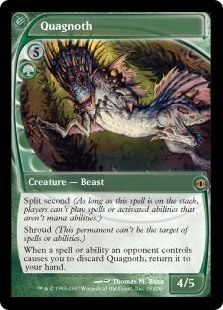
Permanents (or players) with shroud can’t be the targets of spells of effects. A symmetrical proto-hexproof ability was already present in the game, but it wasn’t keyworded to shroud until Future Sight. It appears on one card in the set, Quagnoth
Transfigure
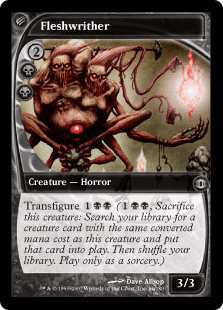
Transfigure was an extrapolation on the design of transmute from the Ravnica block. Where transmute fetched a card with the same converted mana cost to your hand, transfigure turns a creature on the field into another with the same mana cost.
Fleshwrither is the only transfigure card as of now, and it's not likely to return.
Tribal
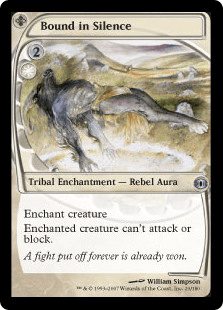
Future Sight added a new card type known as tribal. Tribal was used to add creature types to noncreature cards, like rebel with Bound in Silence. This mechanic was reused in Lorwyn to great success, letting your Wort, Boggart Auntie return cards like Tarfire (a goblin-themed Shock) from your graveyard.
Typecycling

Cycling a card for a specific type wasn’t necessarily new. The Scourge block introduced cards that cycled for basic lands. R&D expanded on that by including two cards that cycled for creature types.
Vedalken Aethermage and Homing Sliver tutor up wizards and slivers respectively, and wizardcycling even made a return in Modern Horizons 2 on Step Through.
Returning Mechanics
Future Sight introduced a ton of new mechanics, but it also found new design space for old mechanics. Bloodthirst, convoke, dredge, graft, hellbent, scry, and transmute all received some experimental designs, while morph, shadow, suspend, and vanishing all returned from Time Spiral.
Bonus: Planeswalkers?!
Planeswalker cards were originally supposed to be introduced in Future Sight. But their design wasn’t ready yet so their release was pushed back until Lorwyn. We can see hints of this in Tarmogoyf’s reminder text, which mentions “planeswalker” as a permanent type.
As a side note, remember those few years when only a handful of planeswalkers were around and there was a weird vocal minority of players who refused to play with them based on some imagined ethical high ground? That was weird, right? Maybe that was just my dorky friends.
Future Sight Full Card List
White
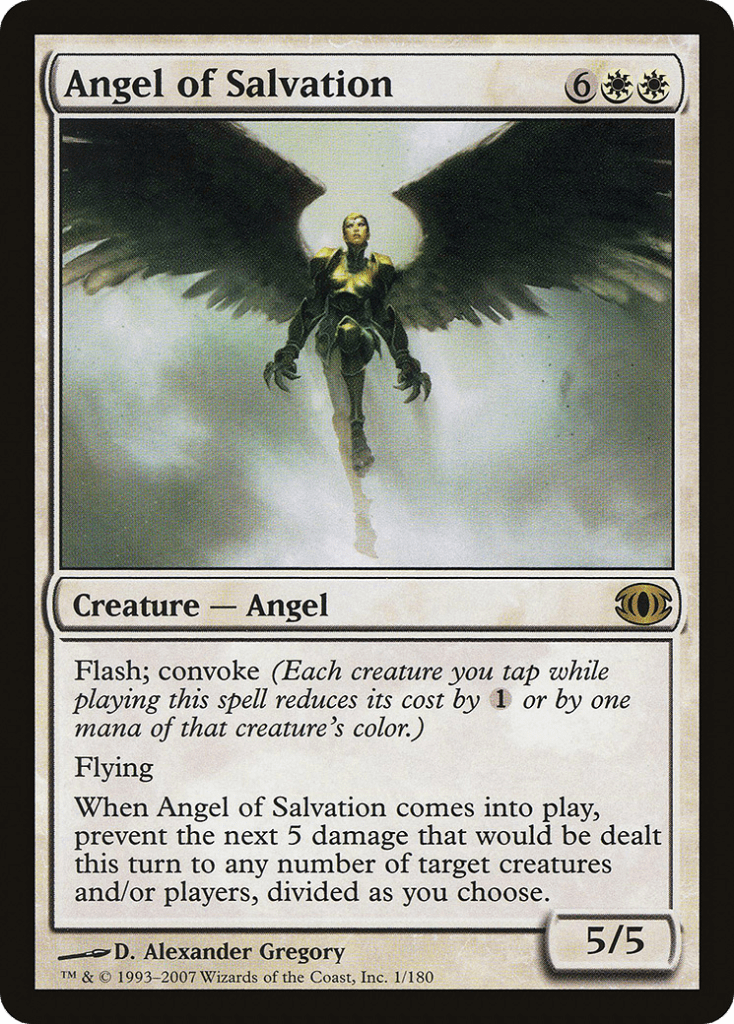
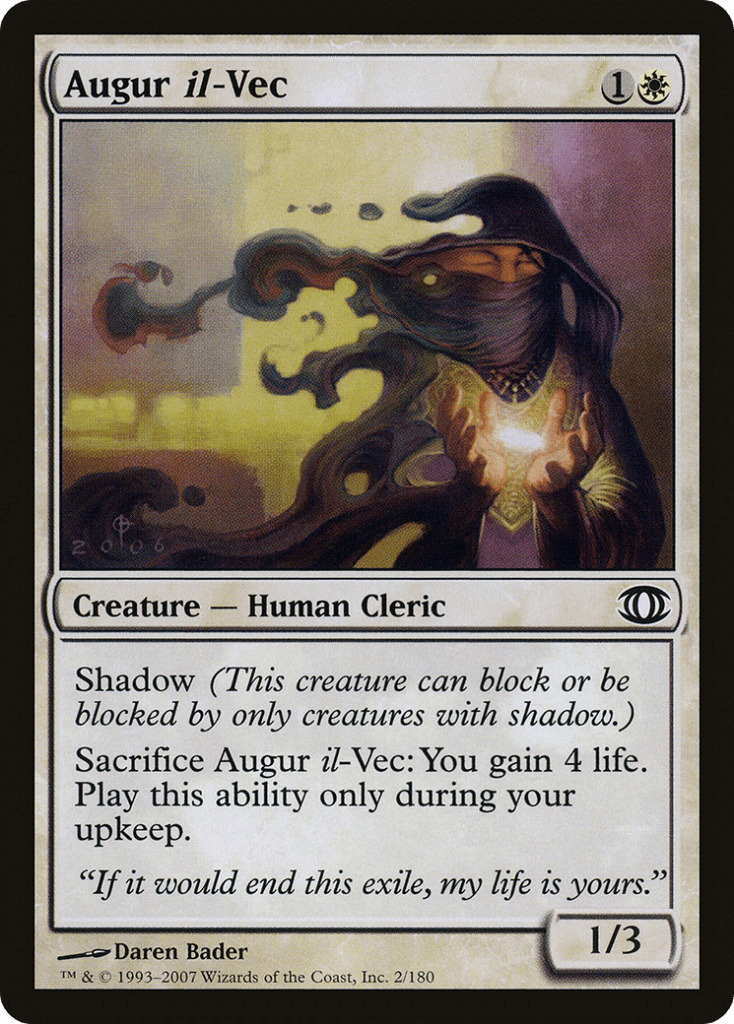



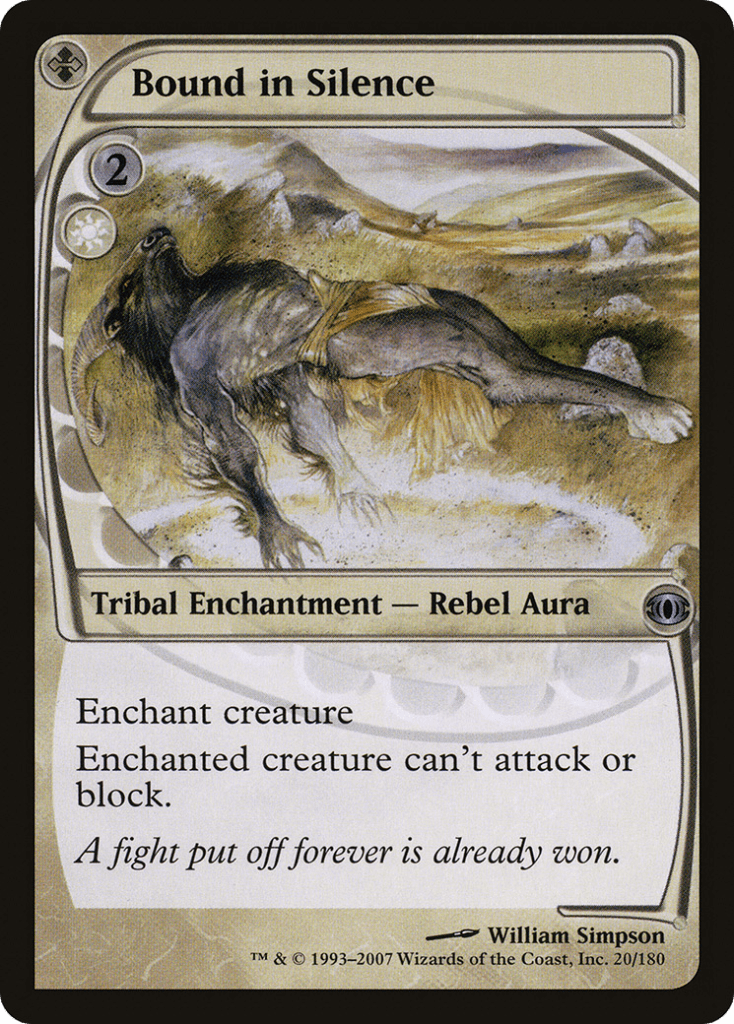
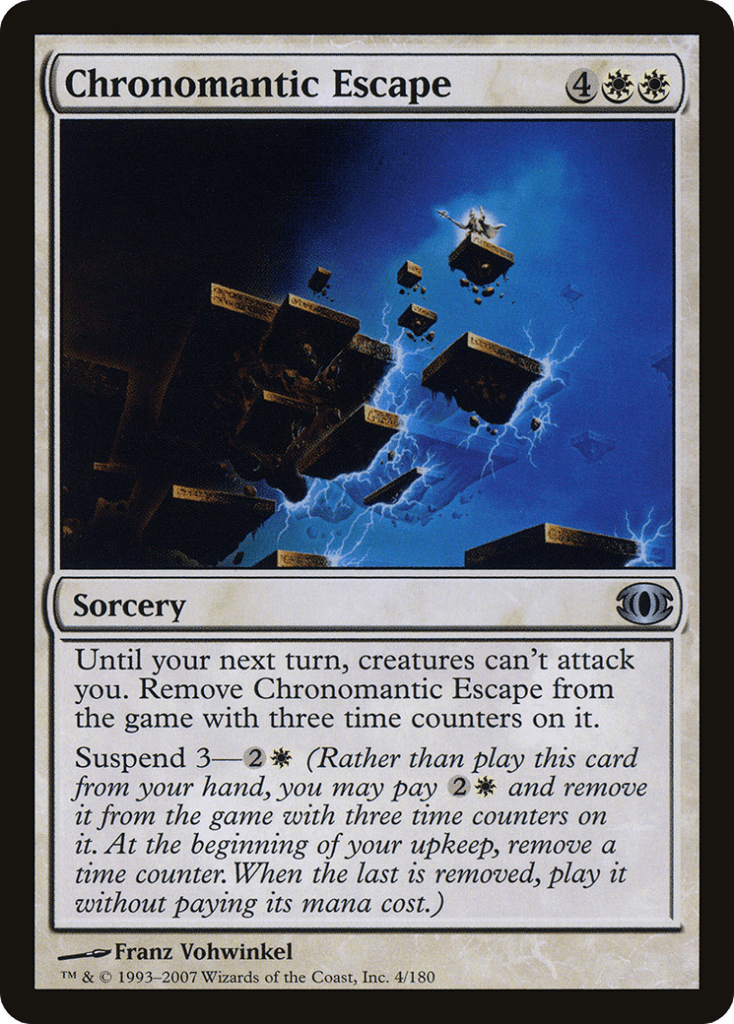
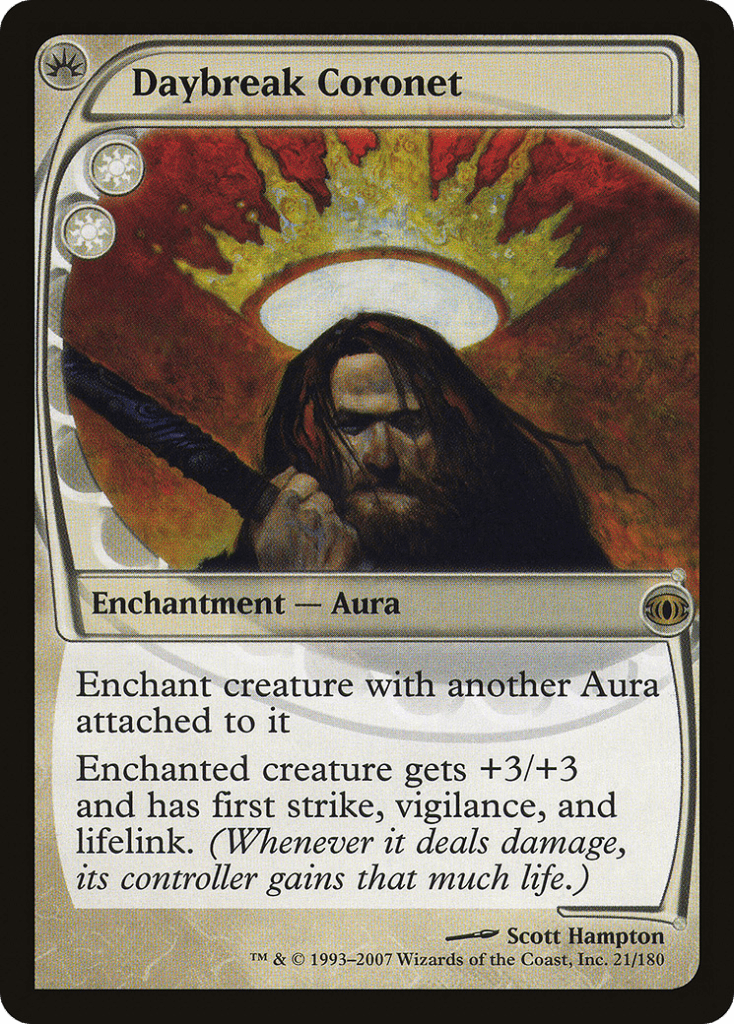
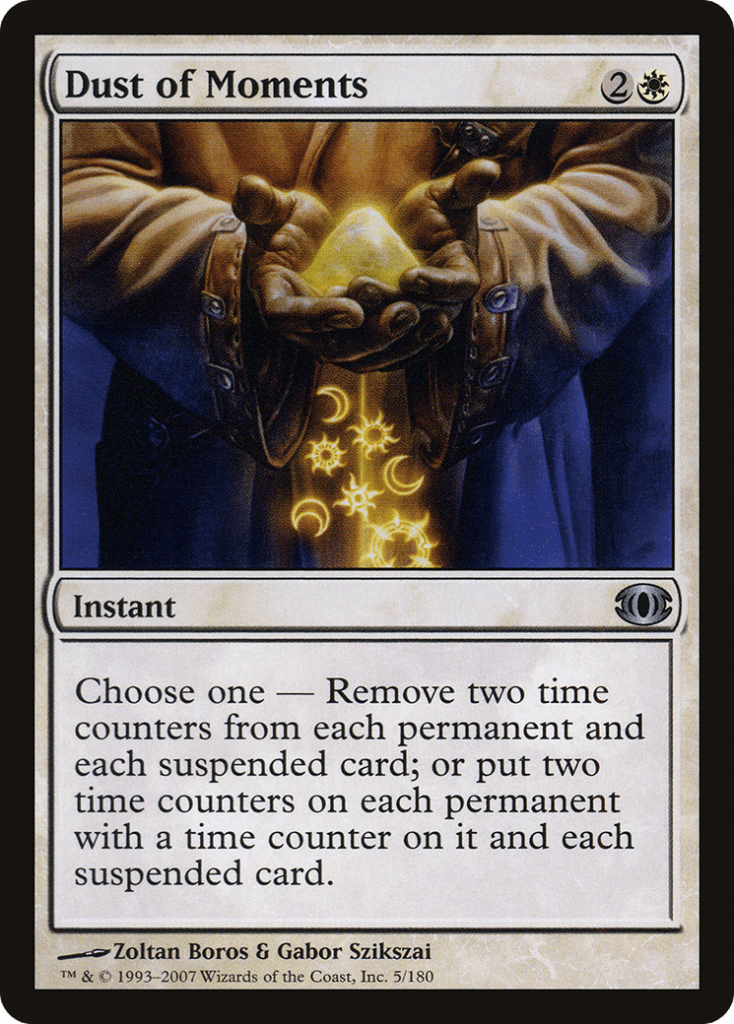
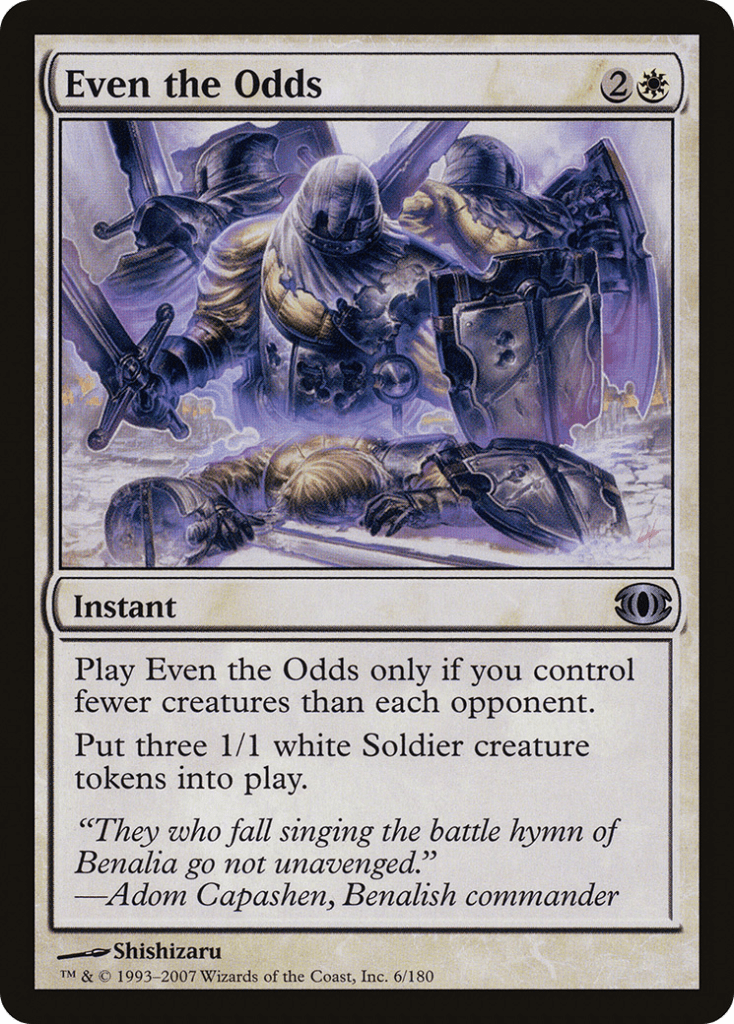
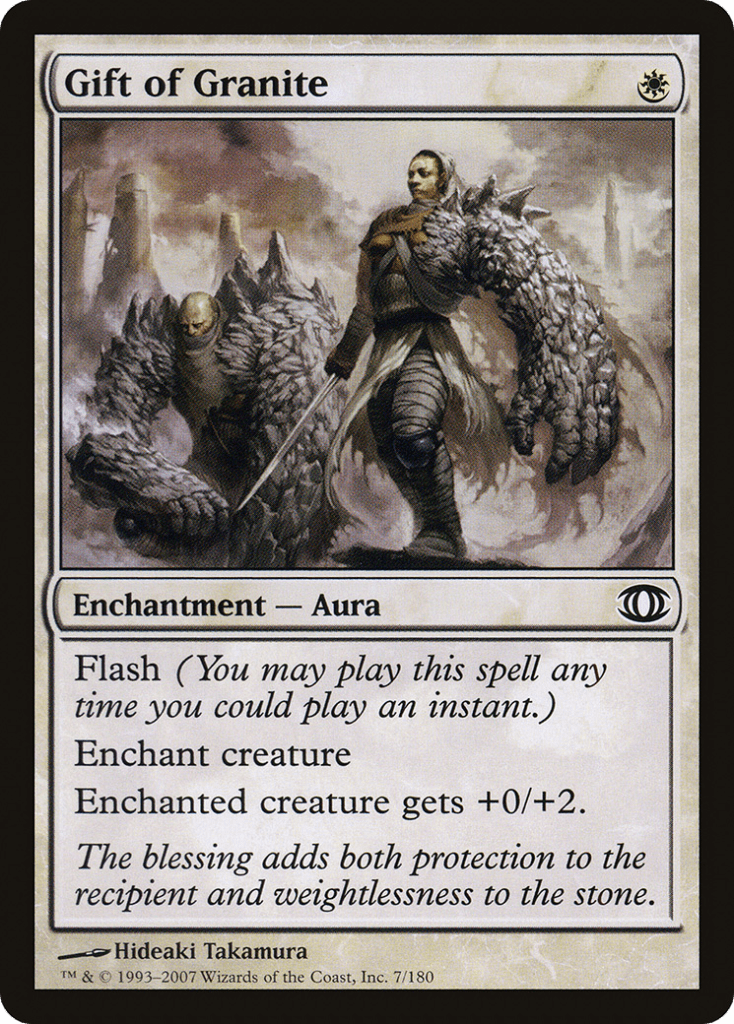



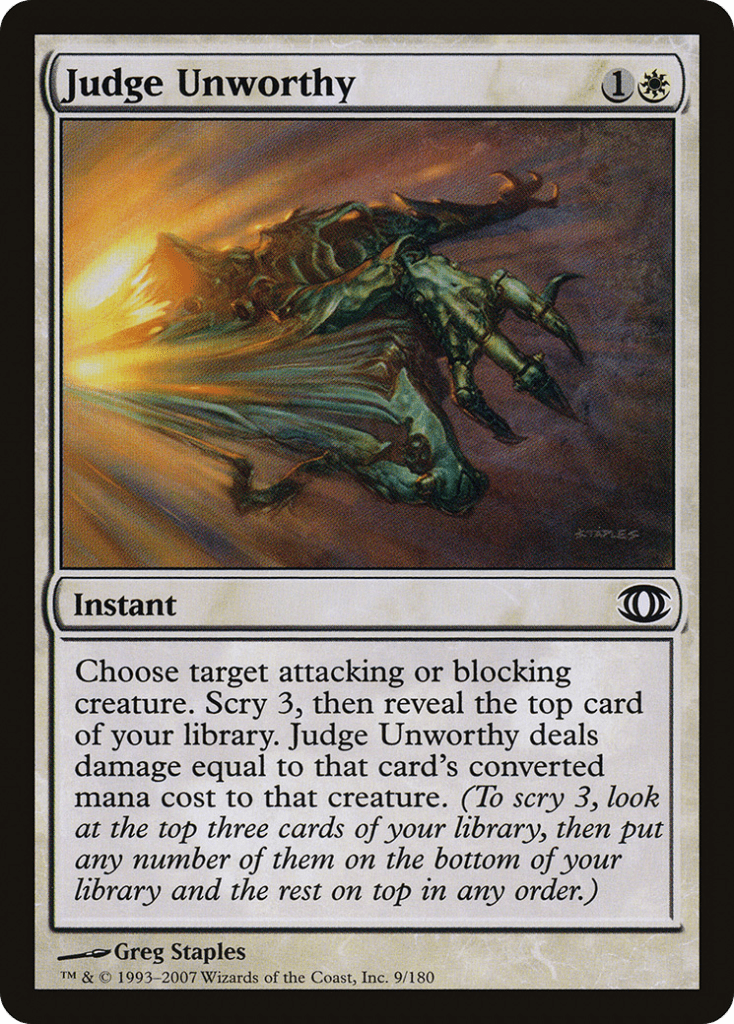
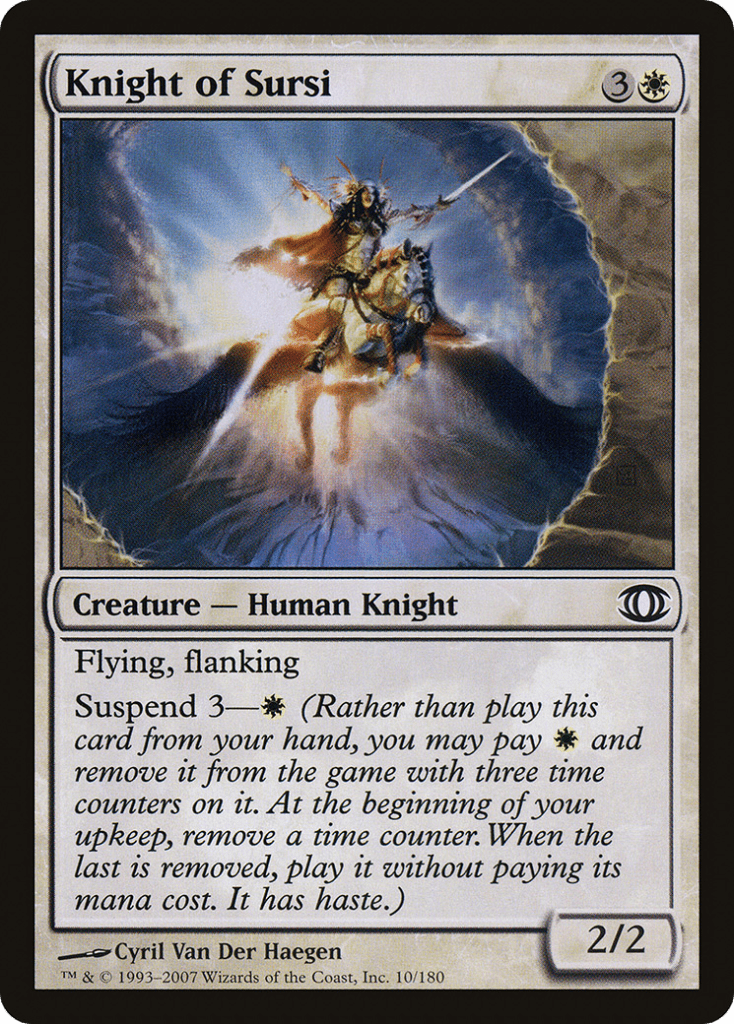

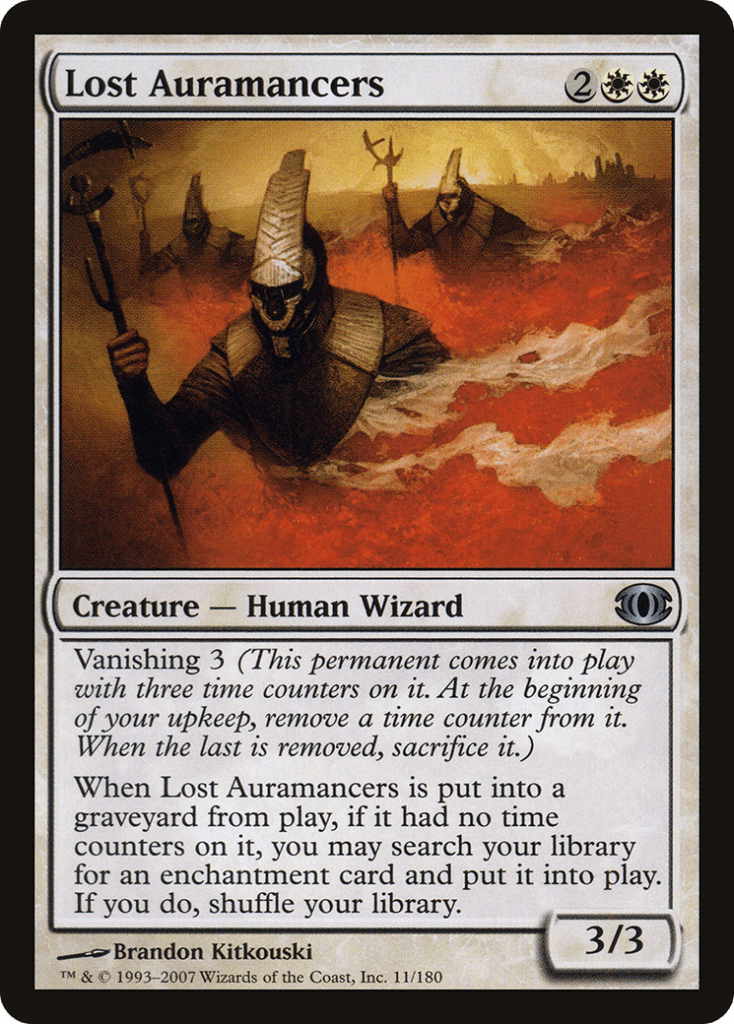

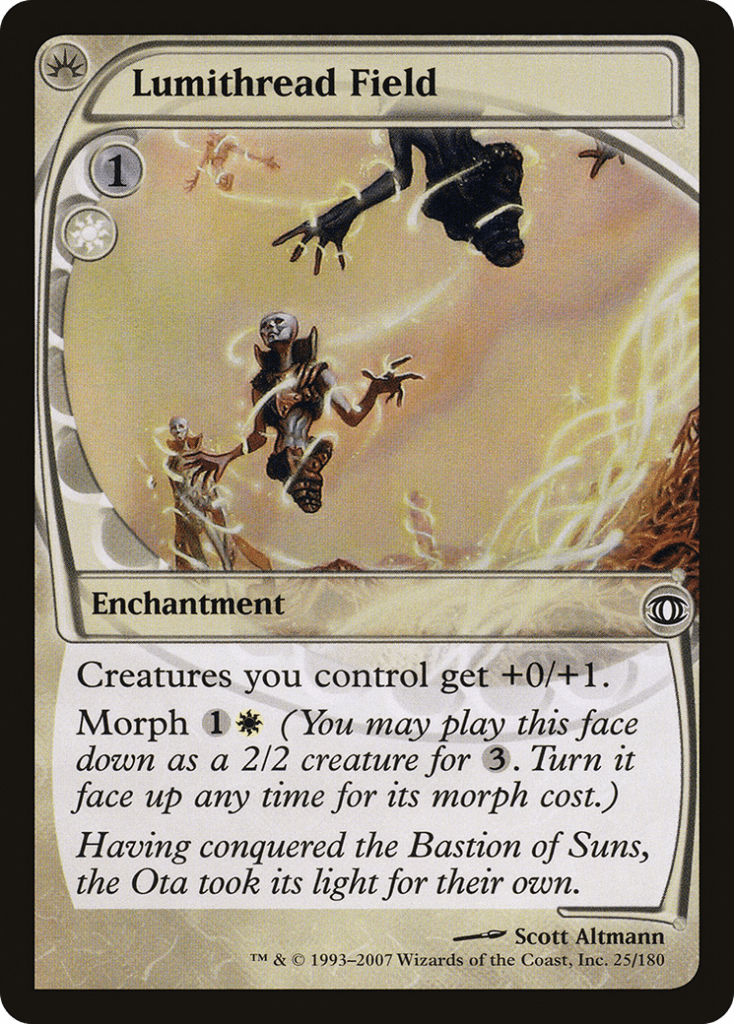

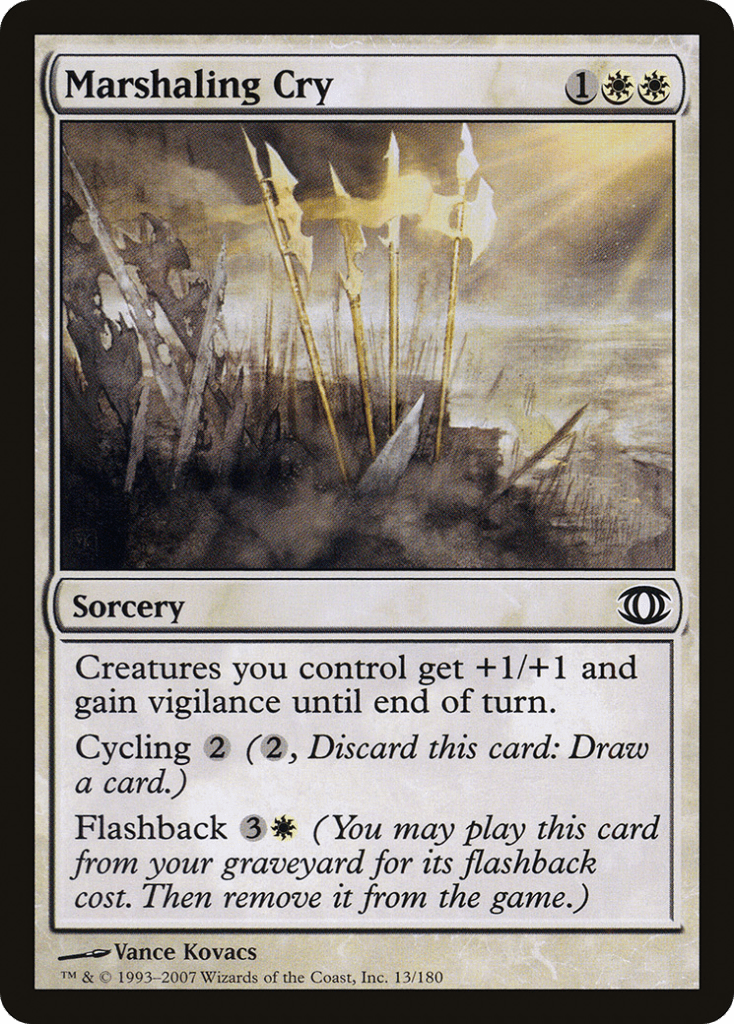
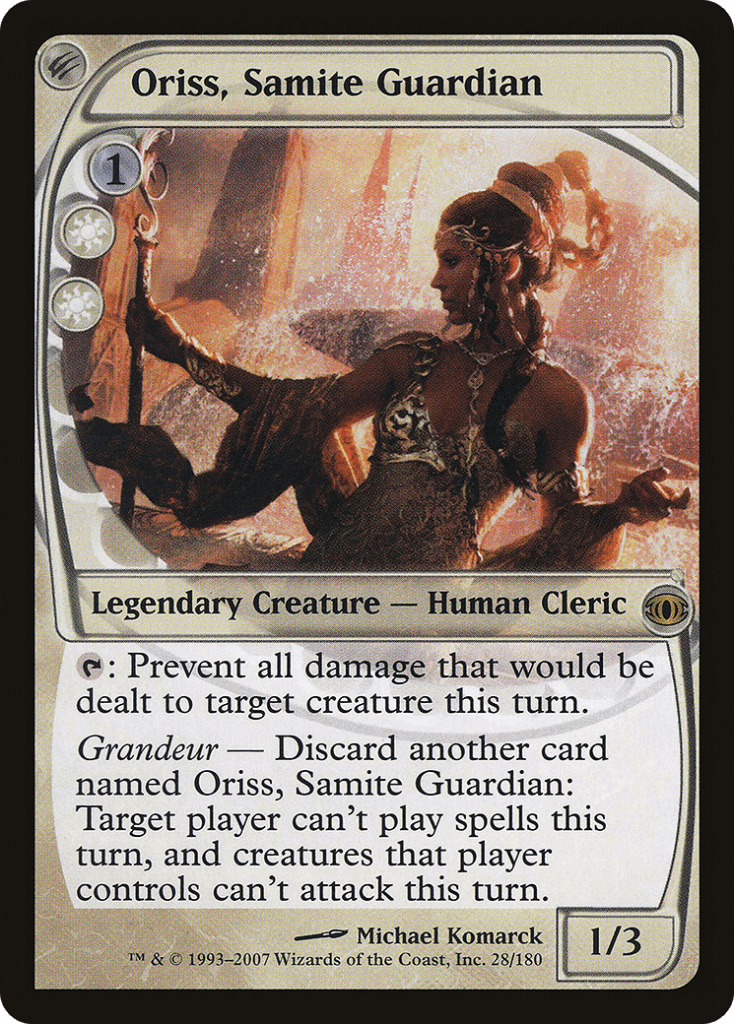
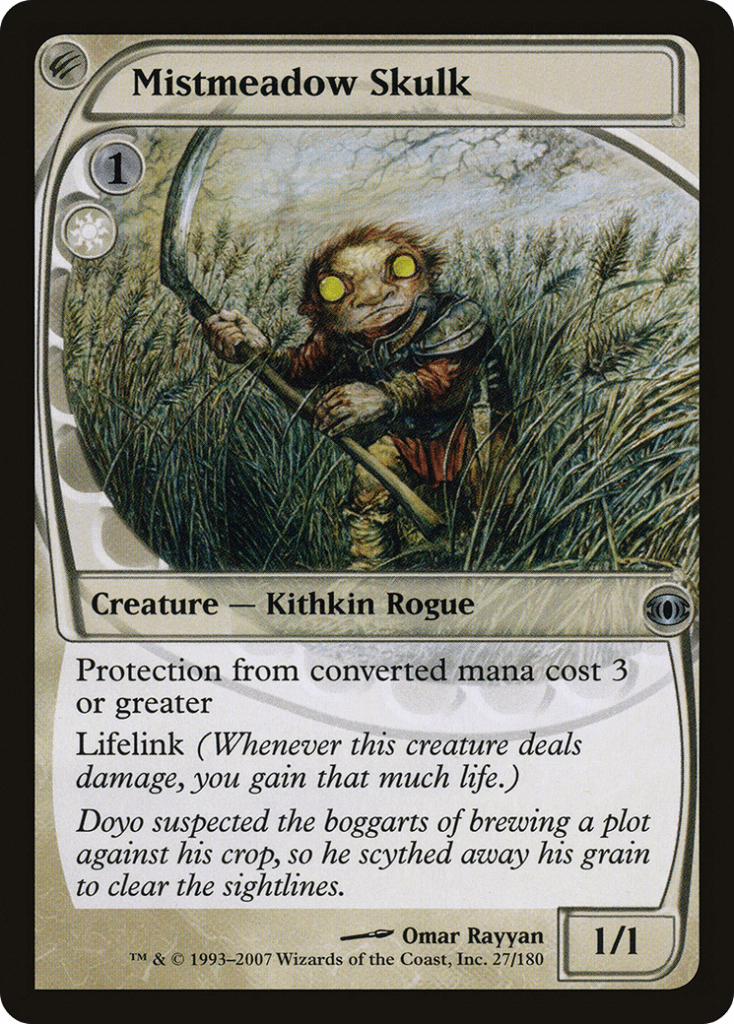

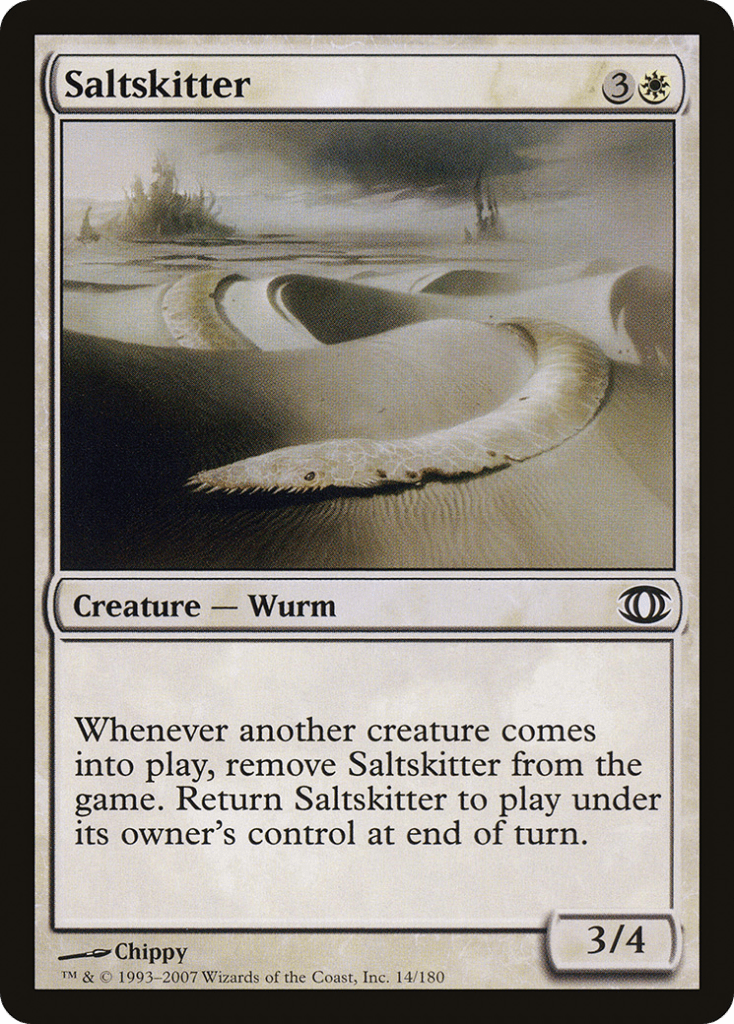
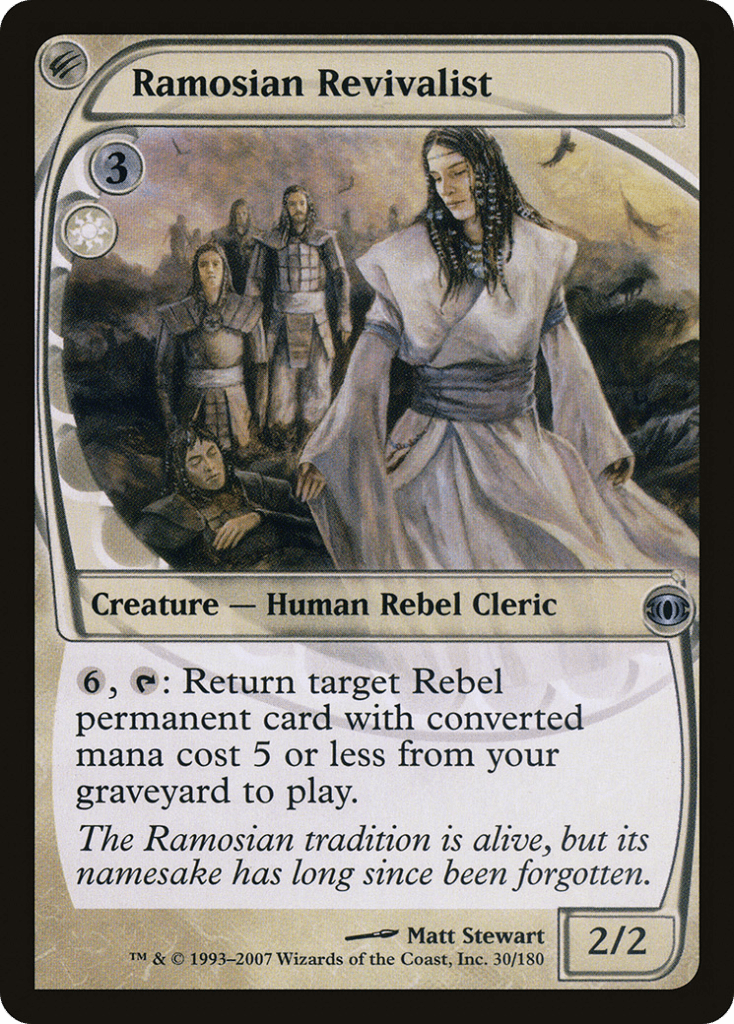
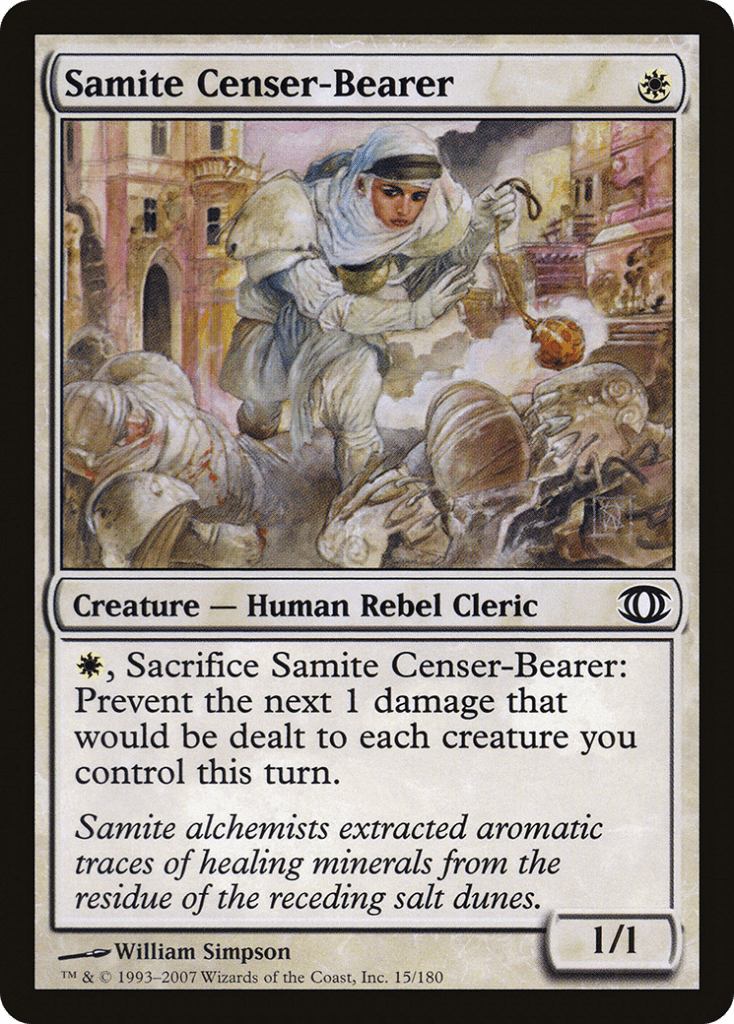



Blue
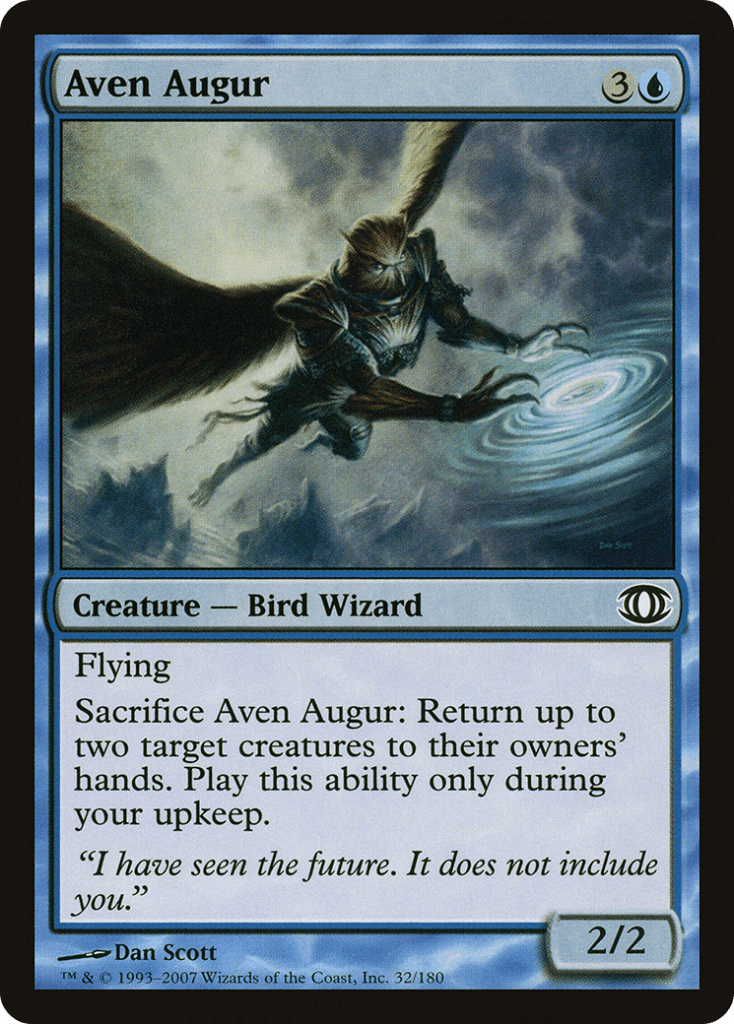
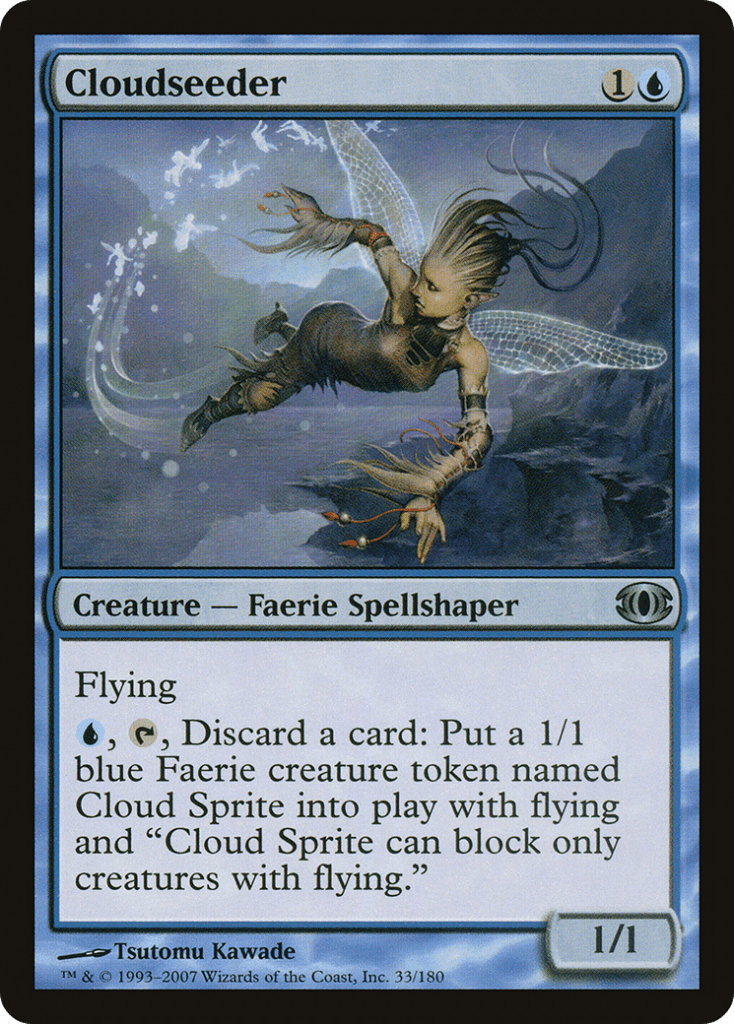

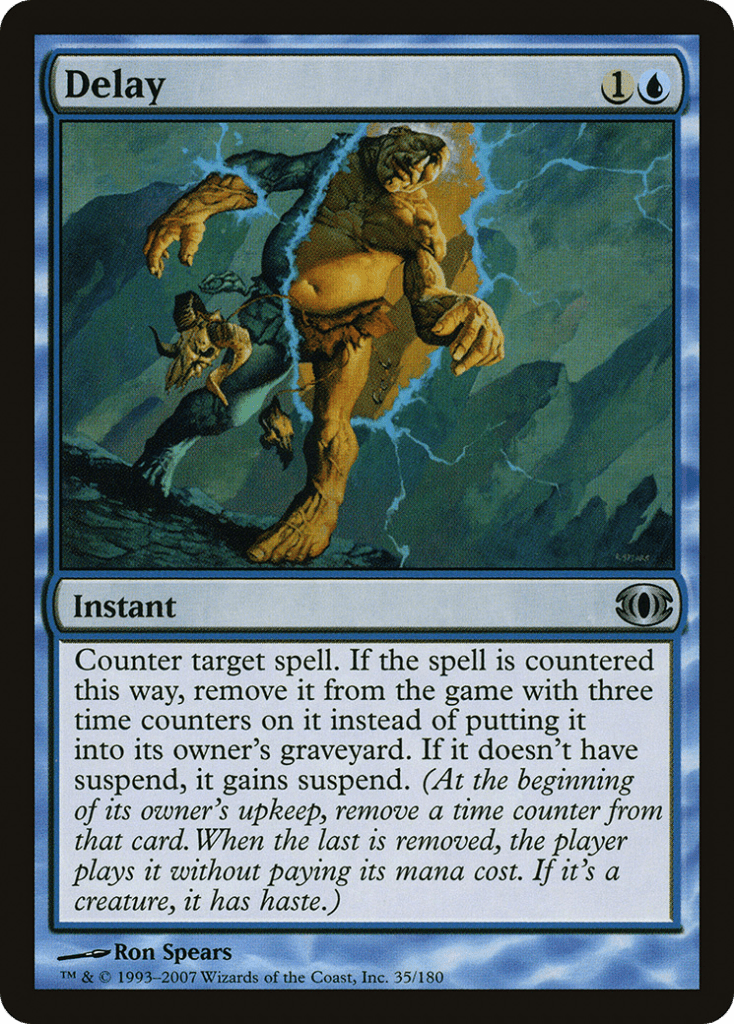
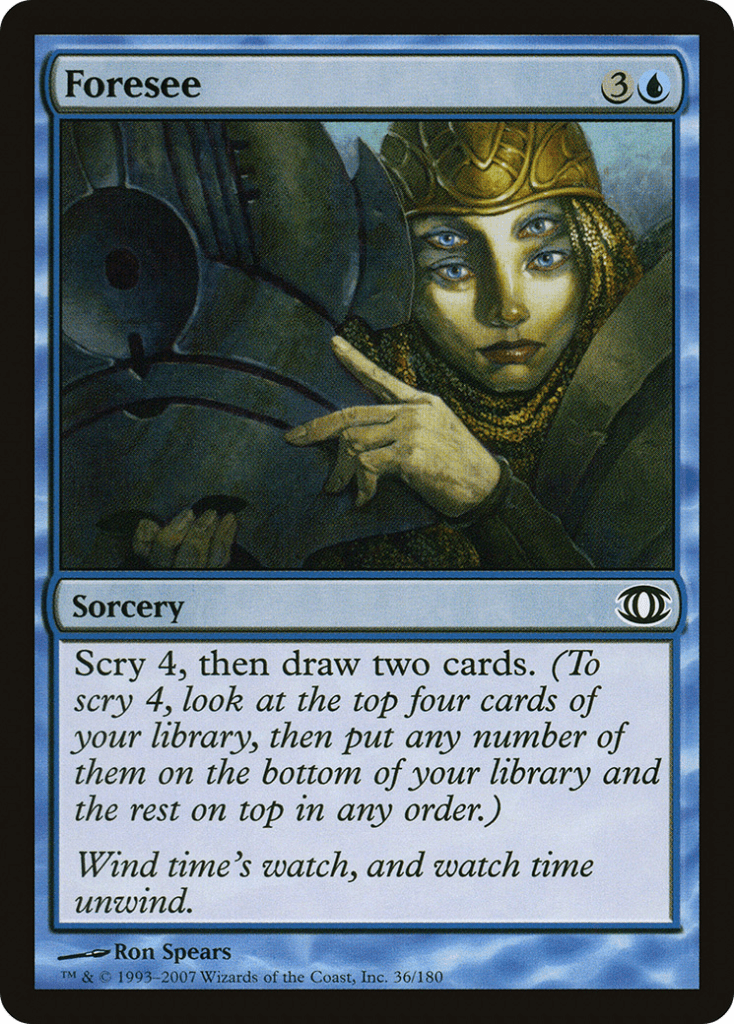
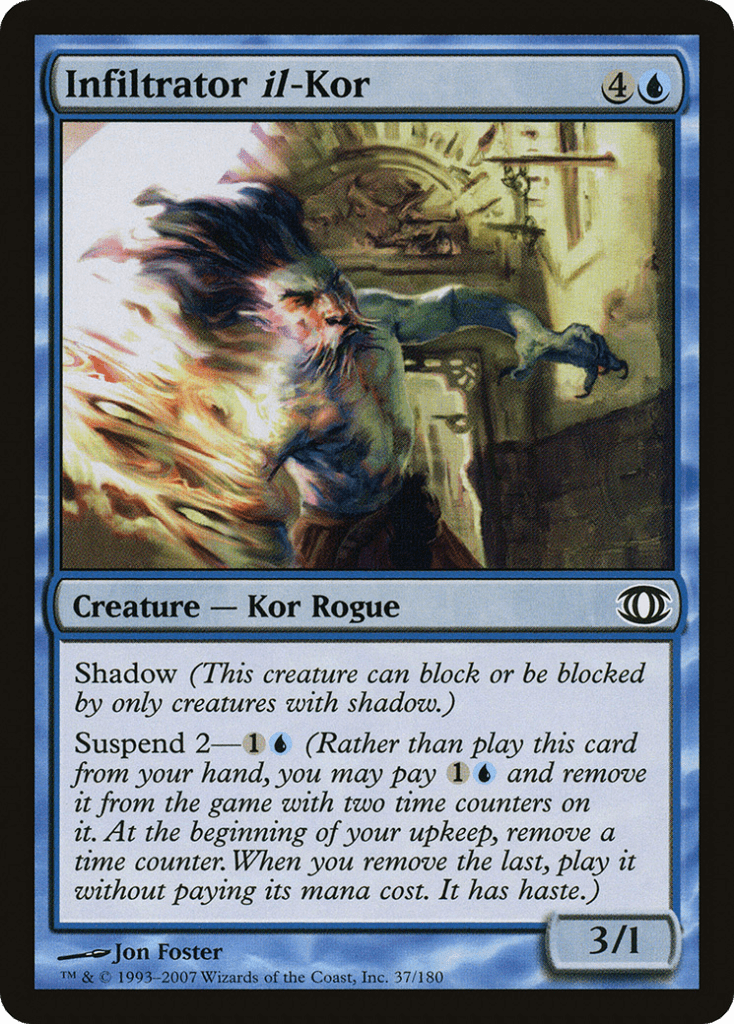
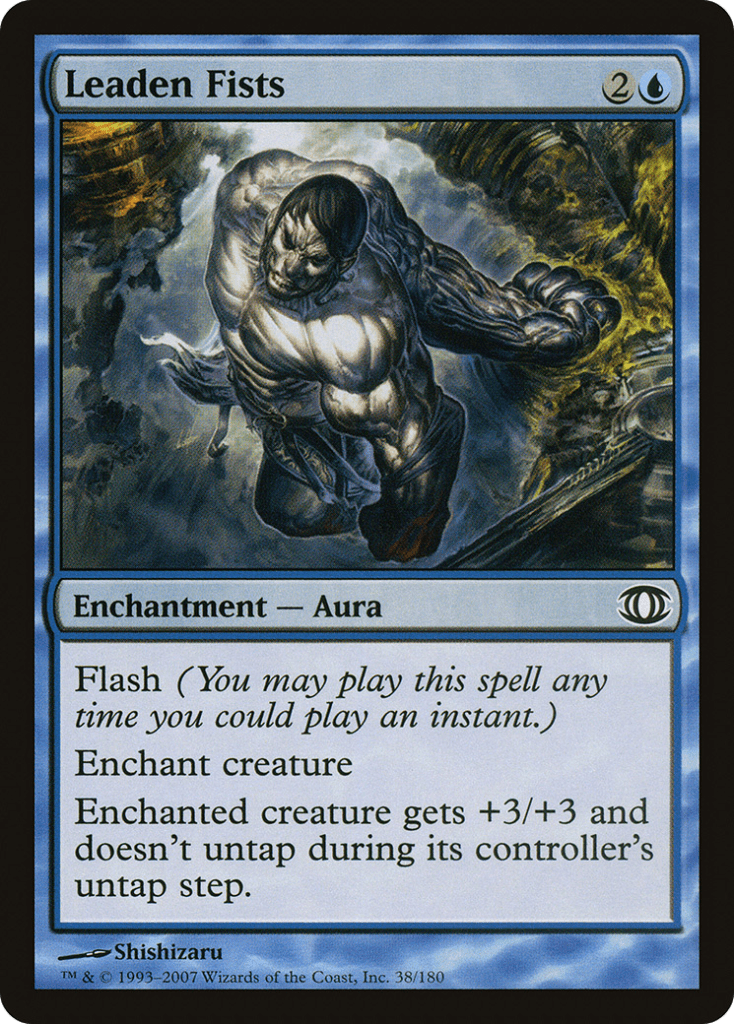

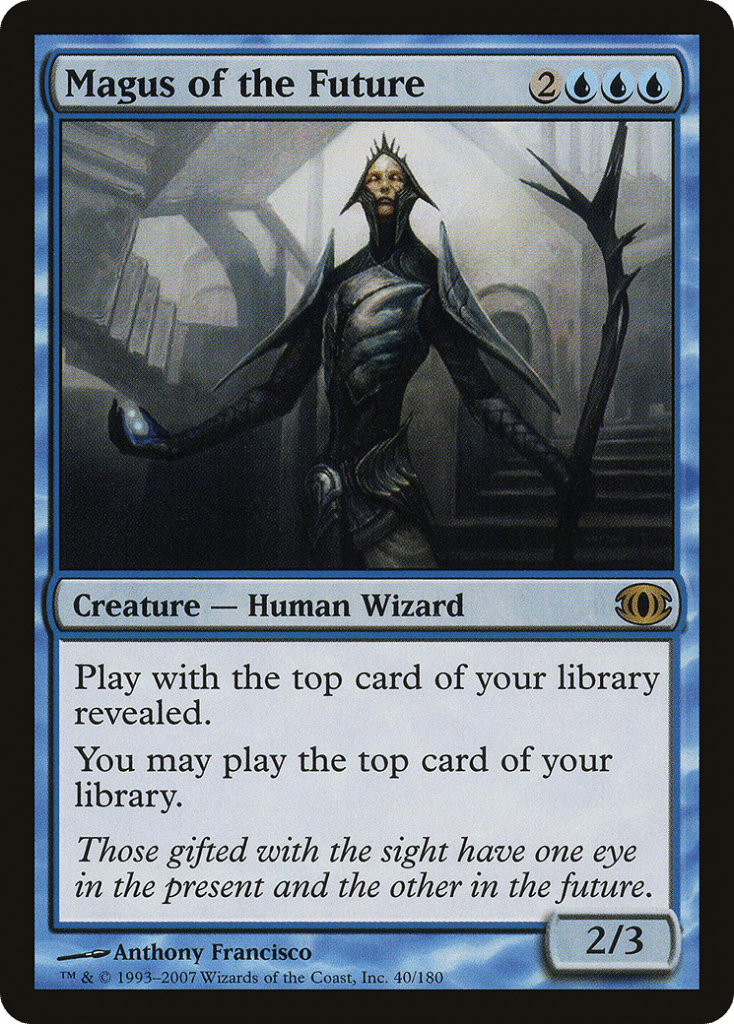


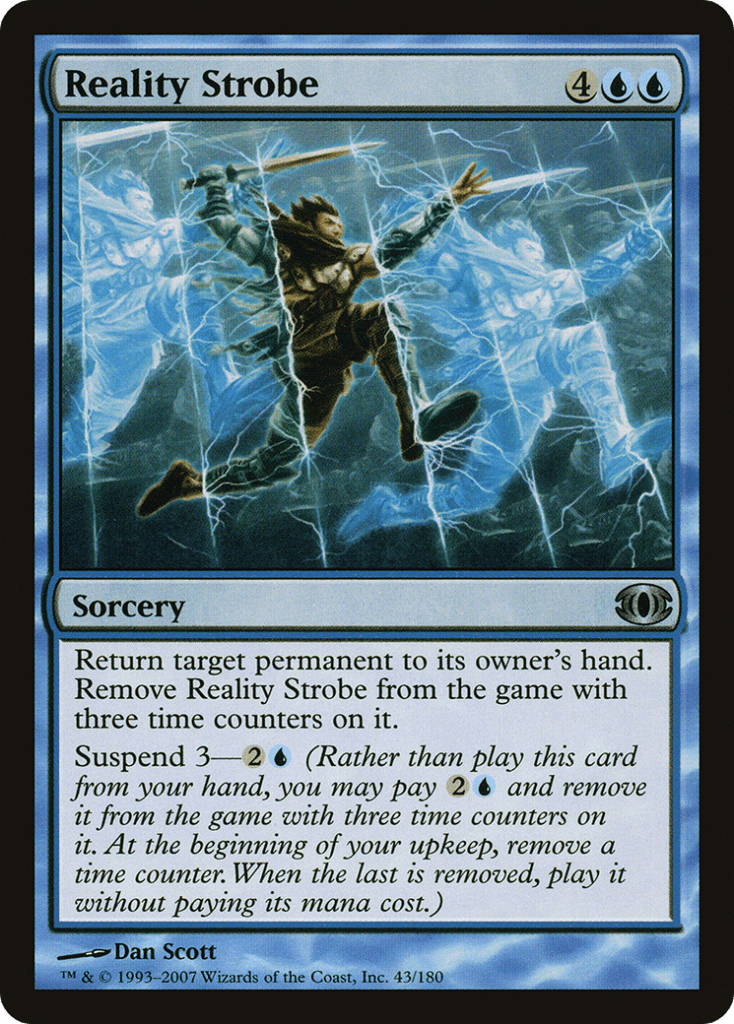
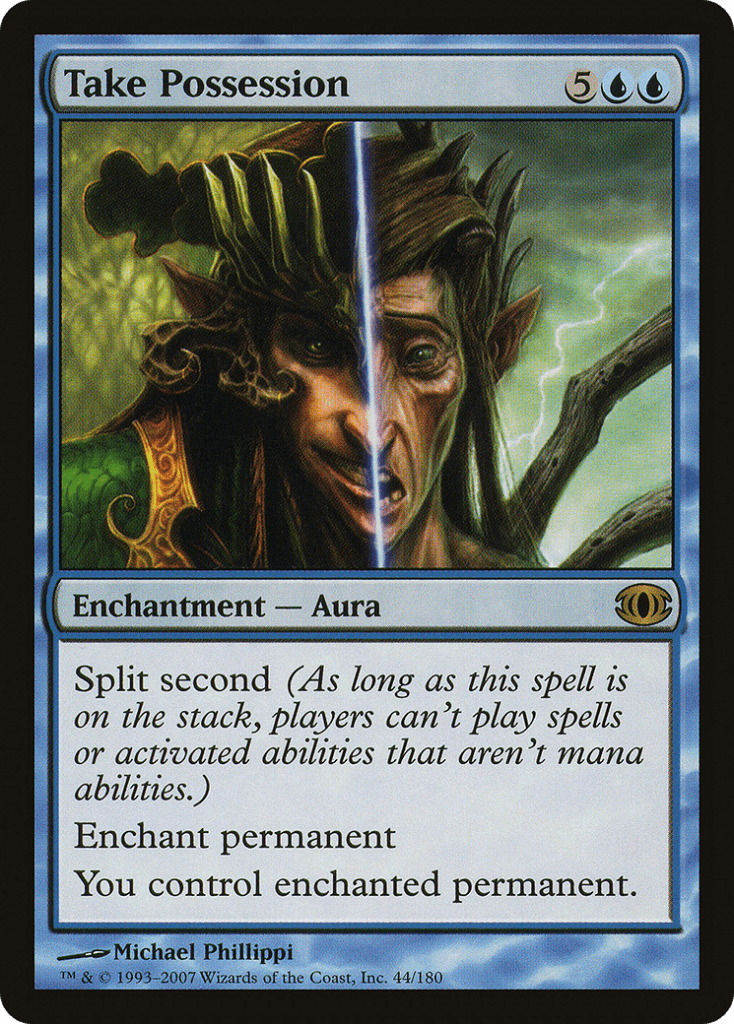

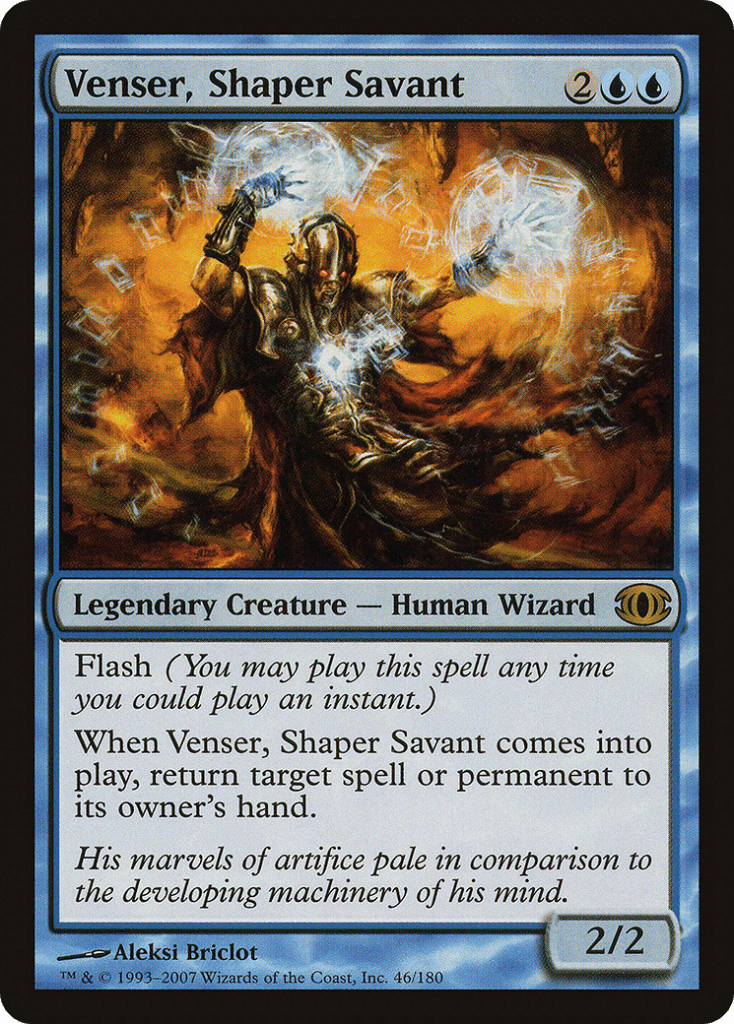
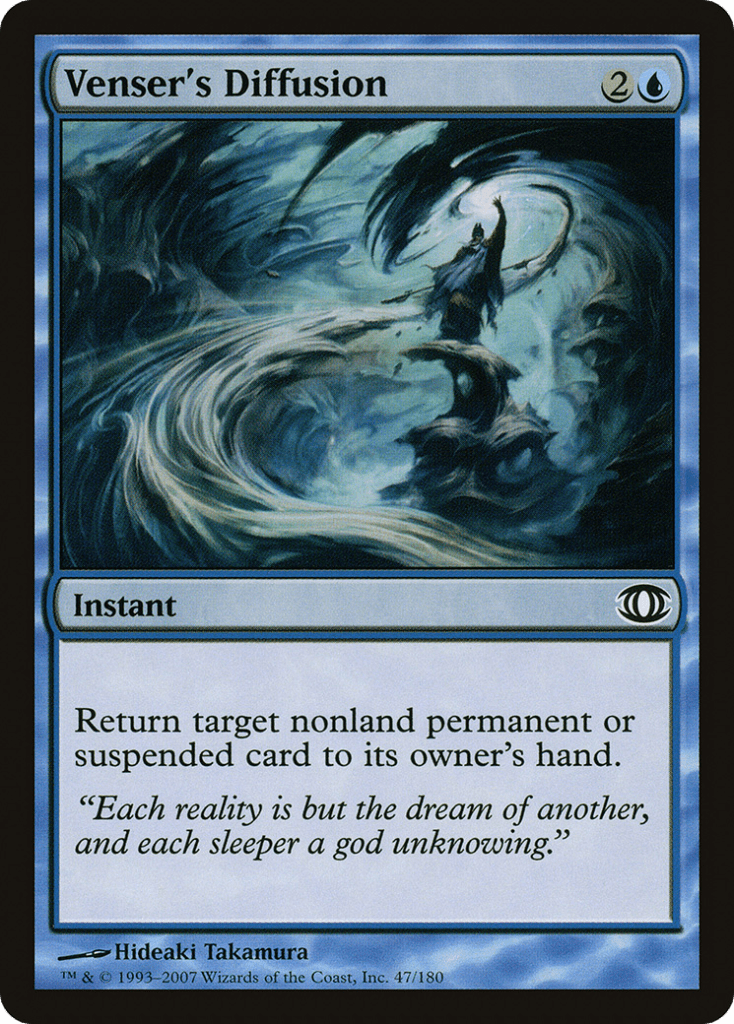
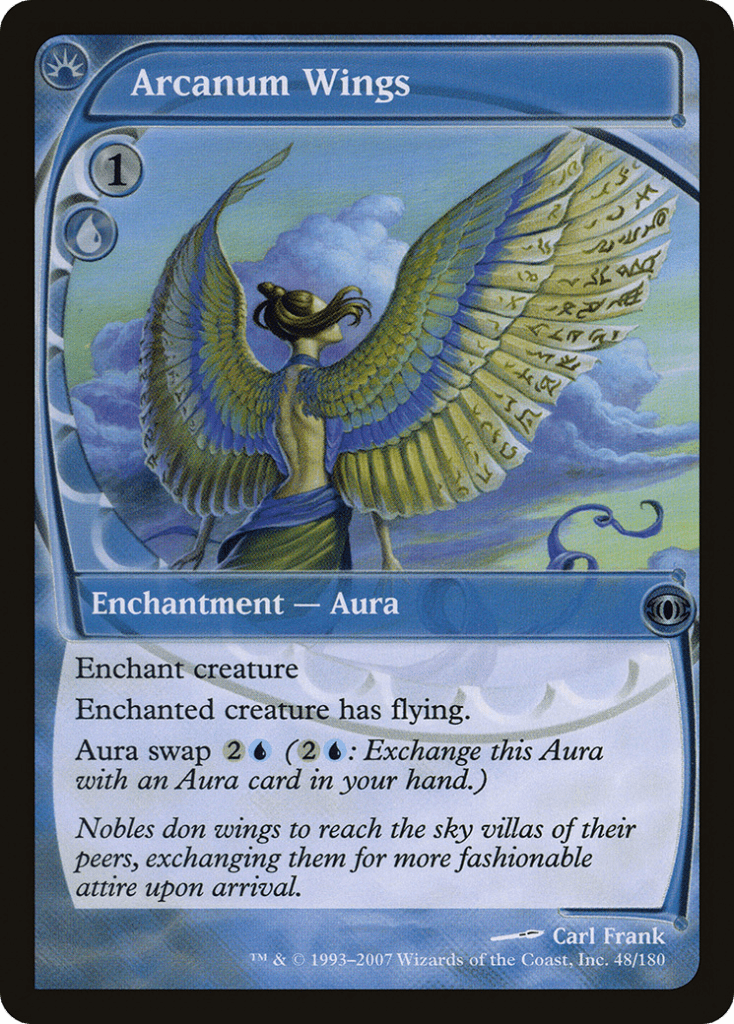
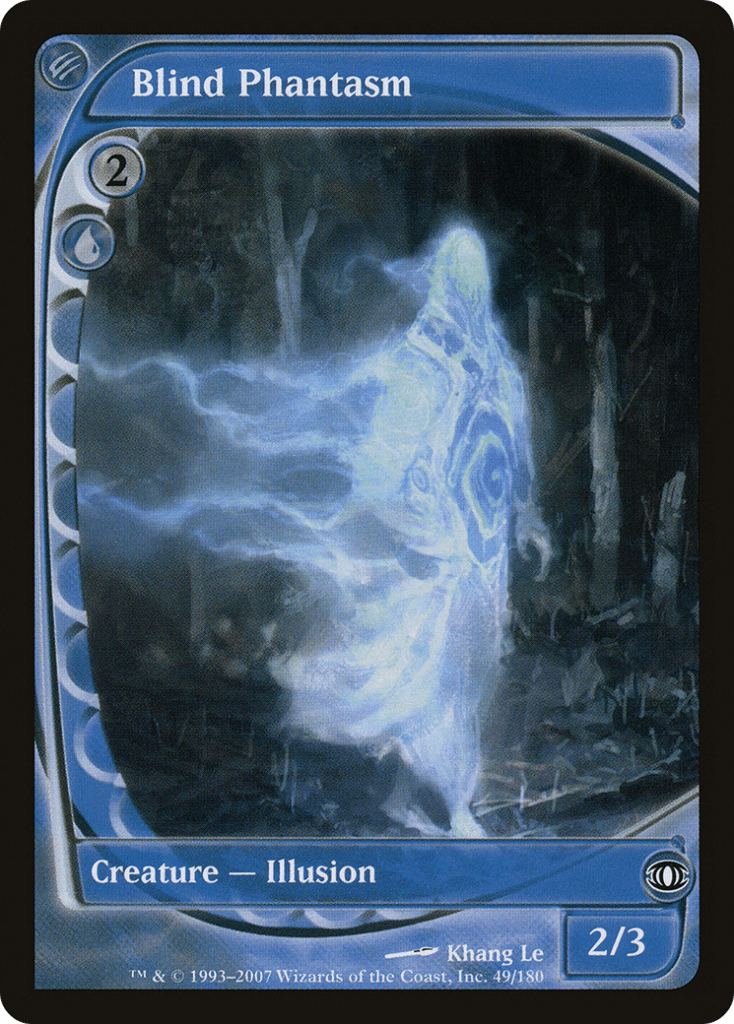
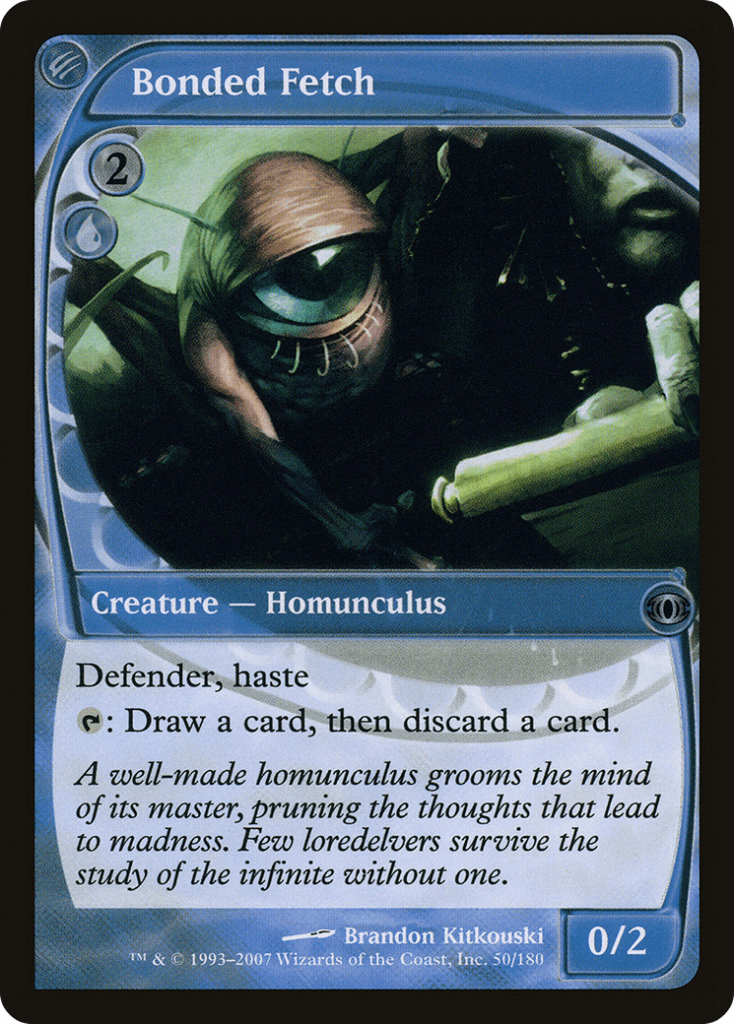


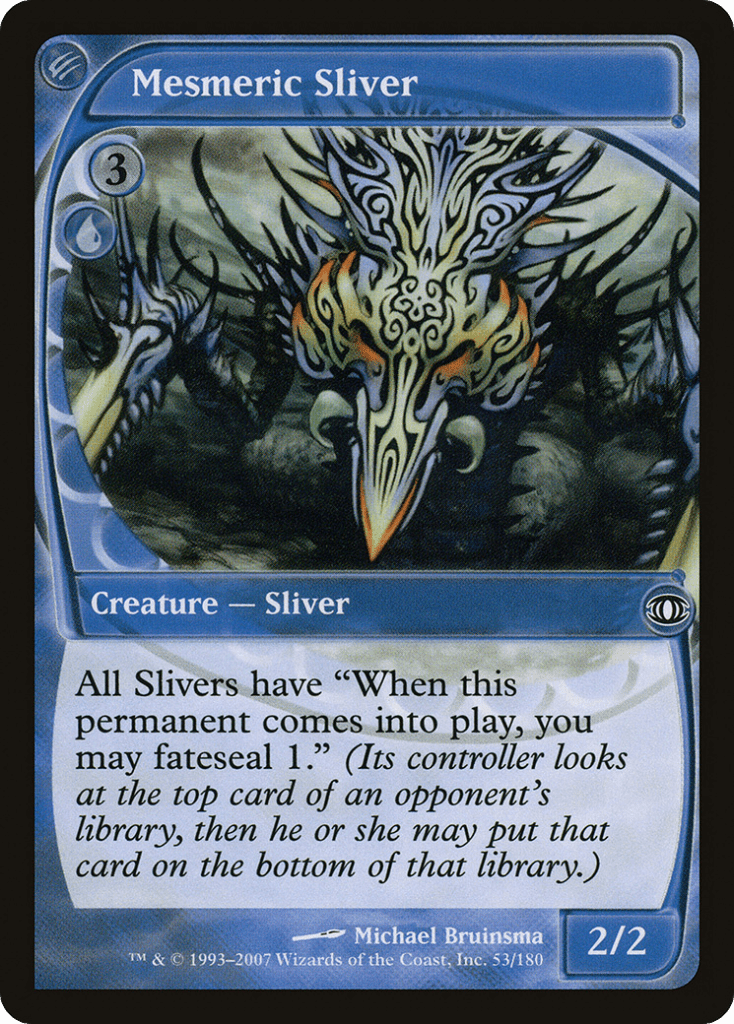
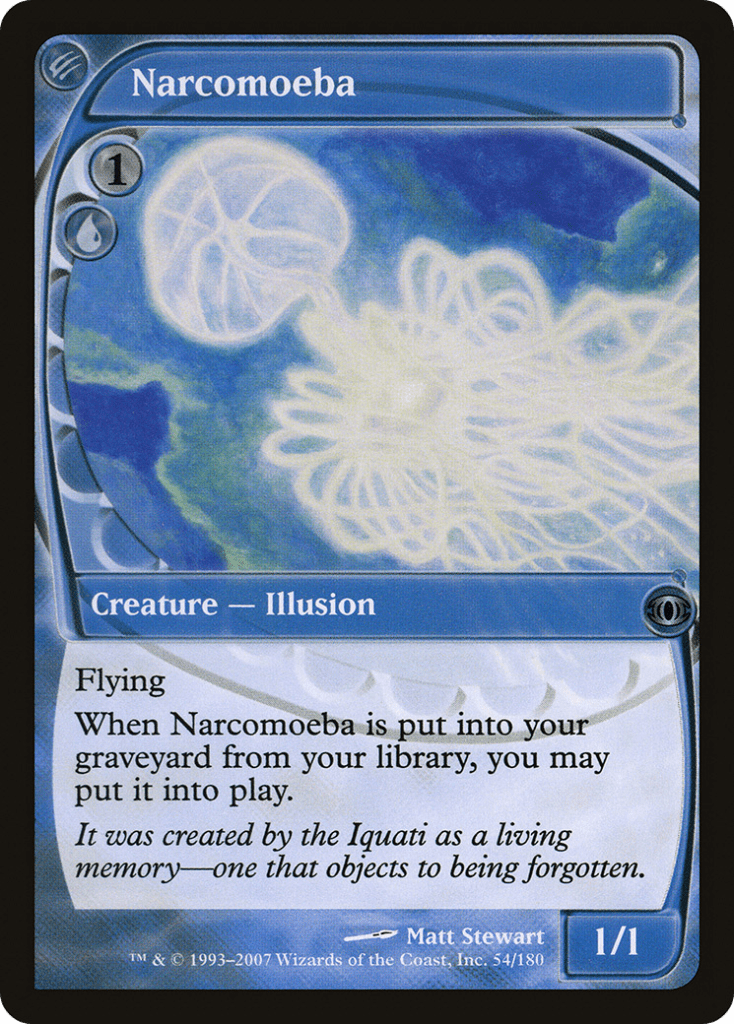
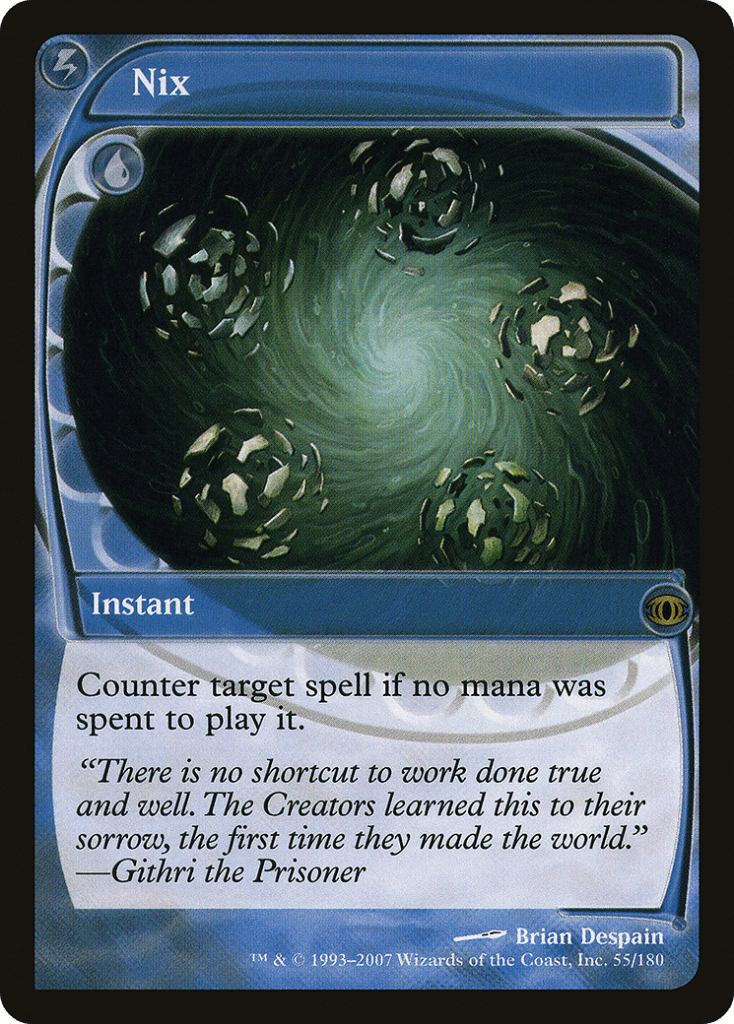
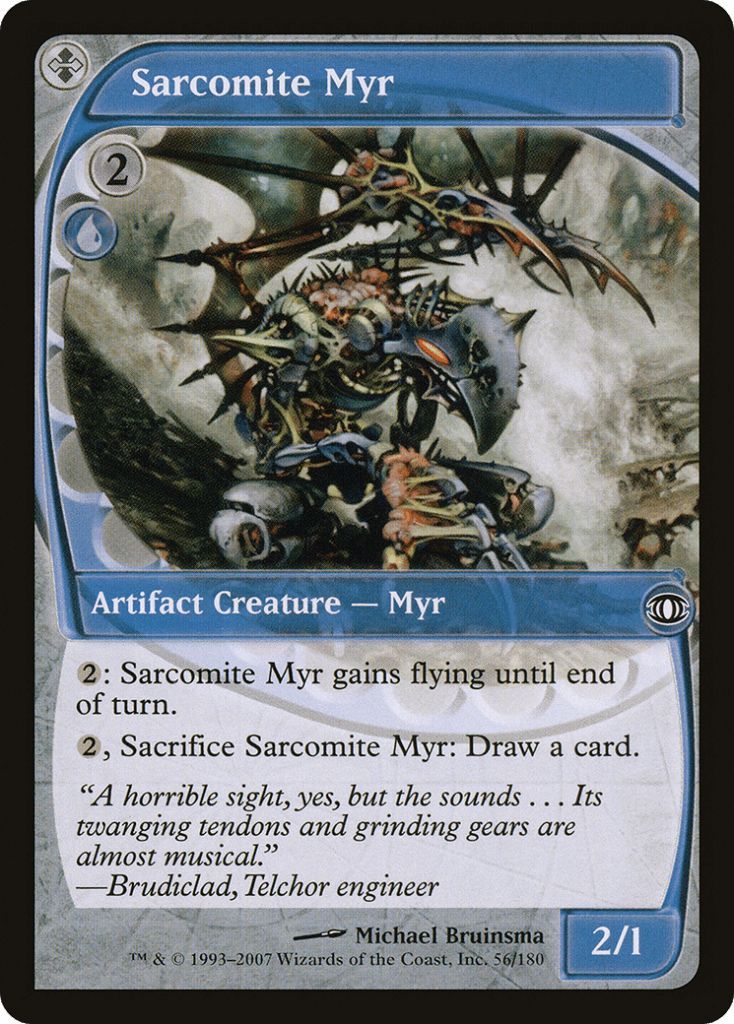

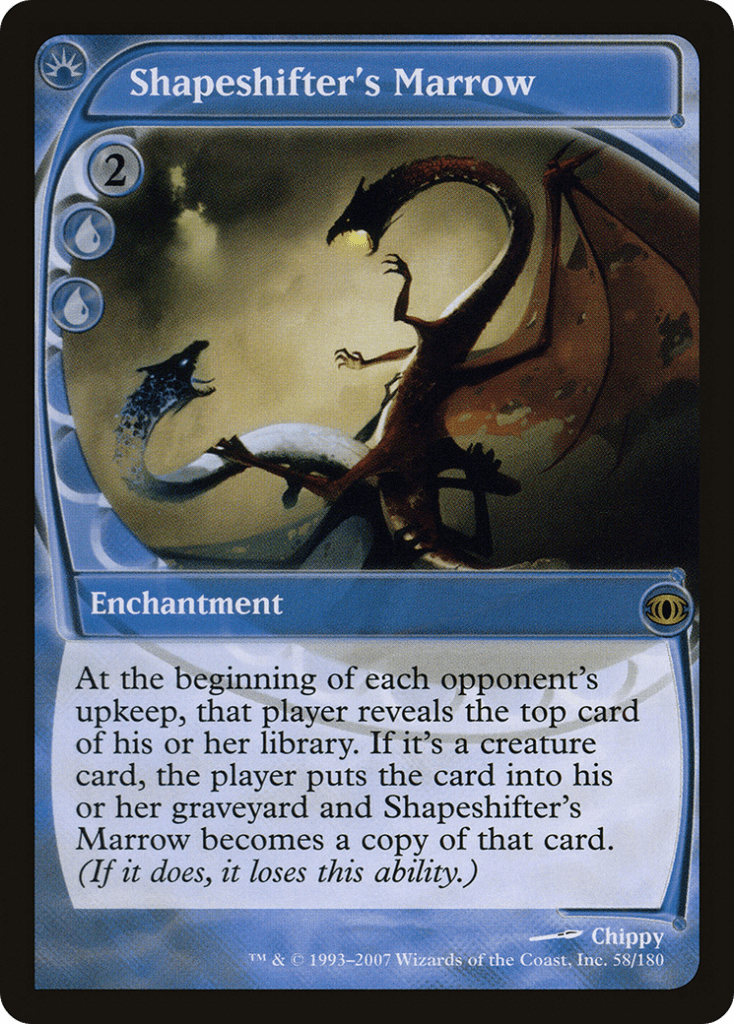
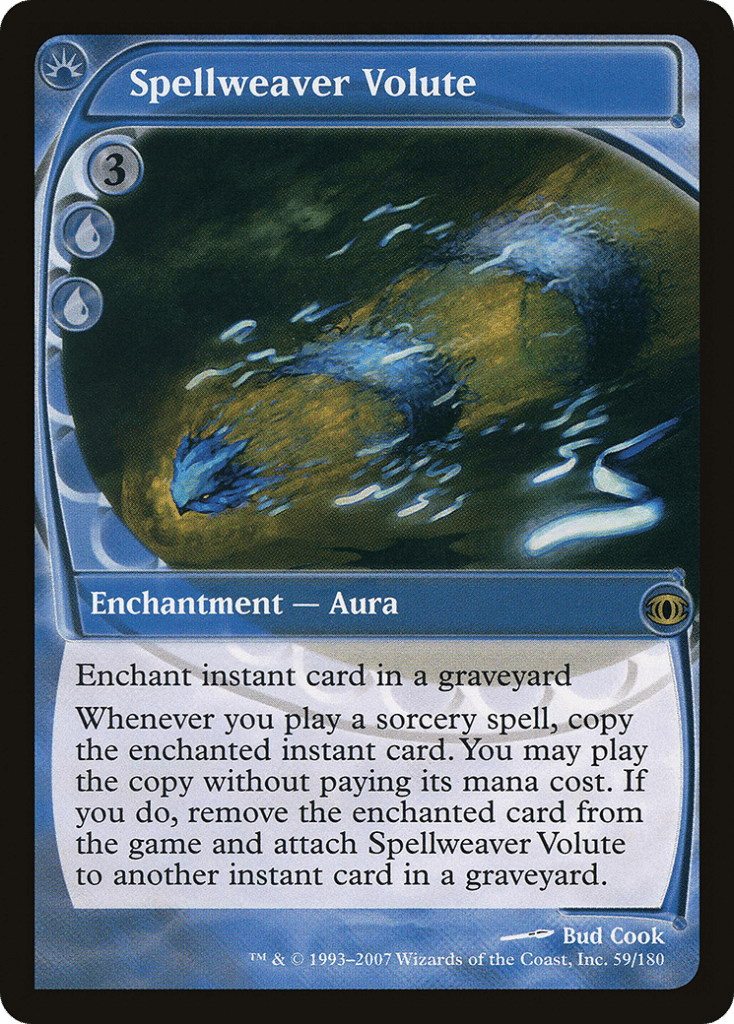
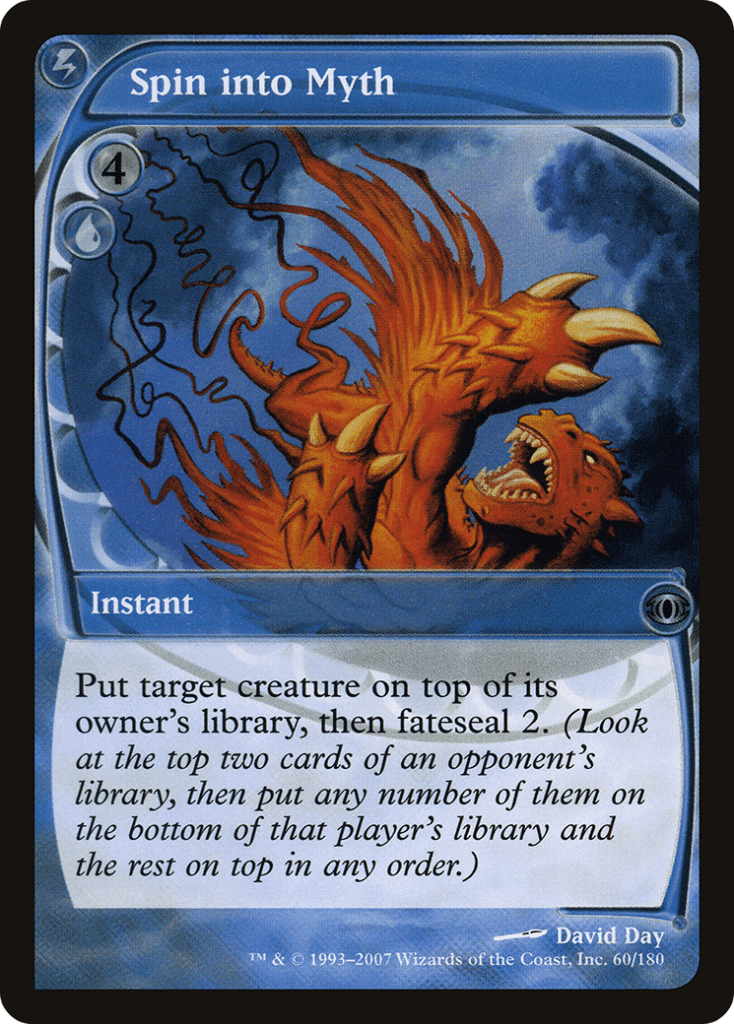

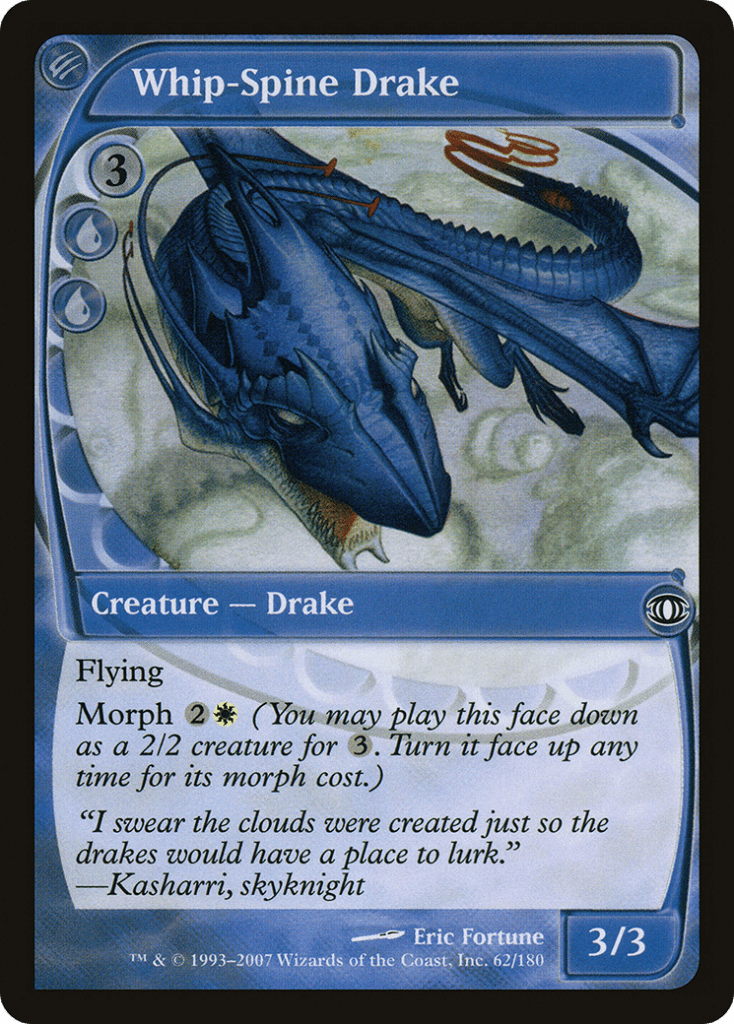
Black

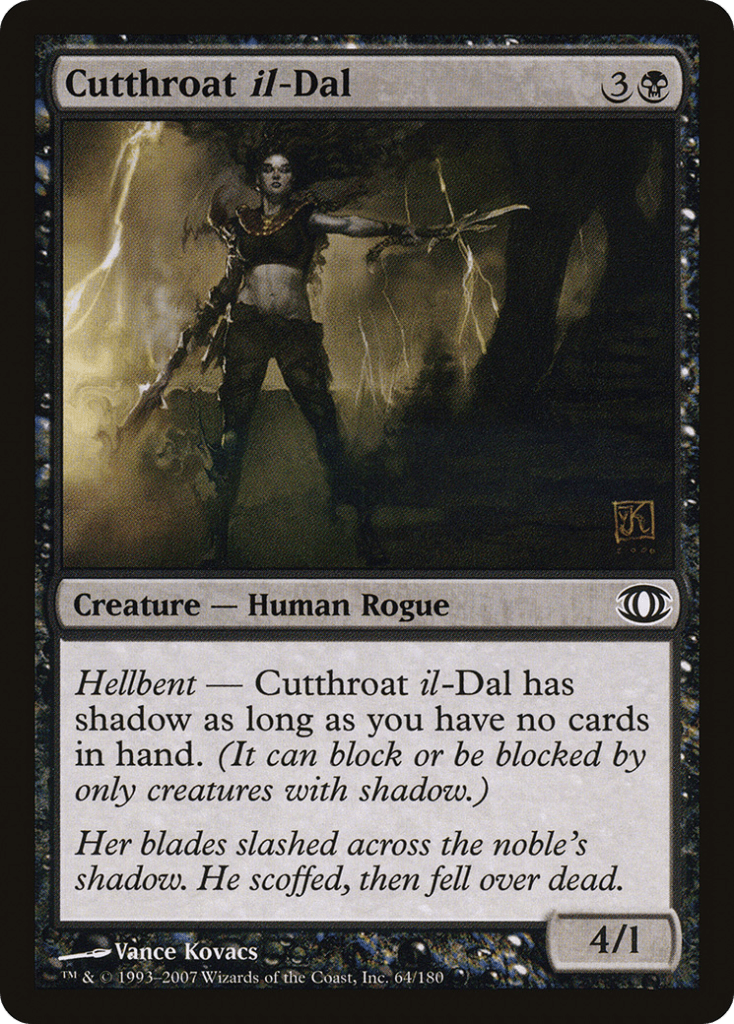
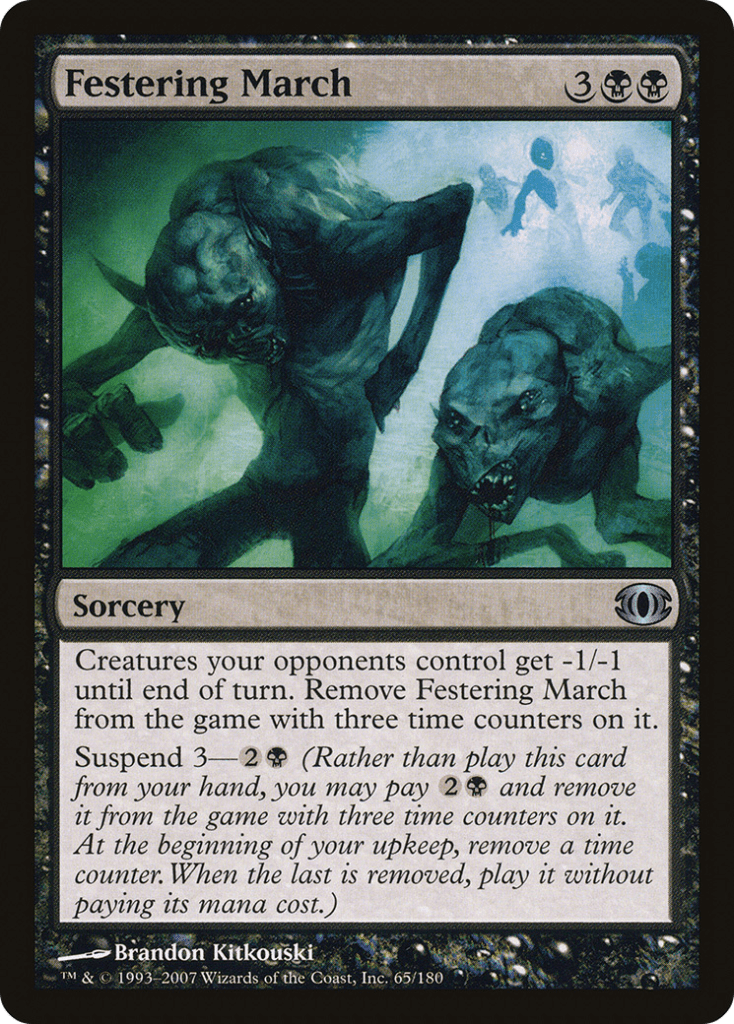
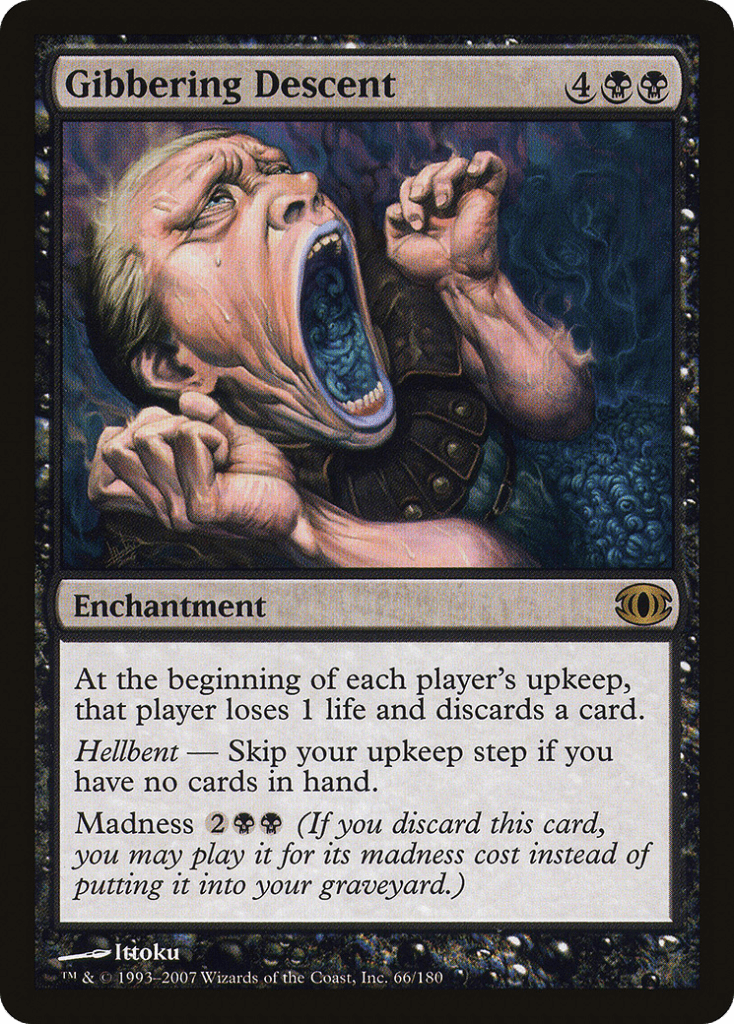
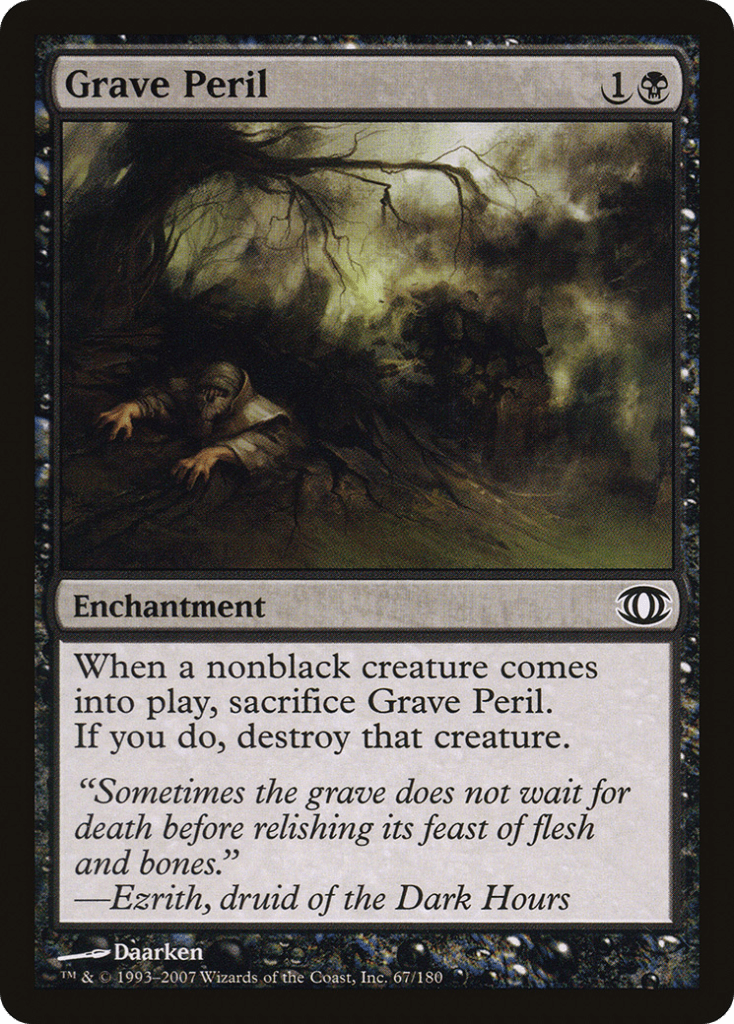

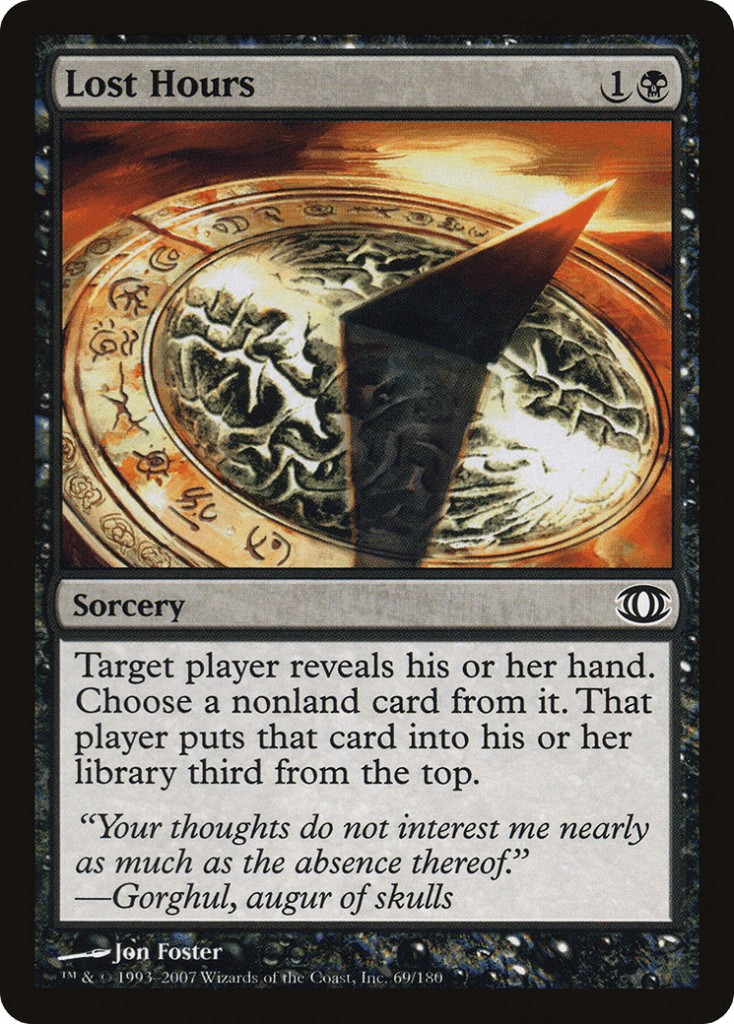
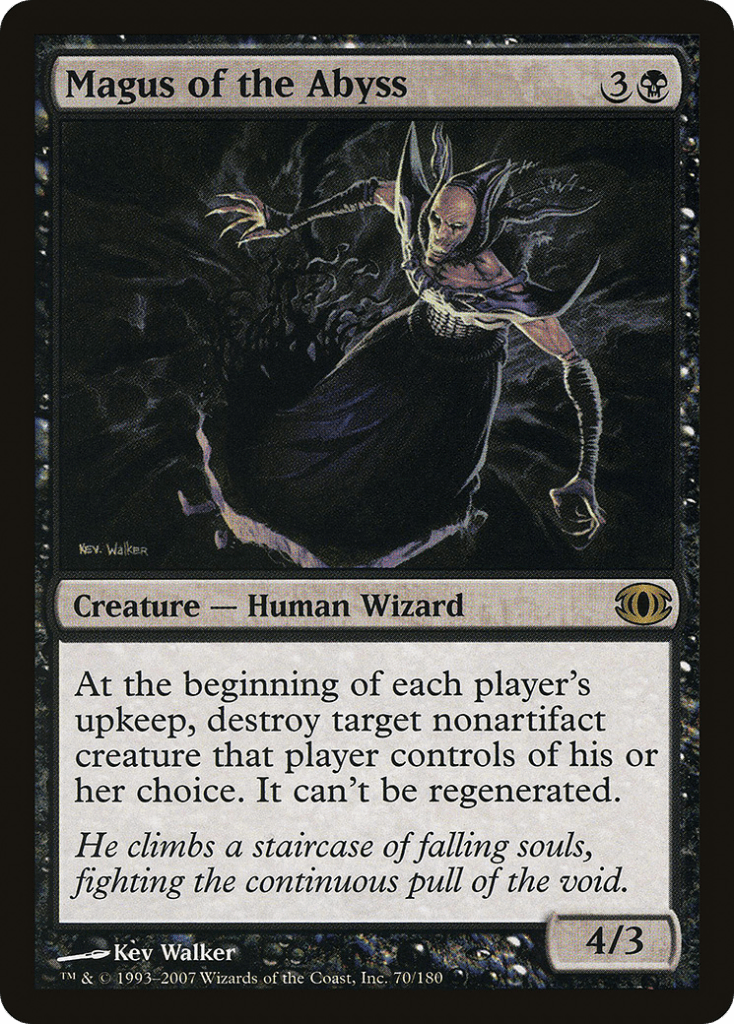
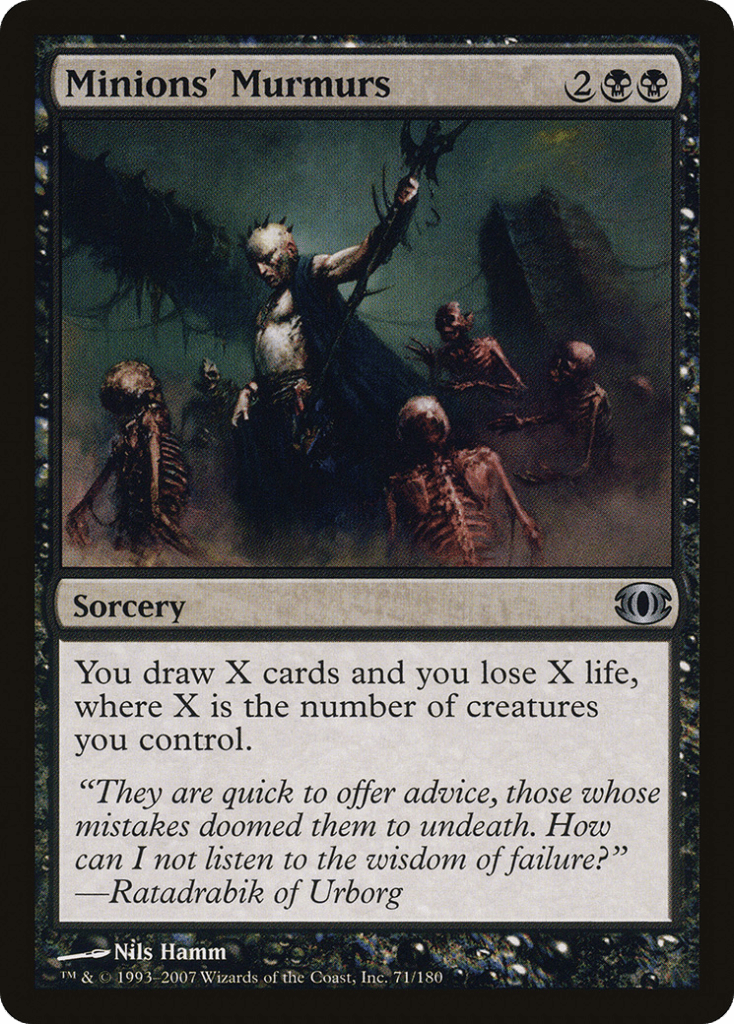
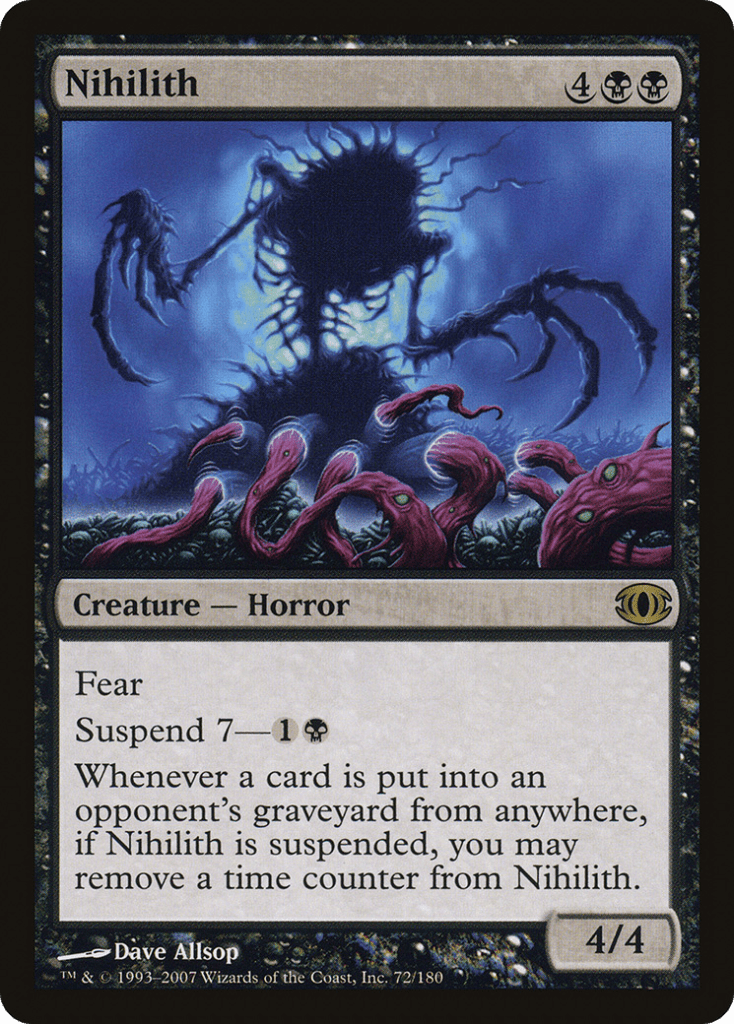

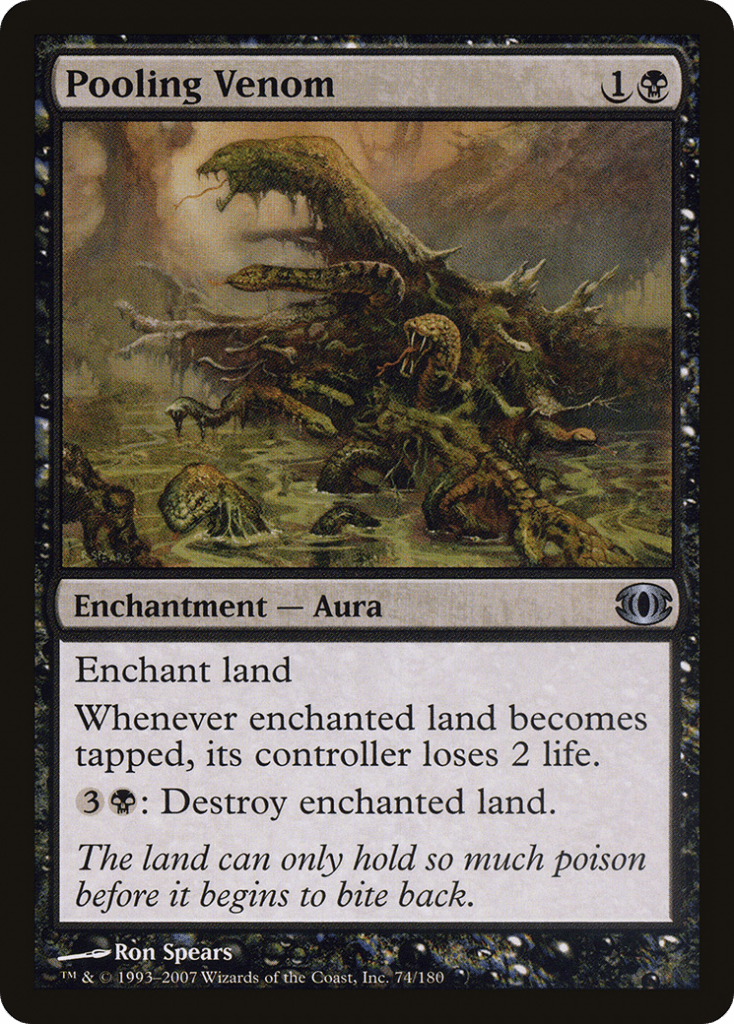

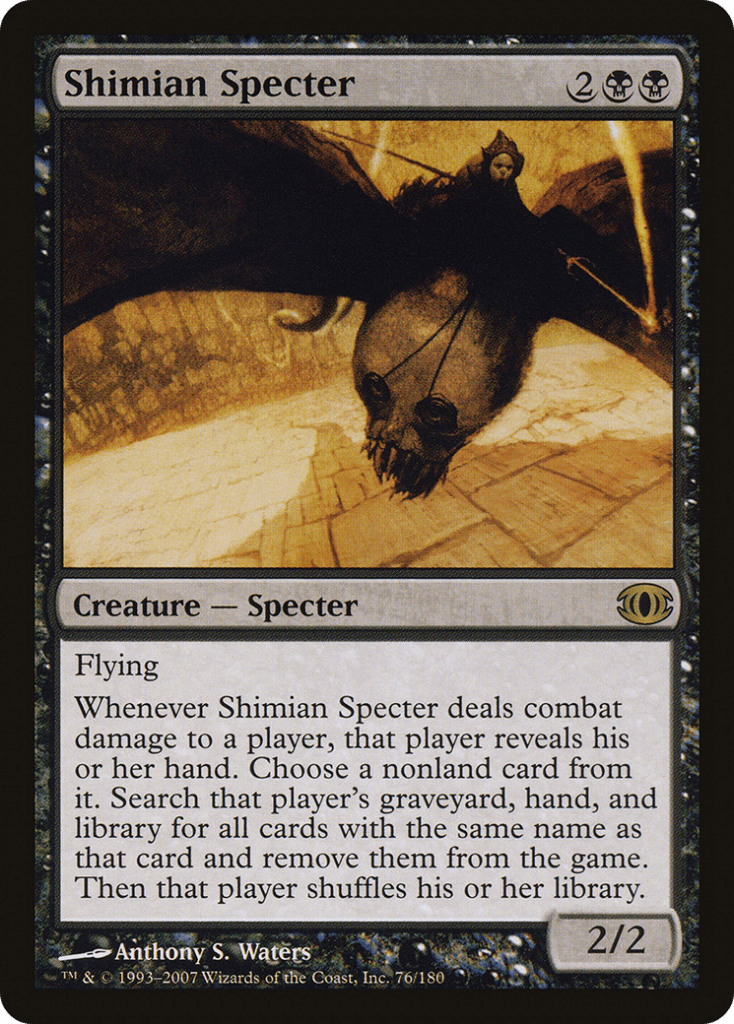

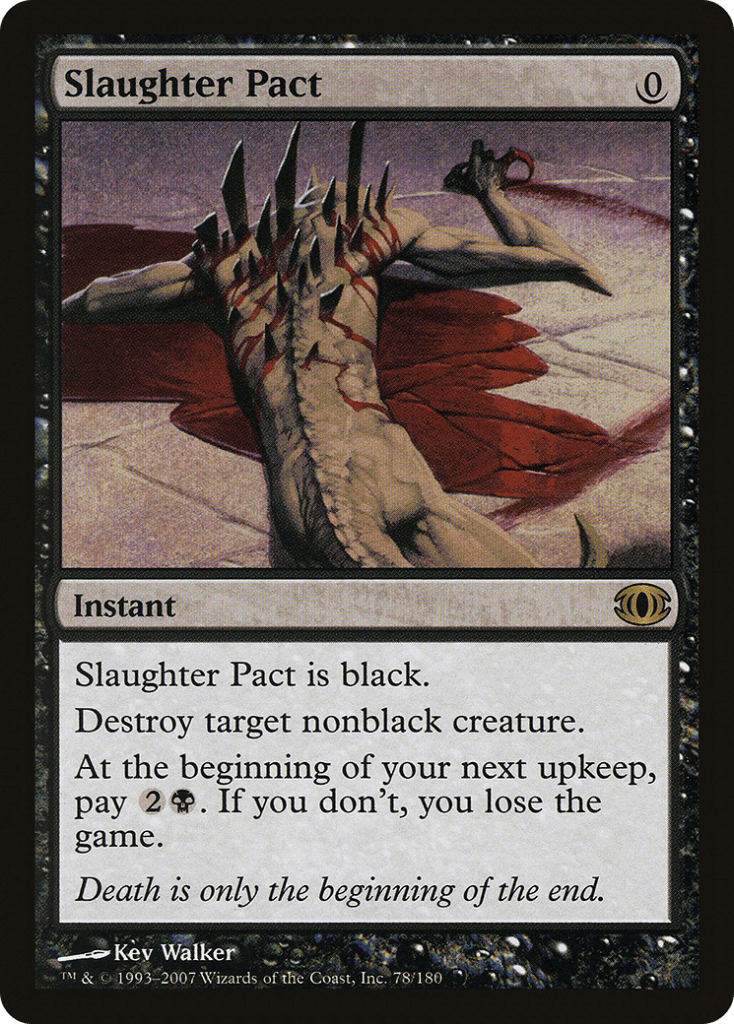

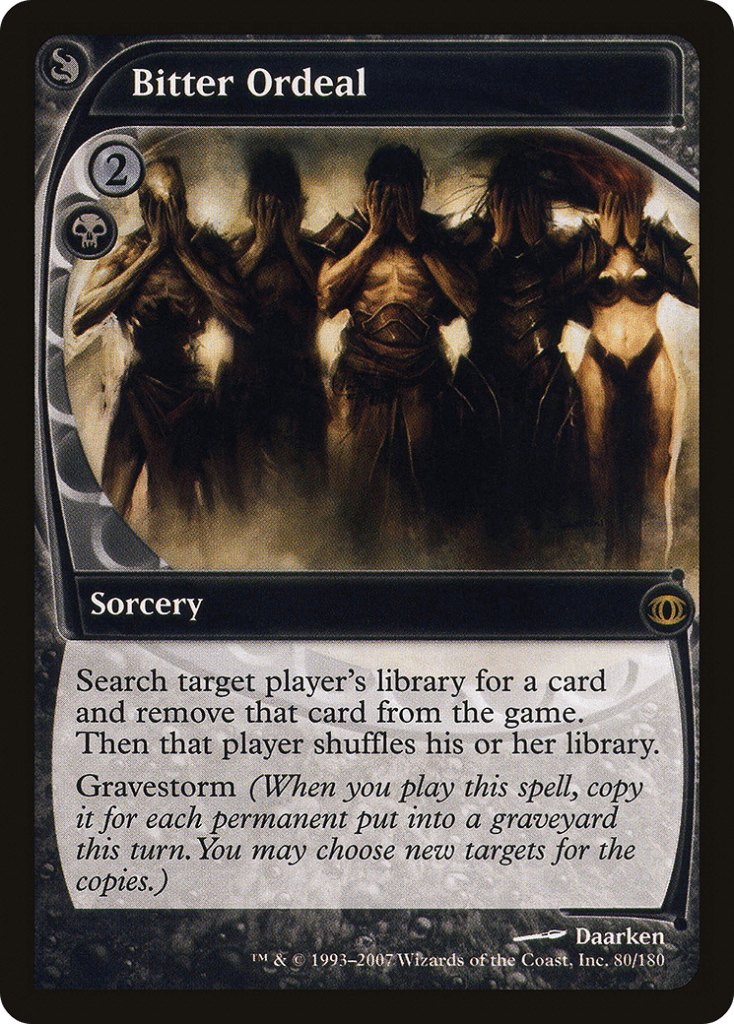
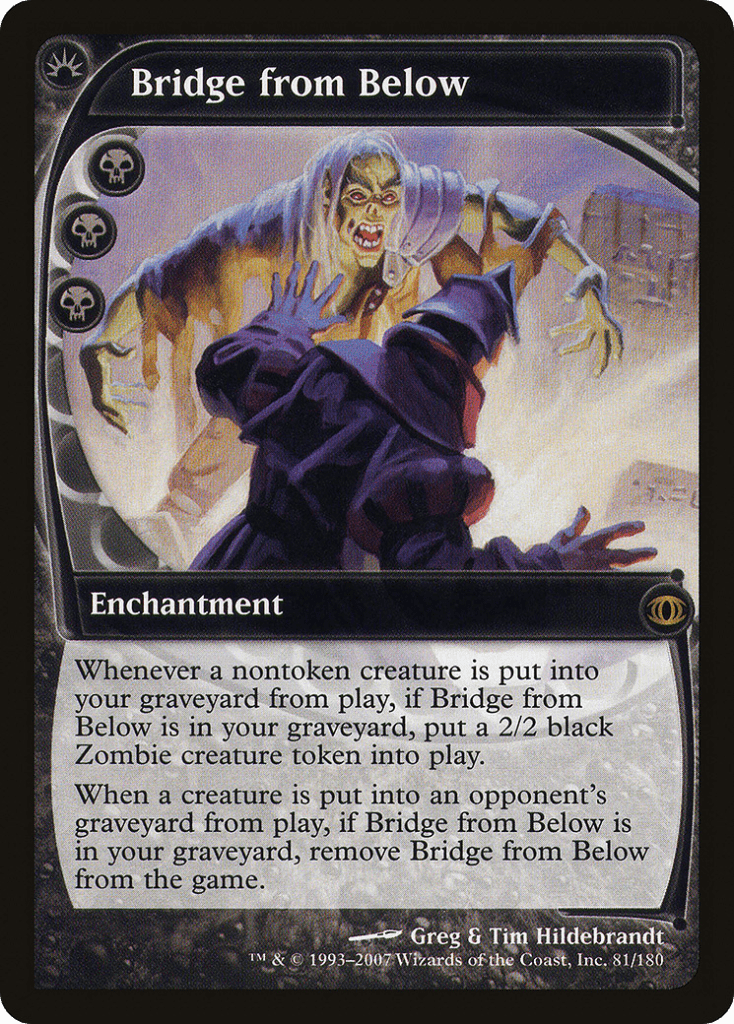


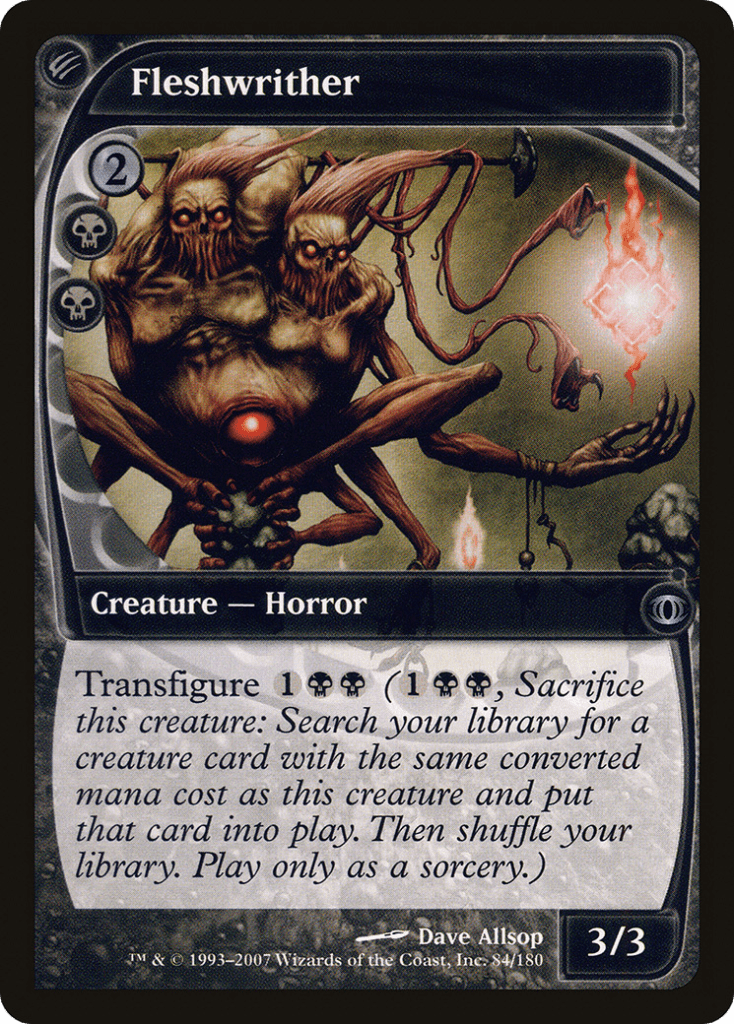
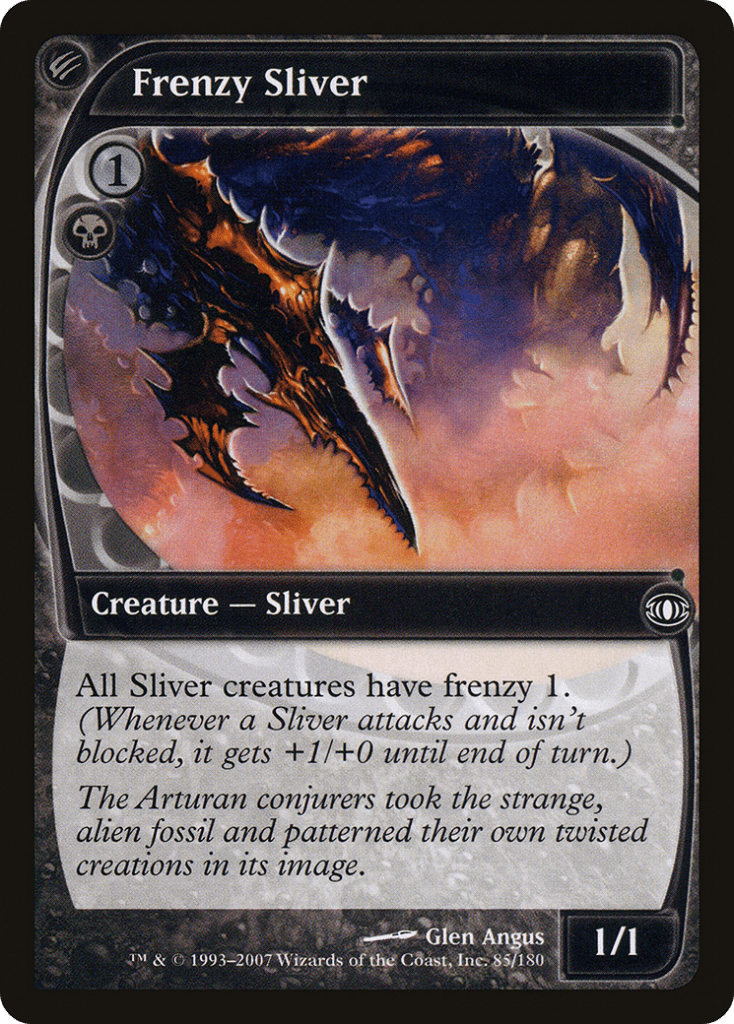

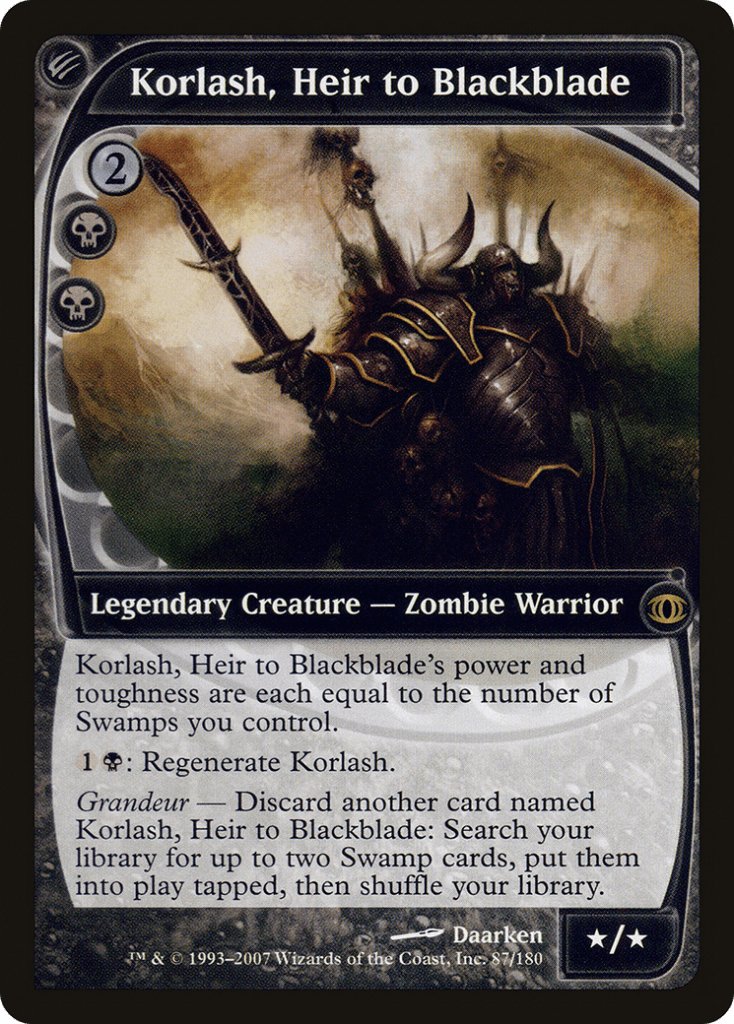
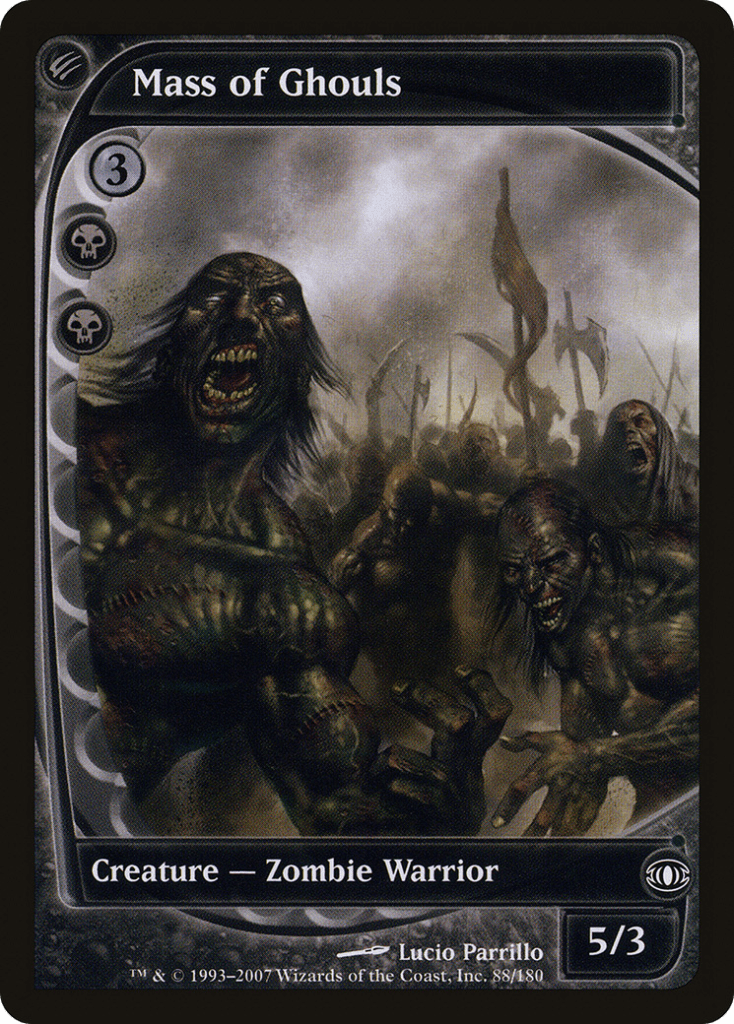

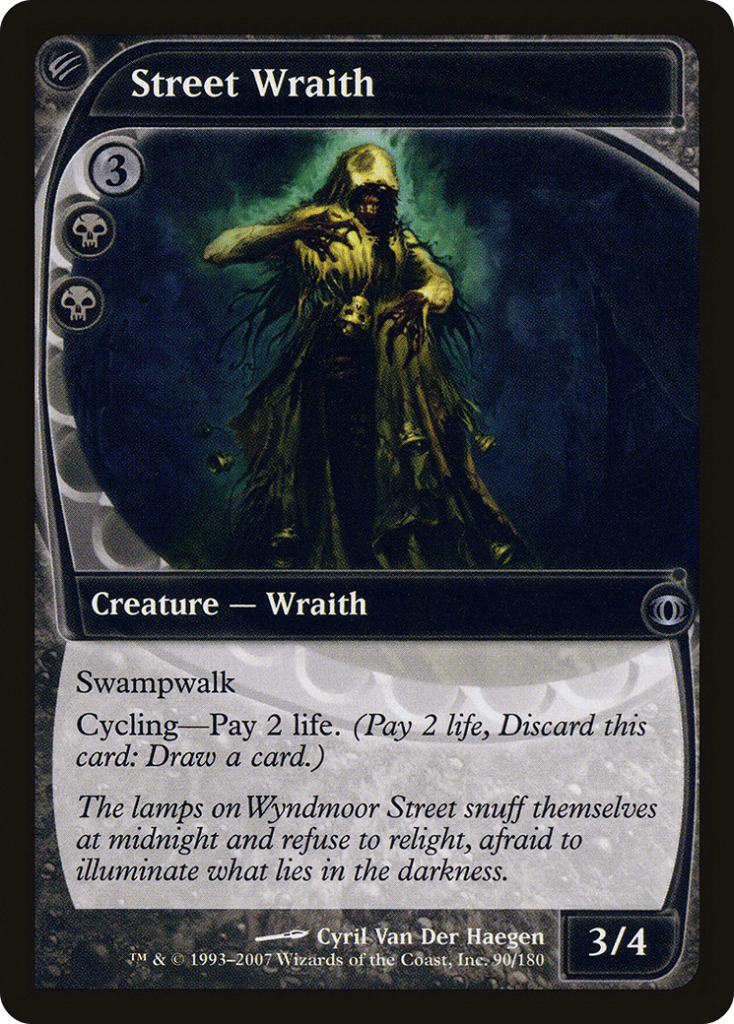
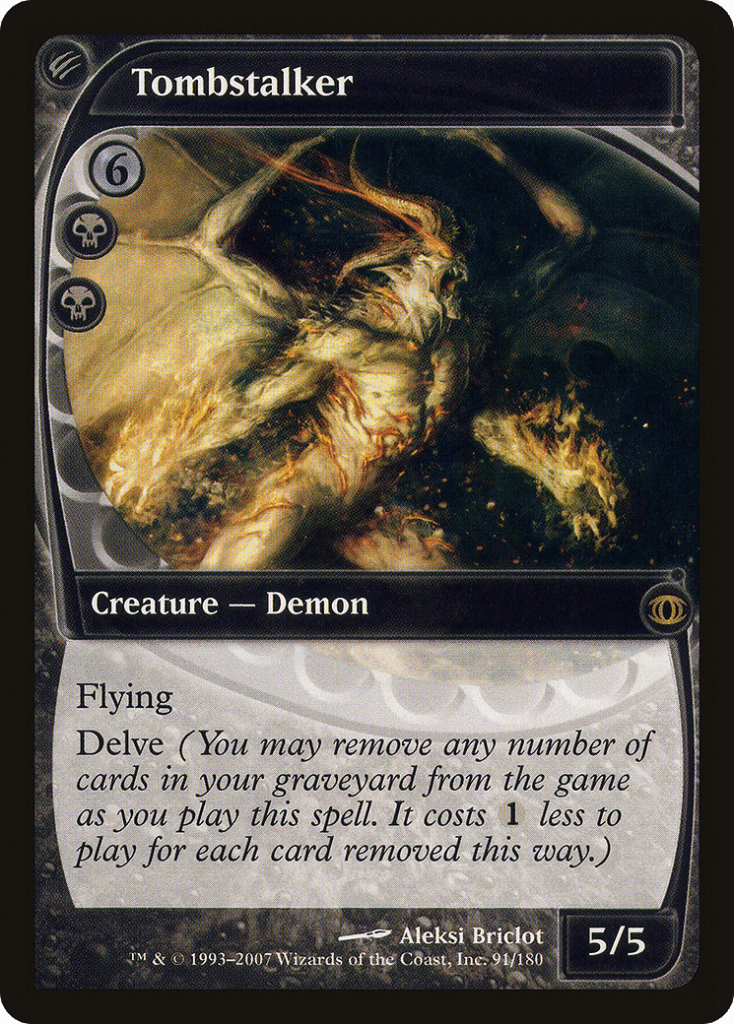
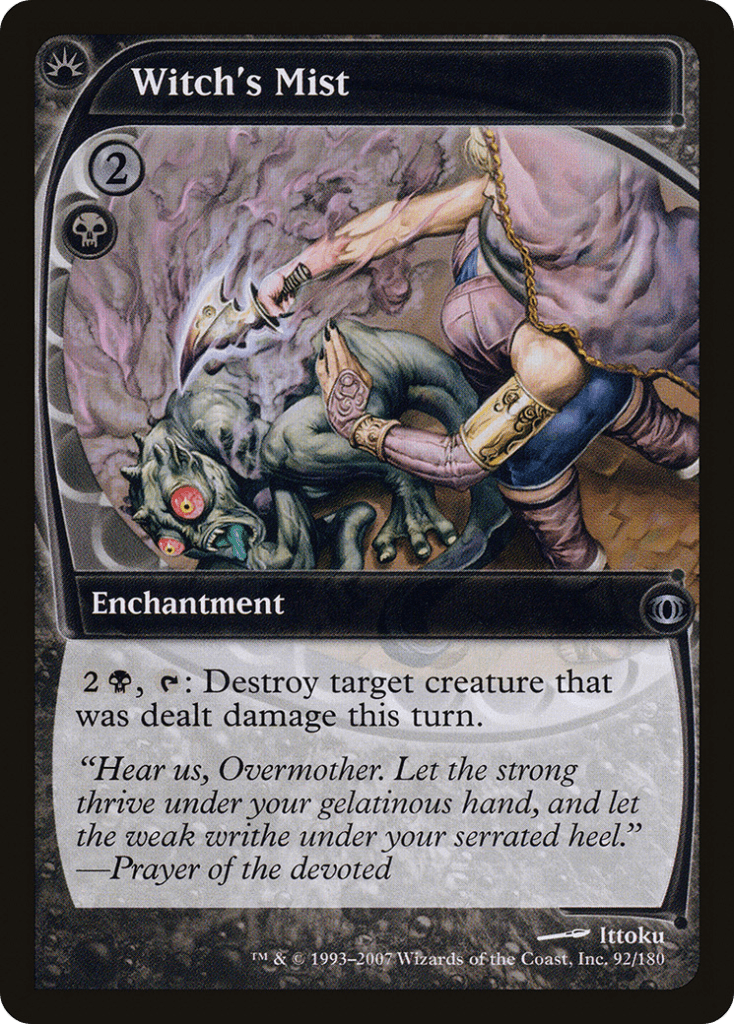

Red
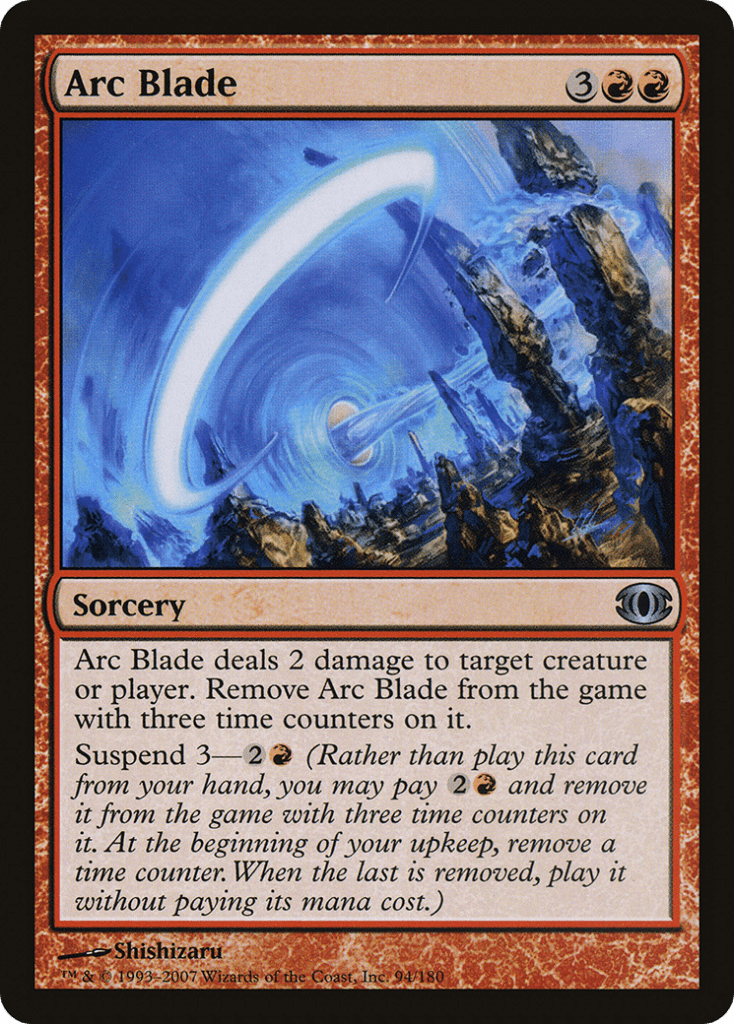
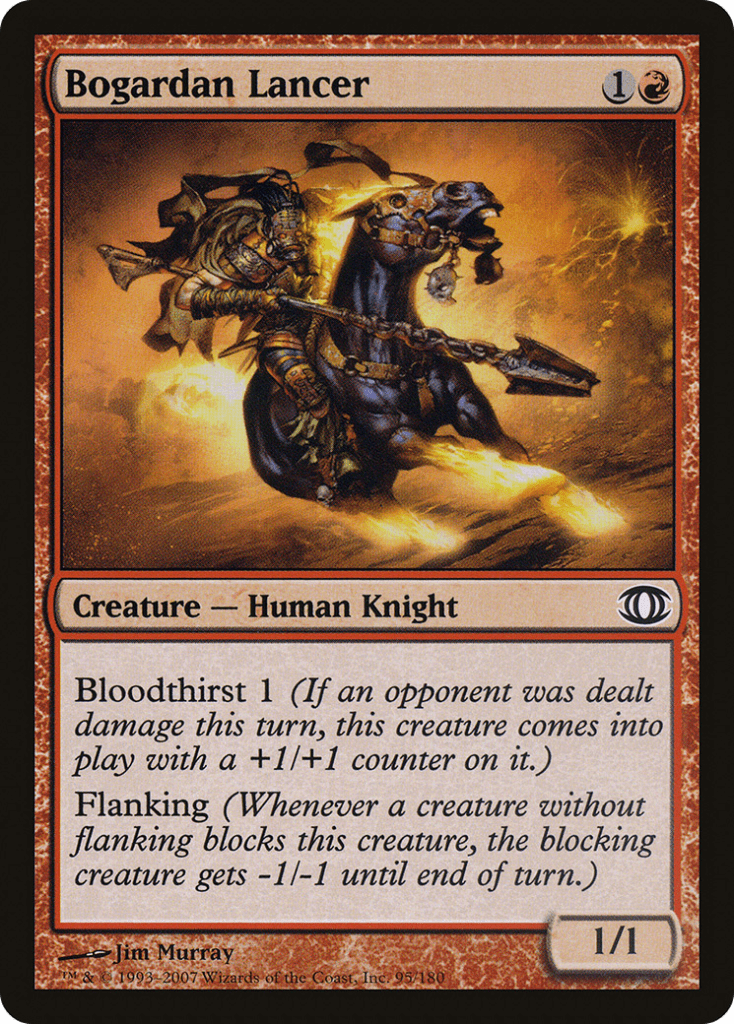

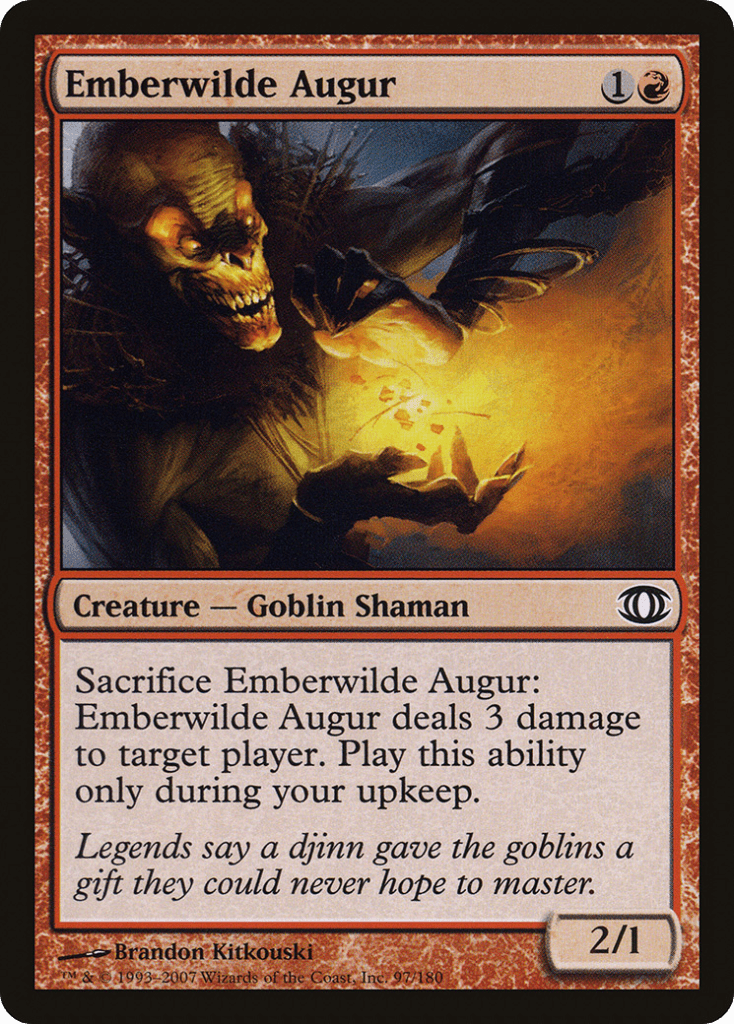
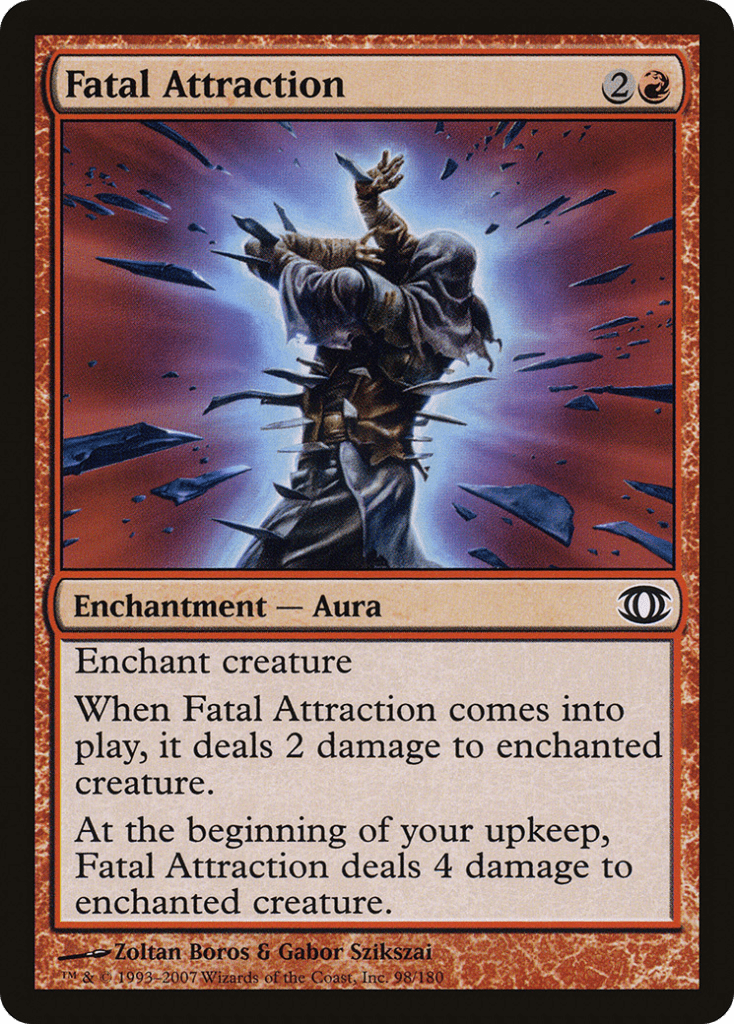
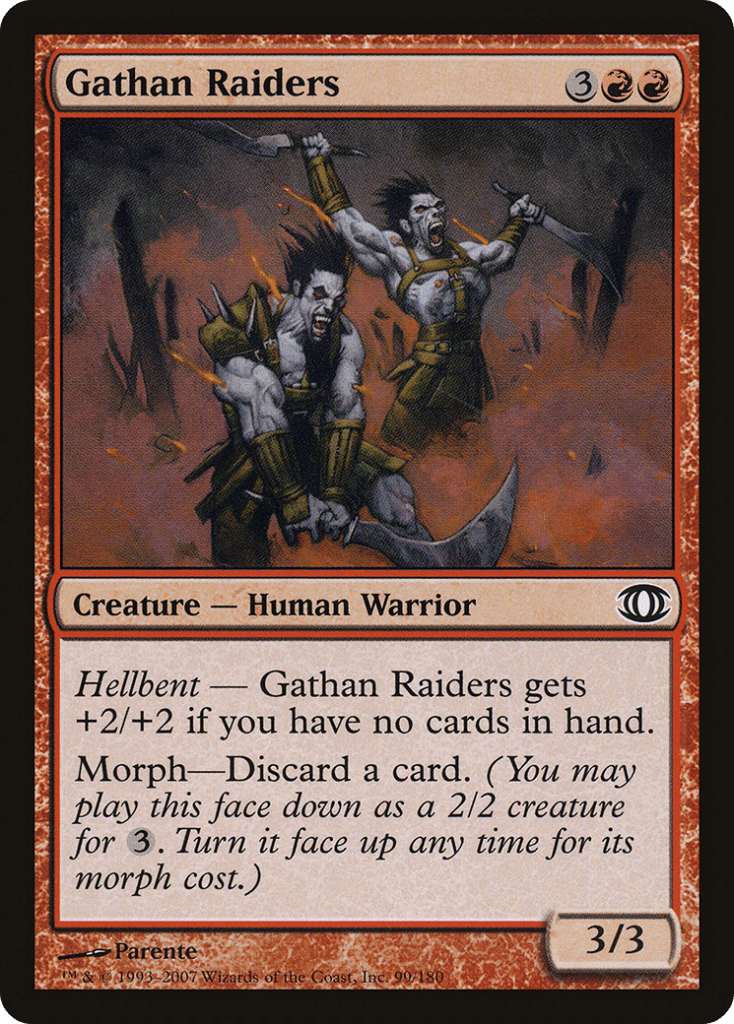

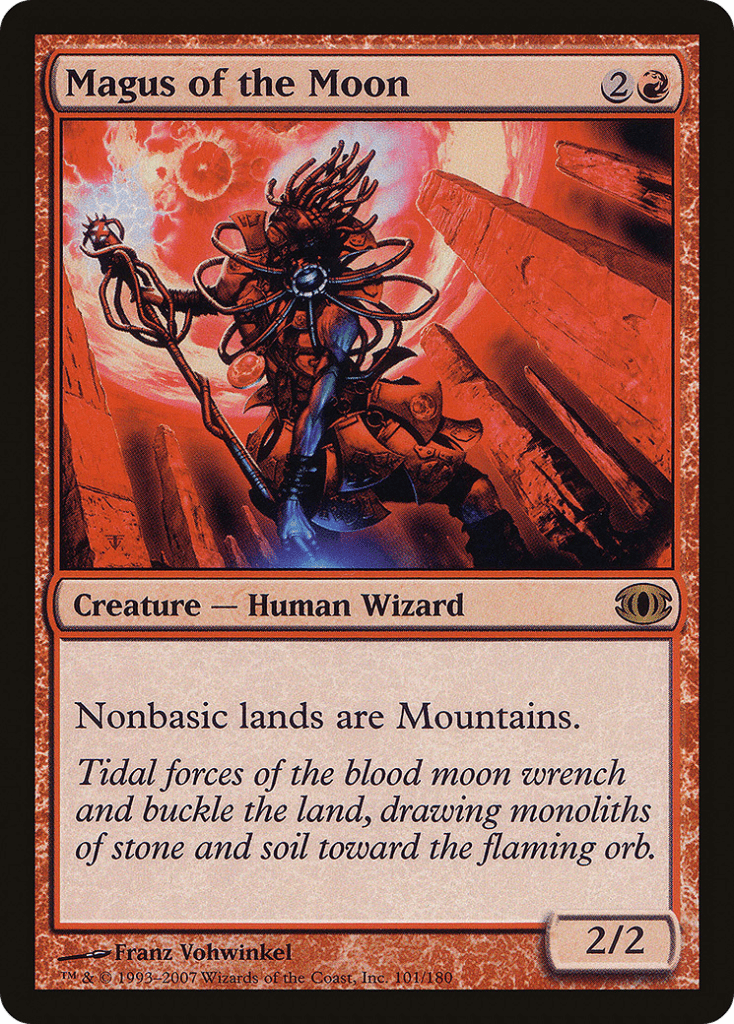
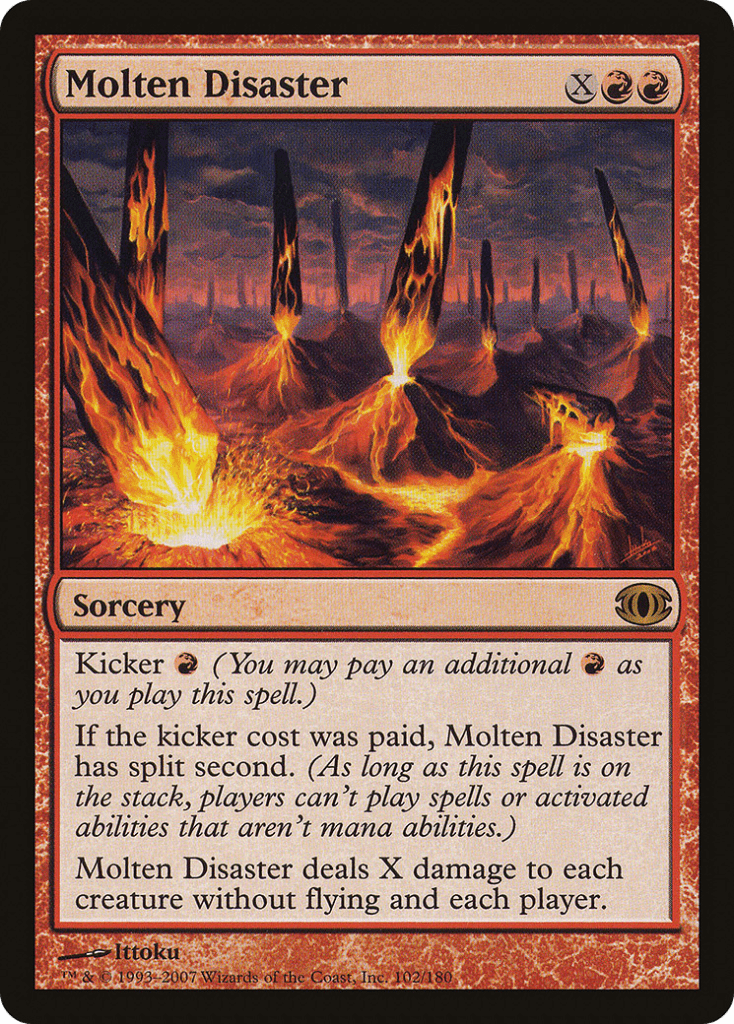
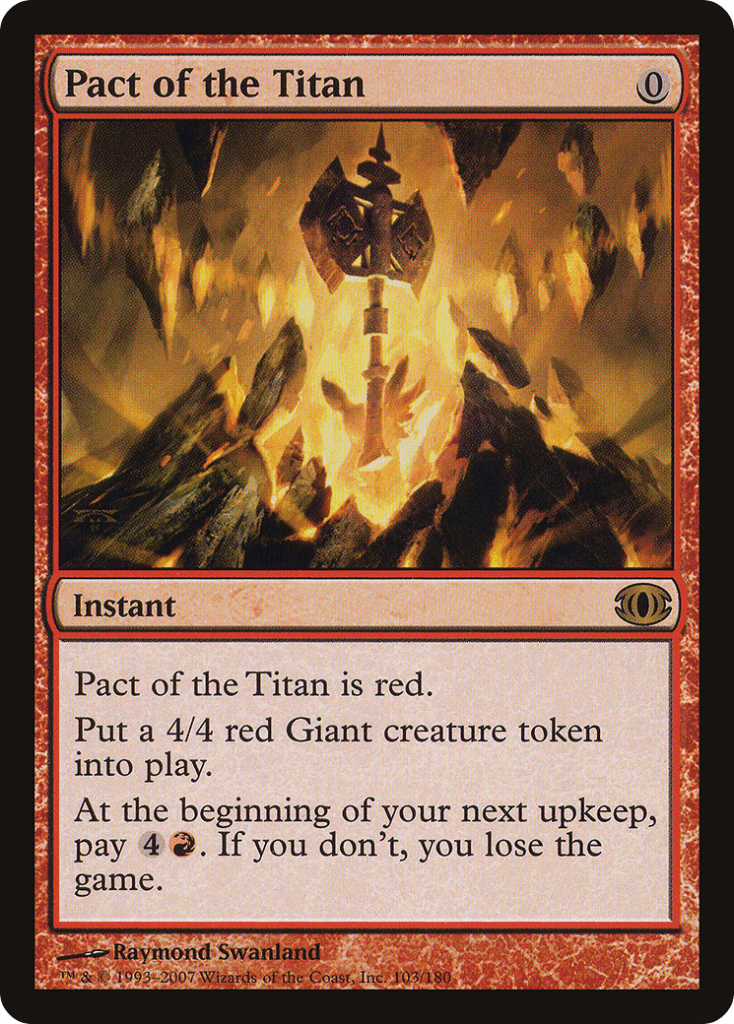
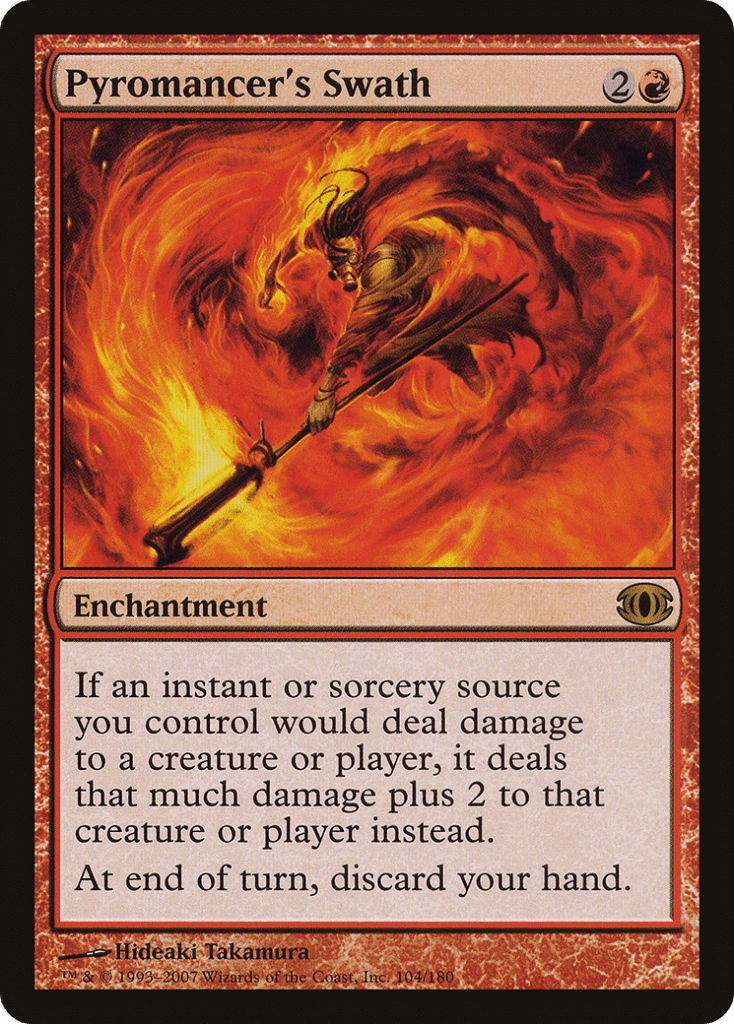
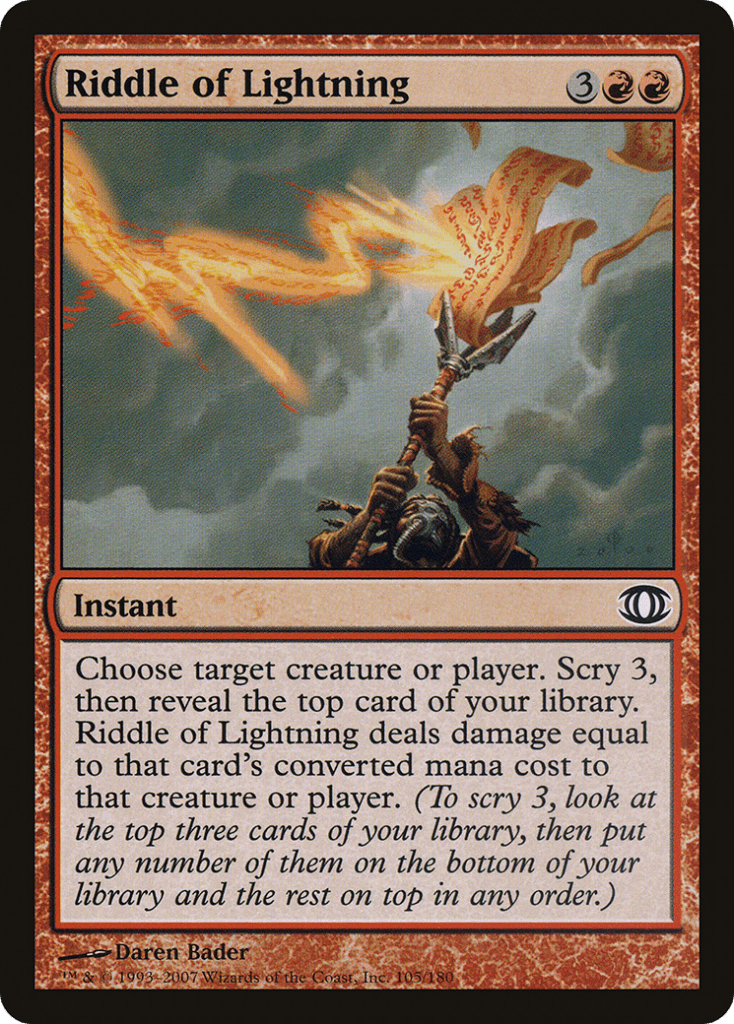

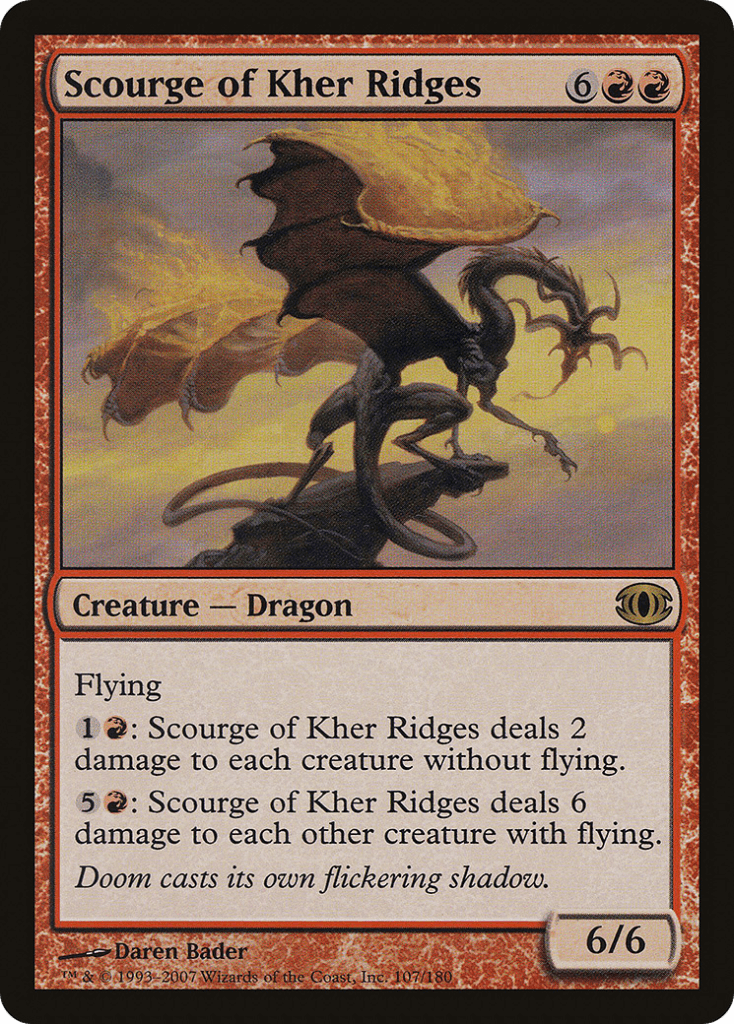
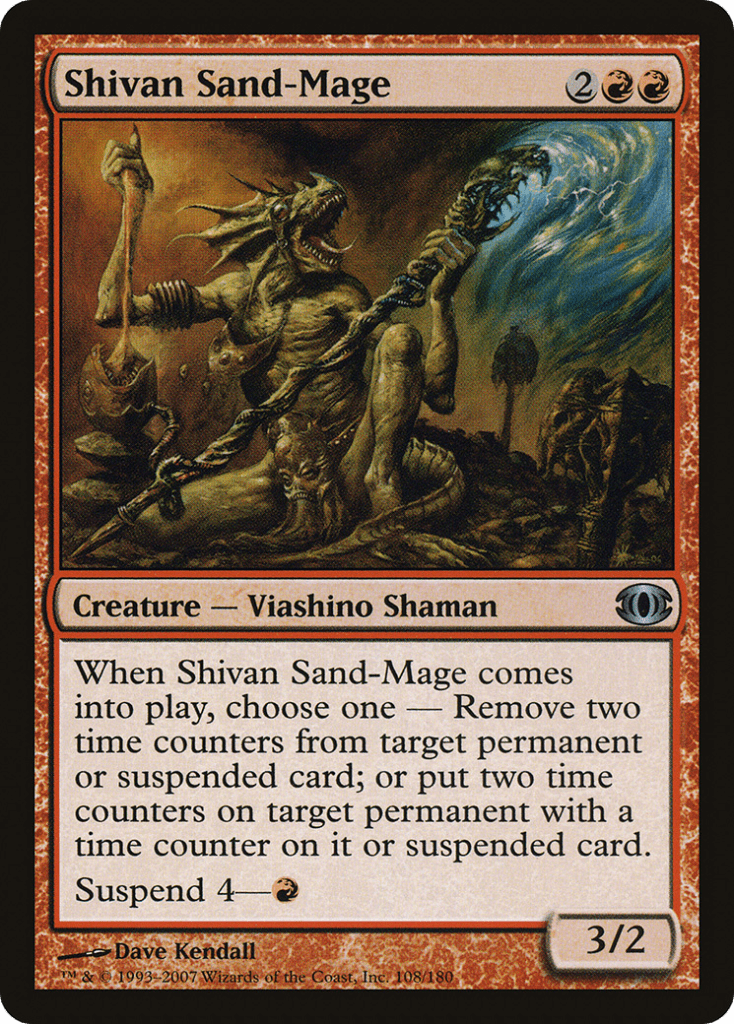
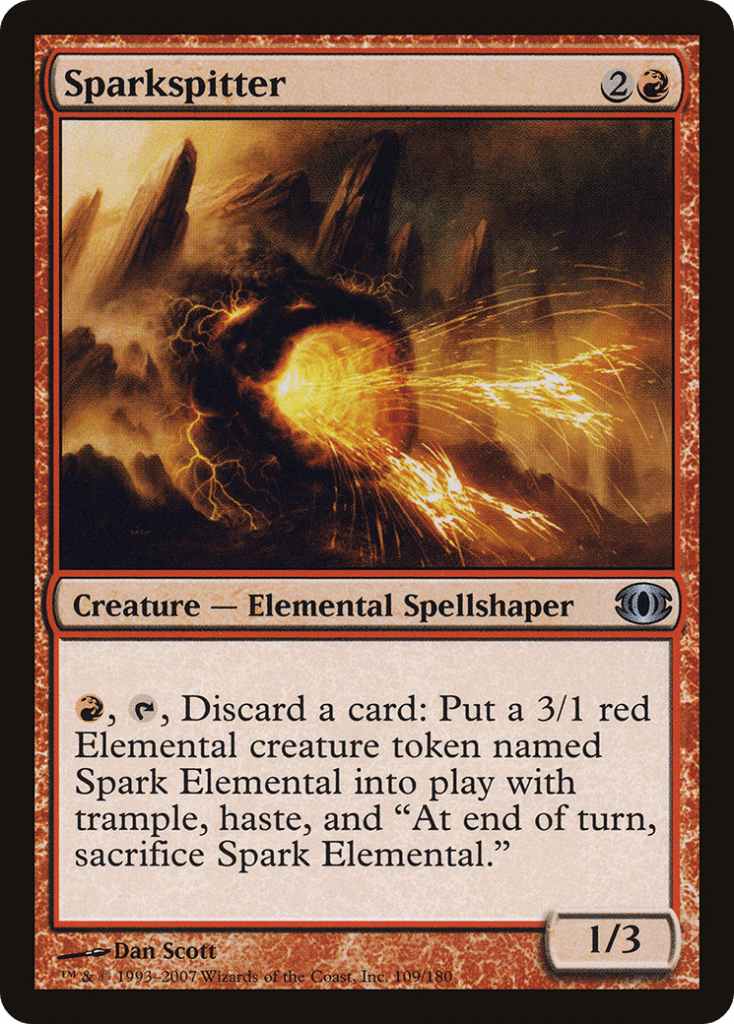
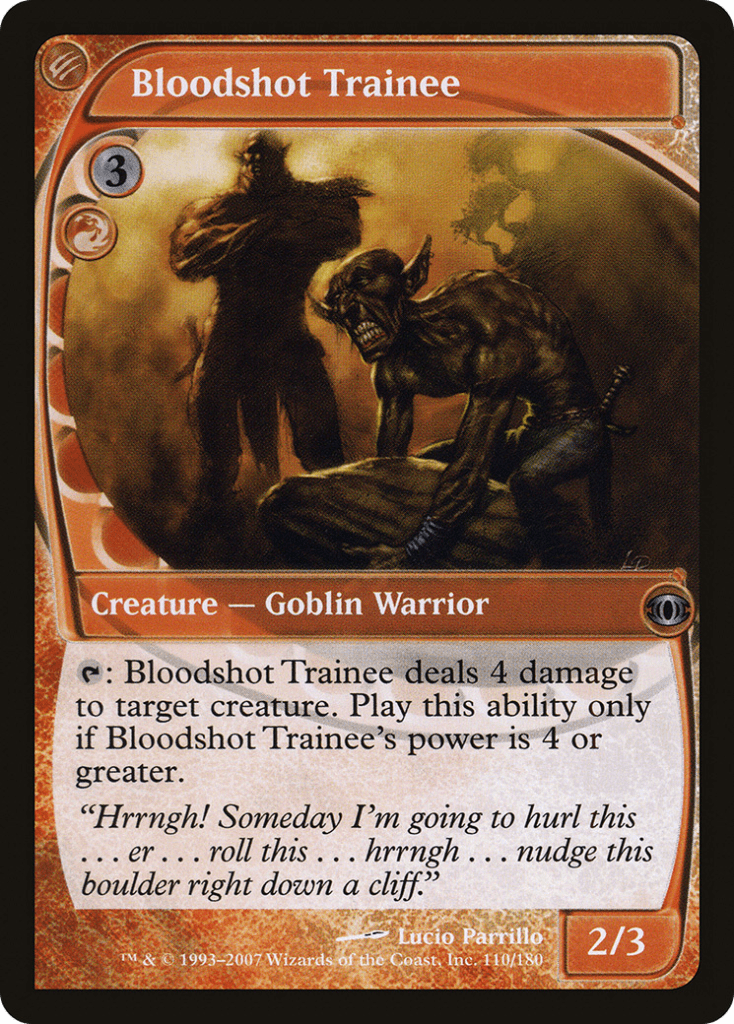


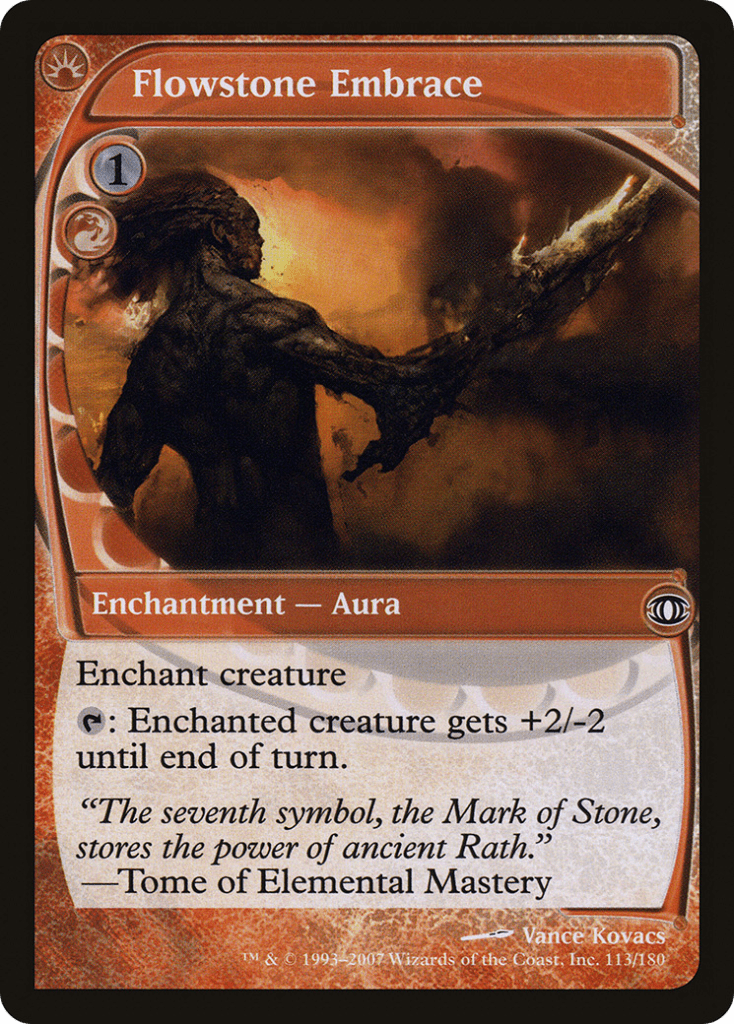



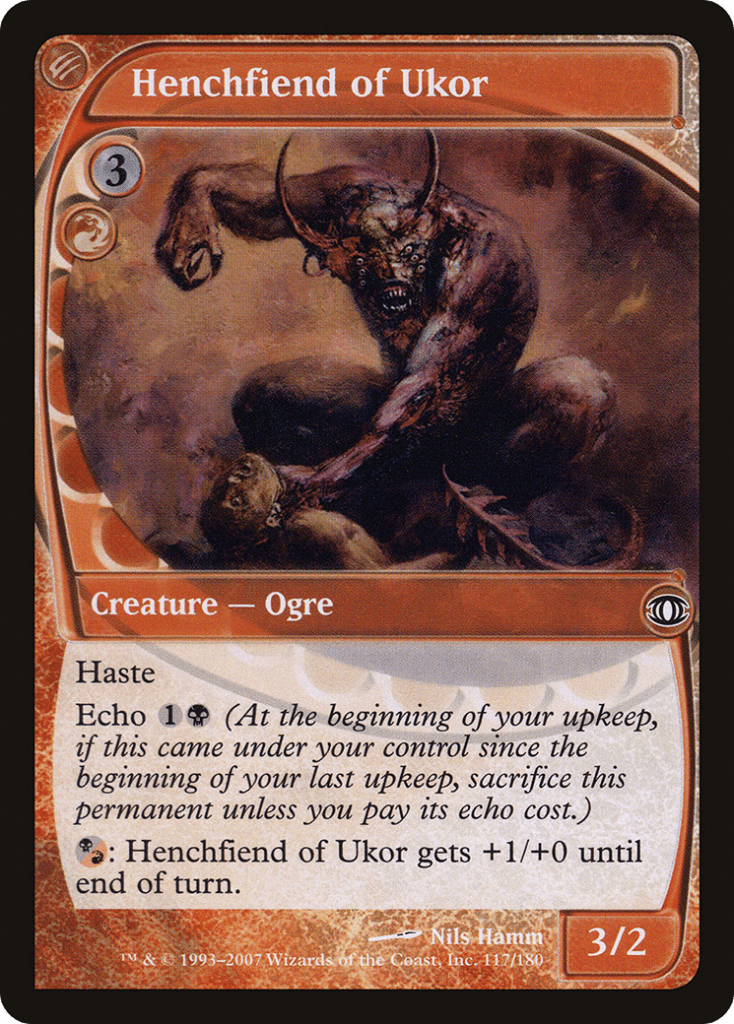
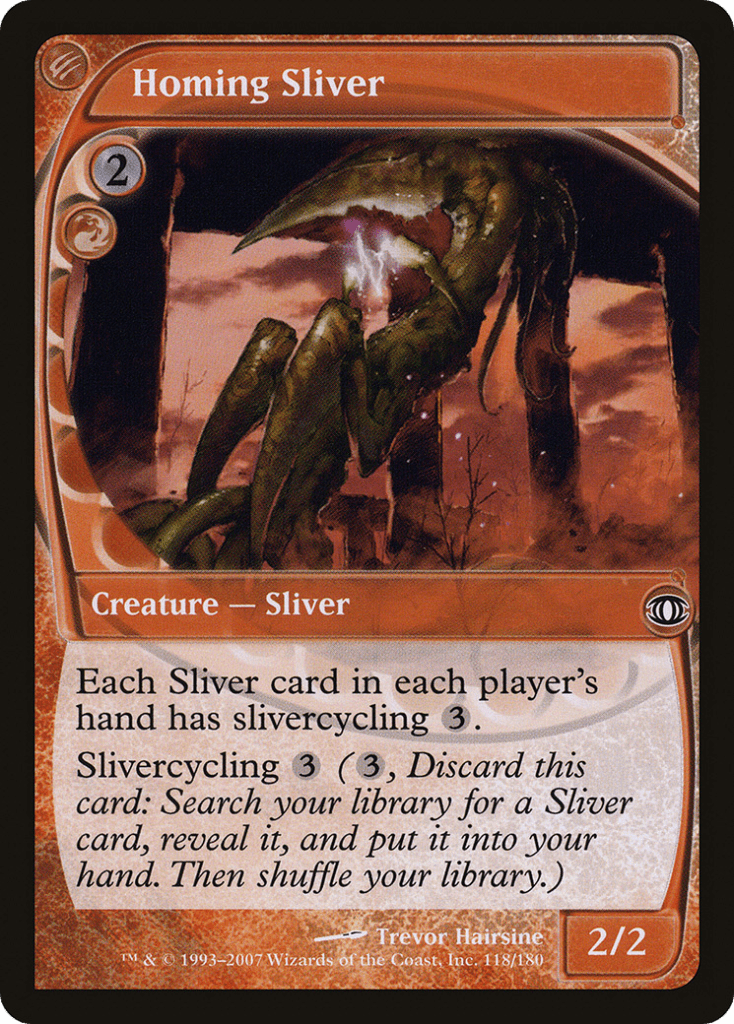
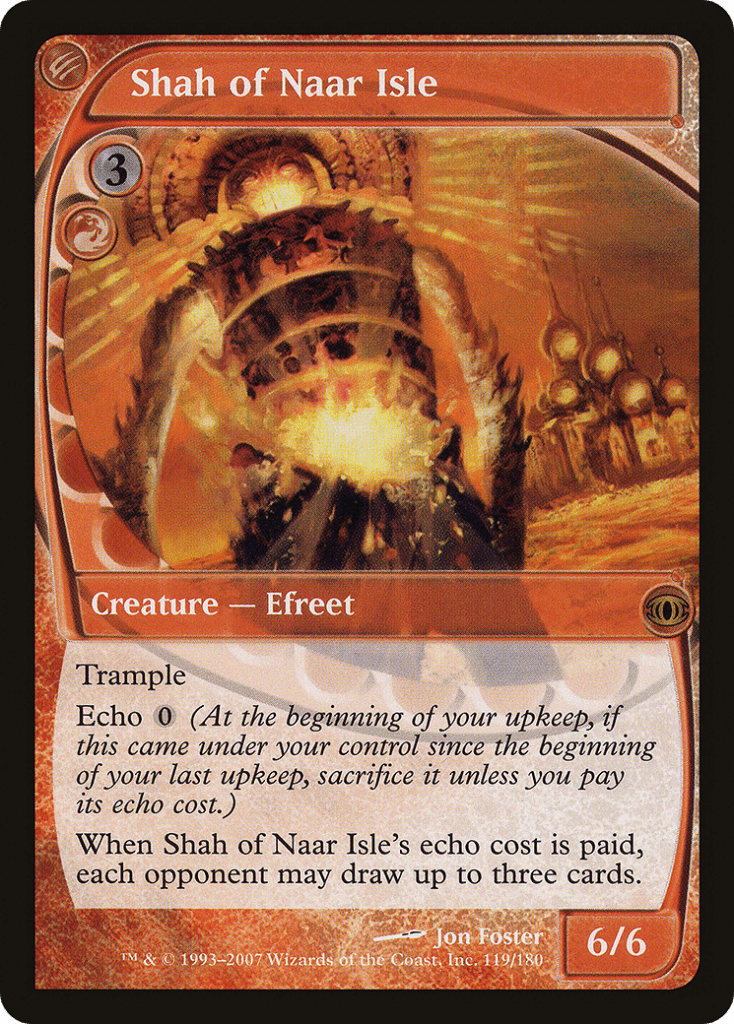


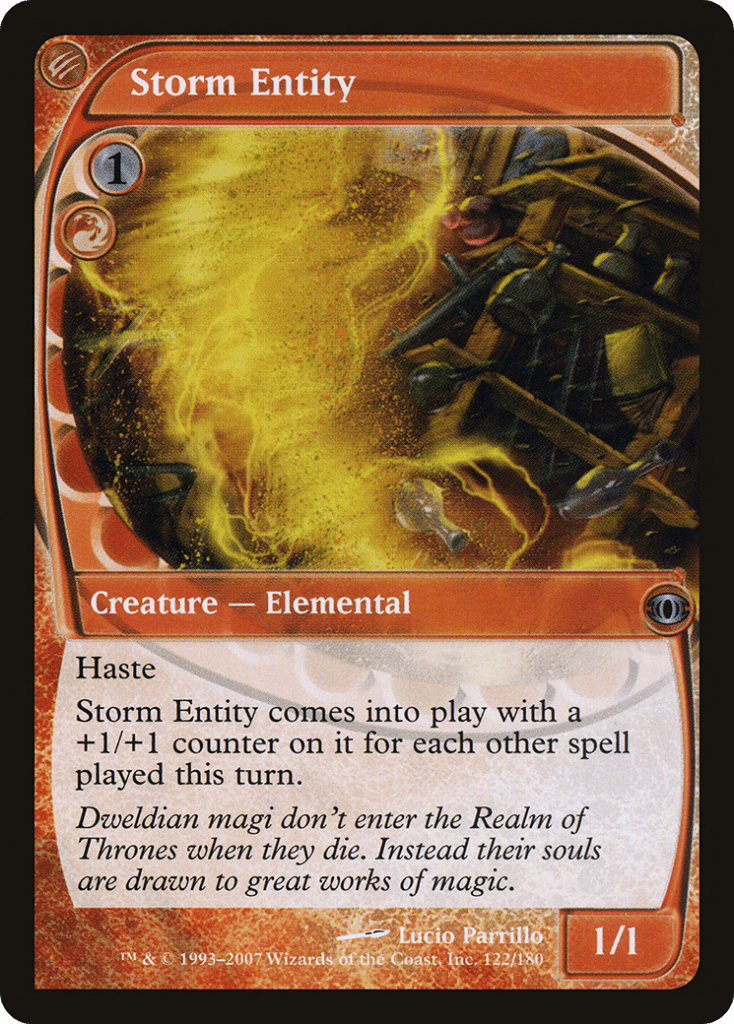
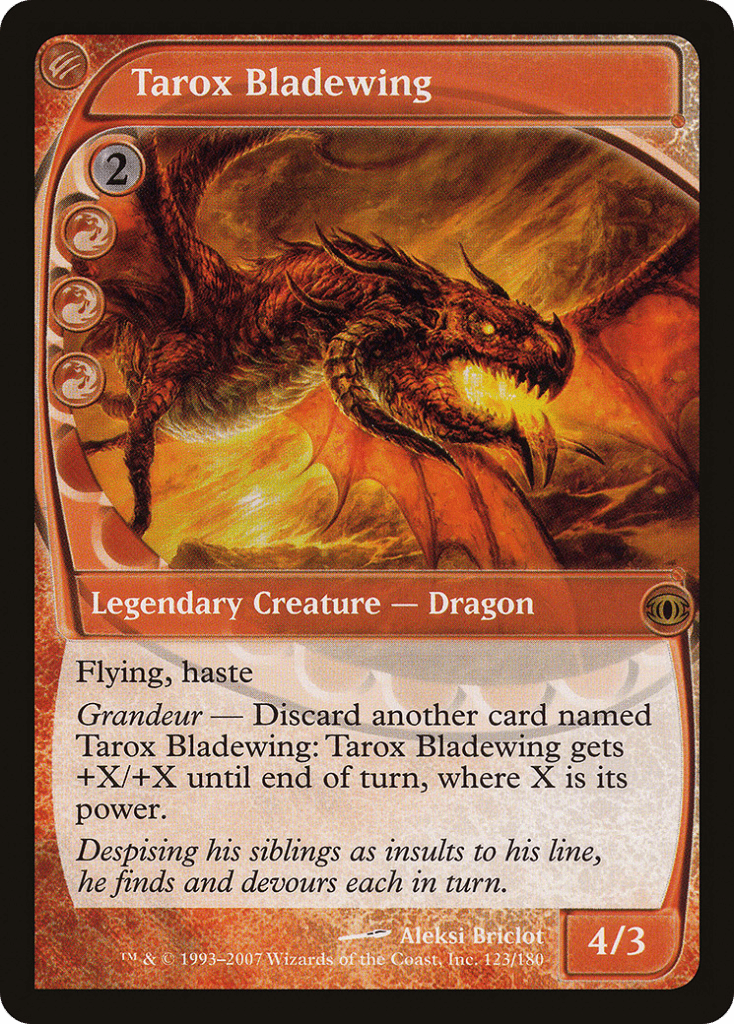
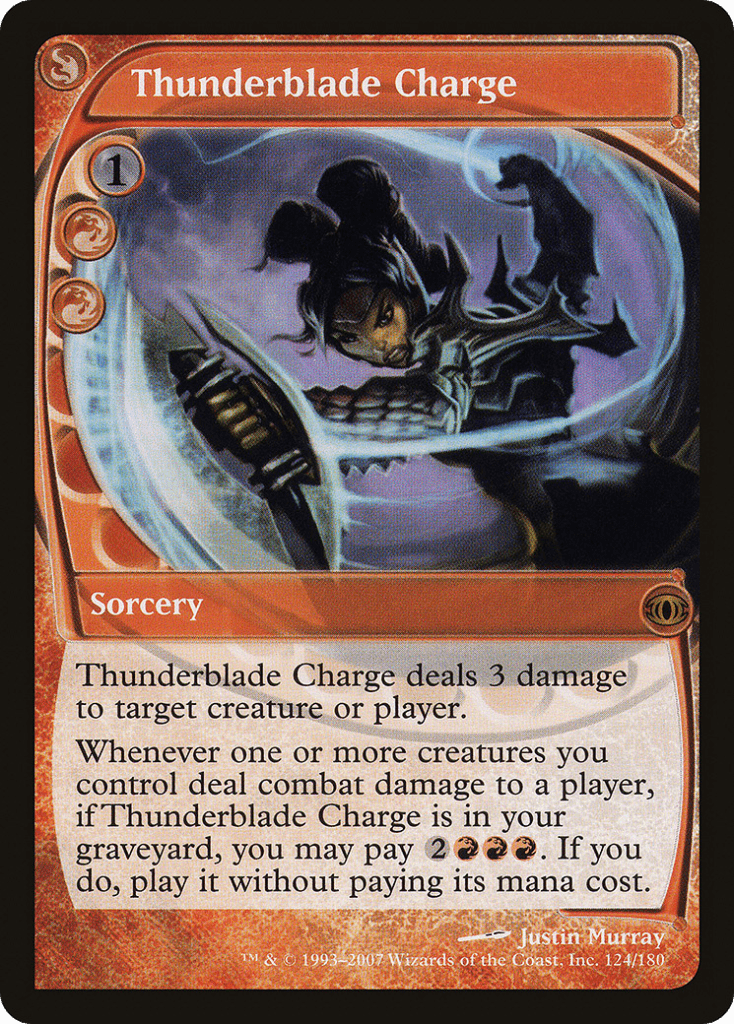
Green
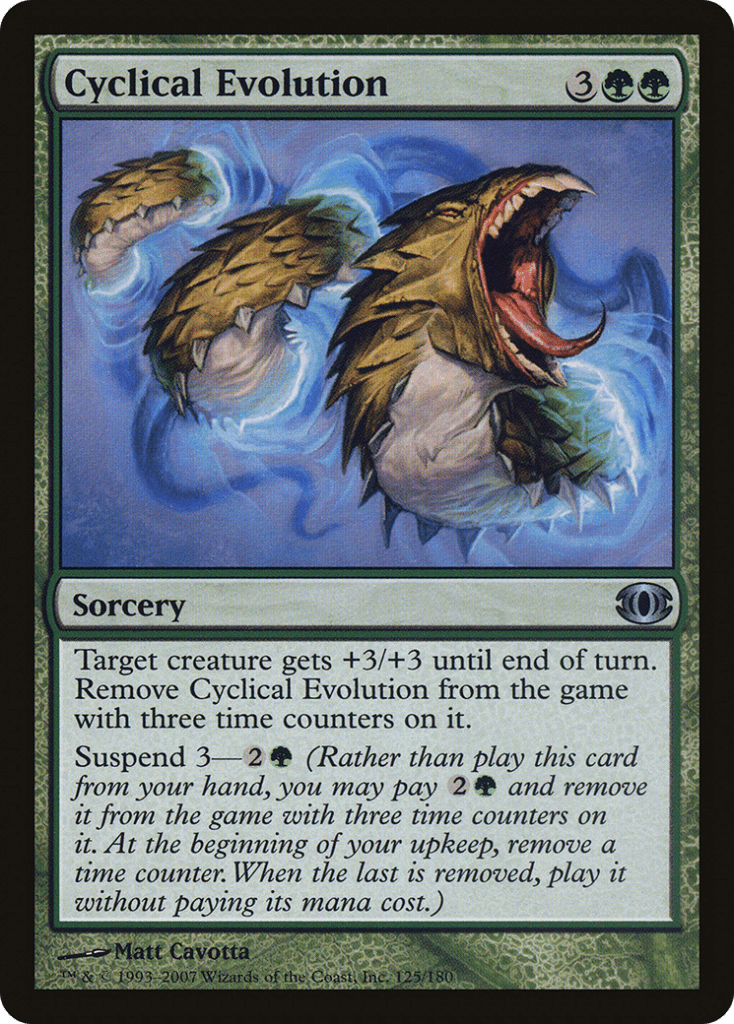
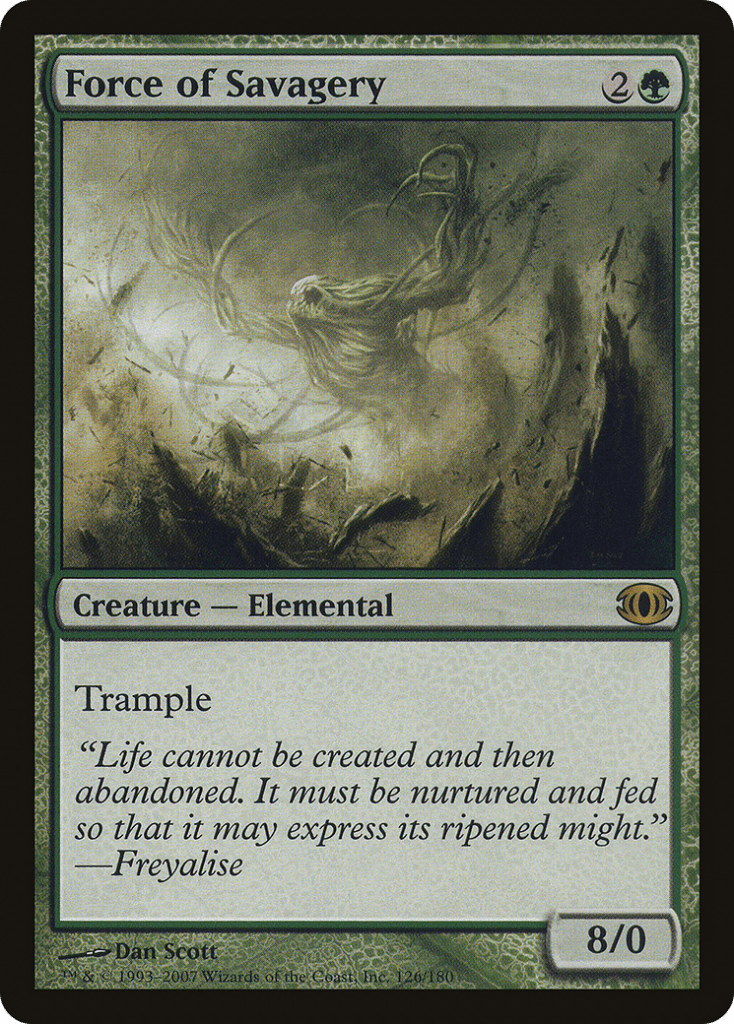
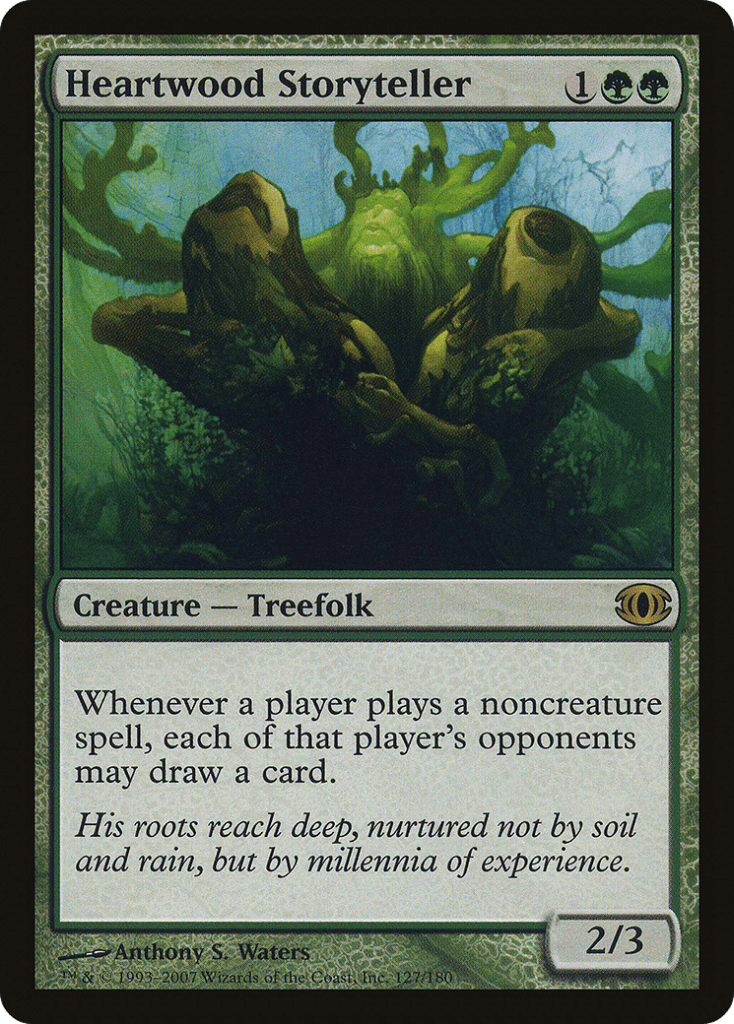
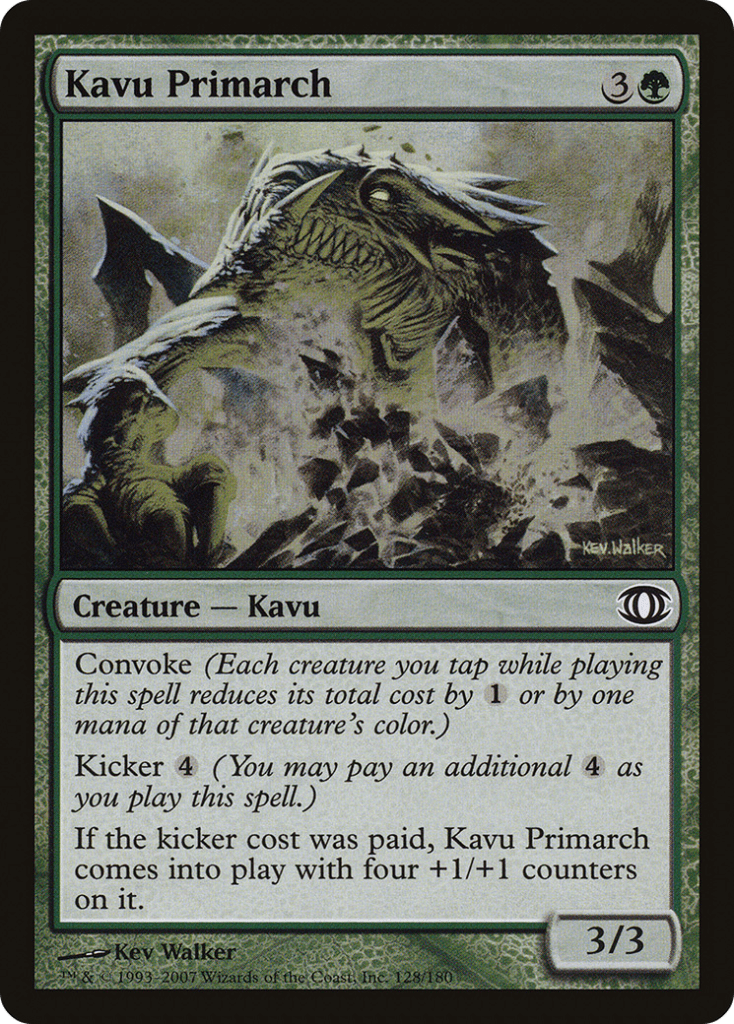
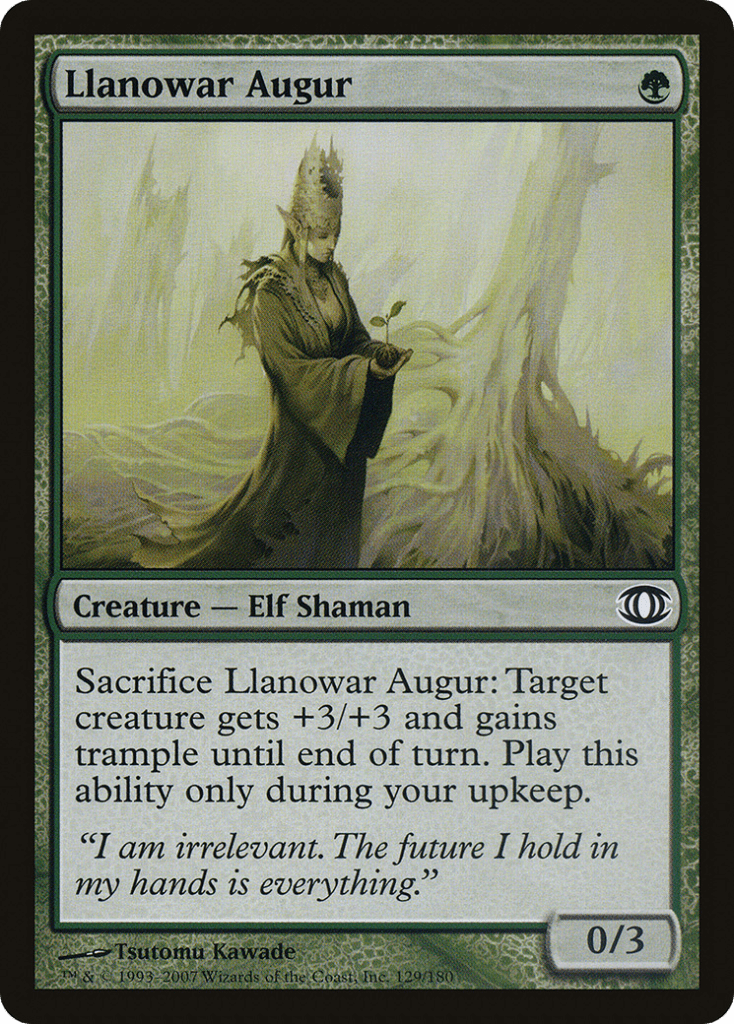
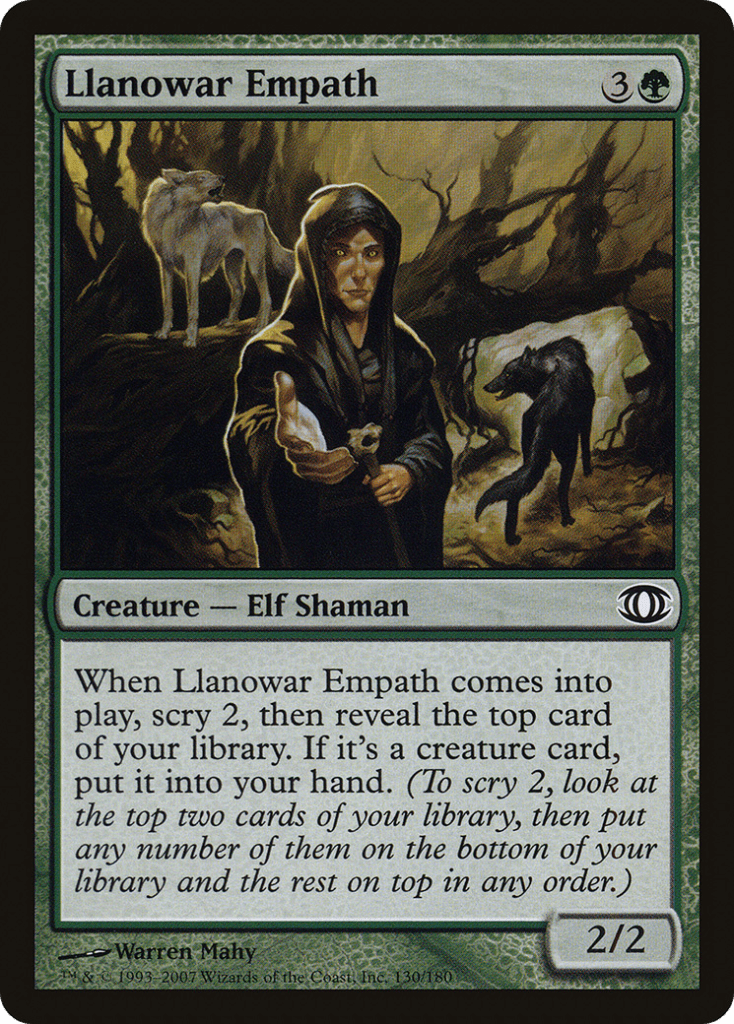
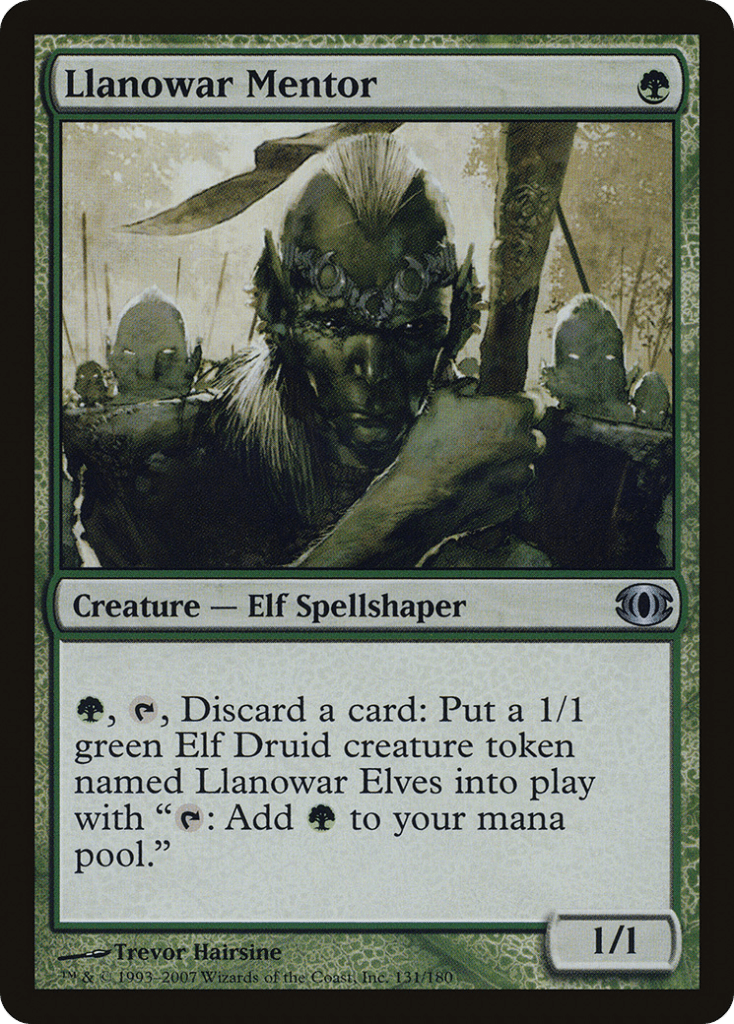
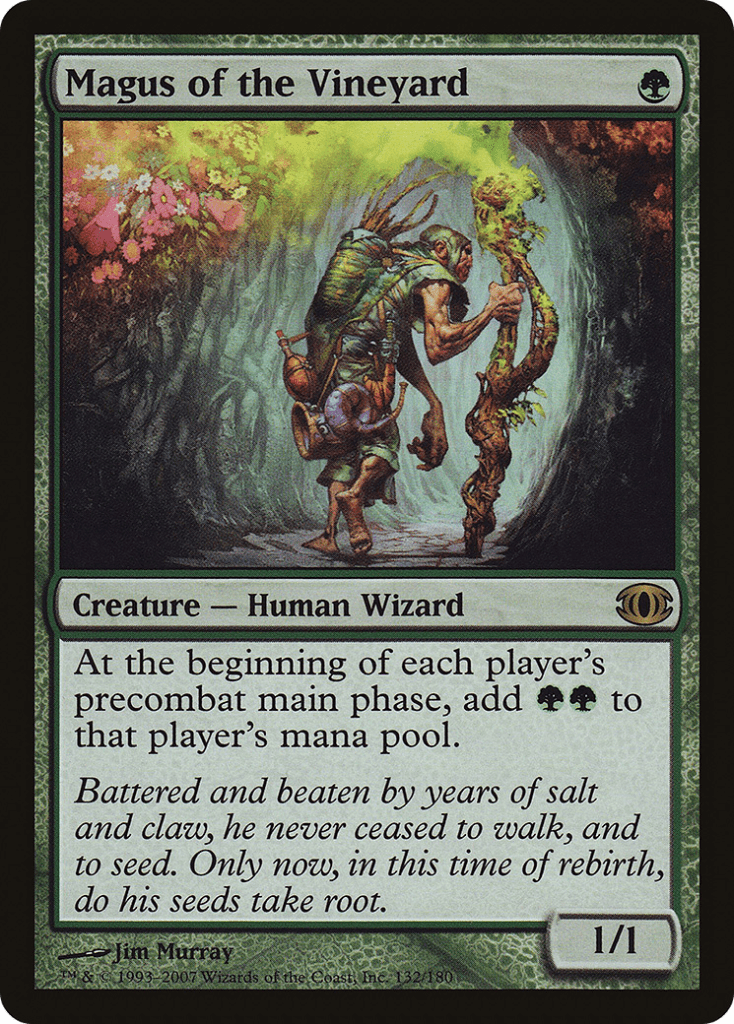
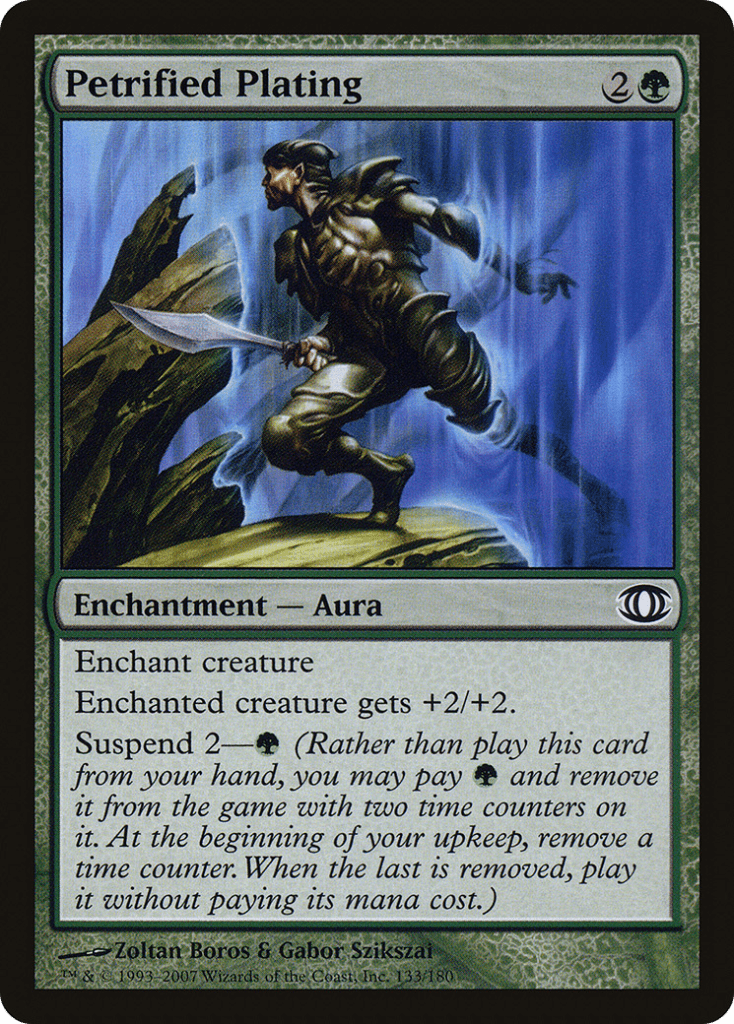
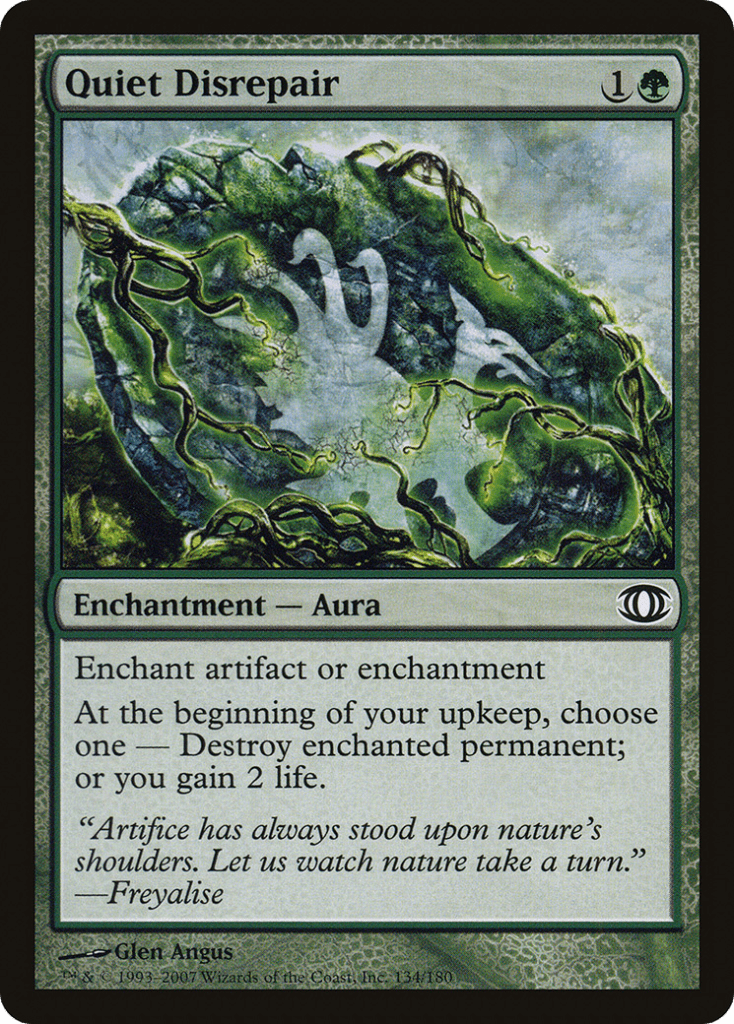
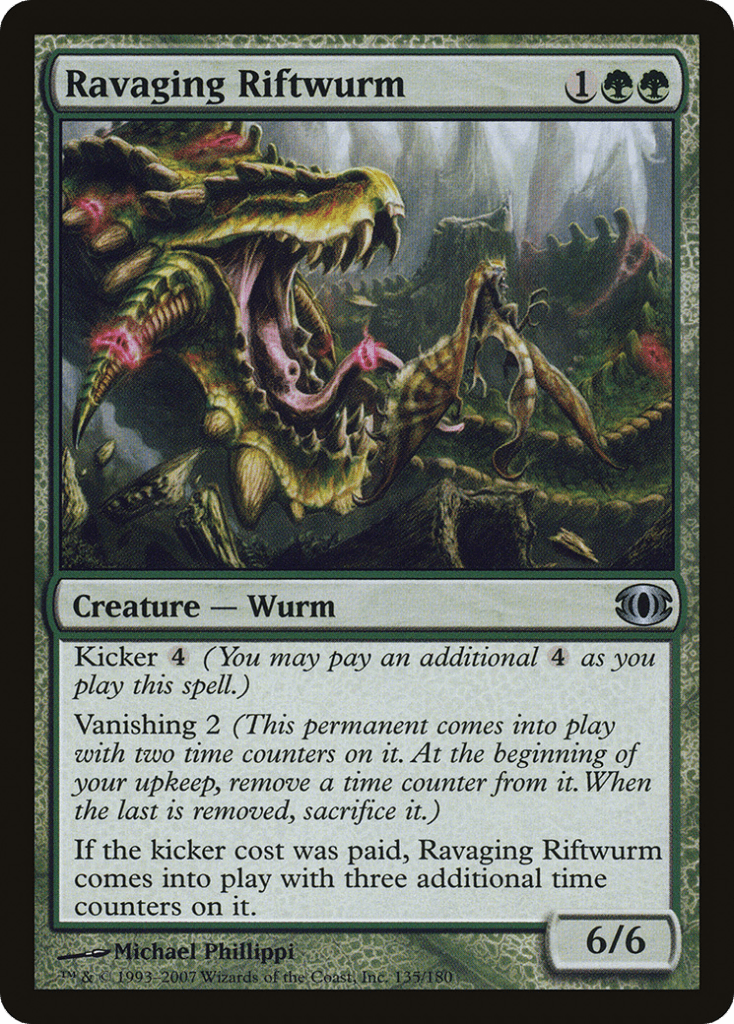
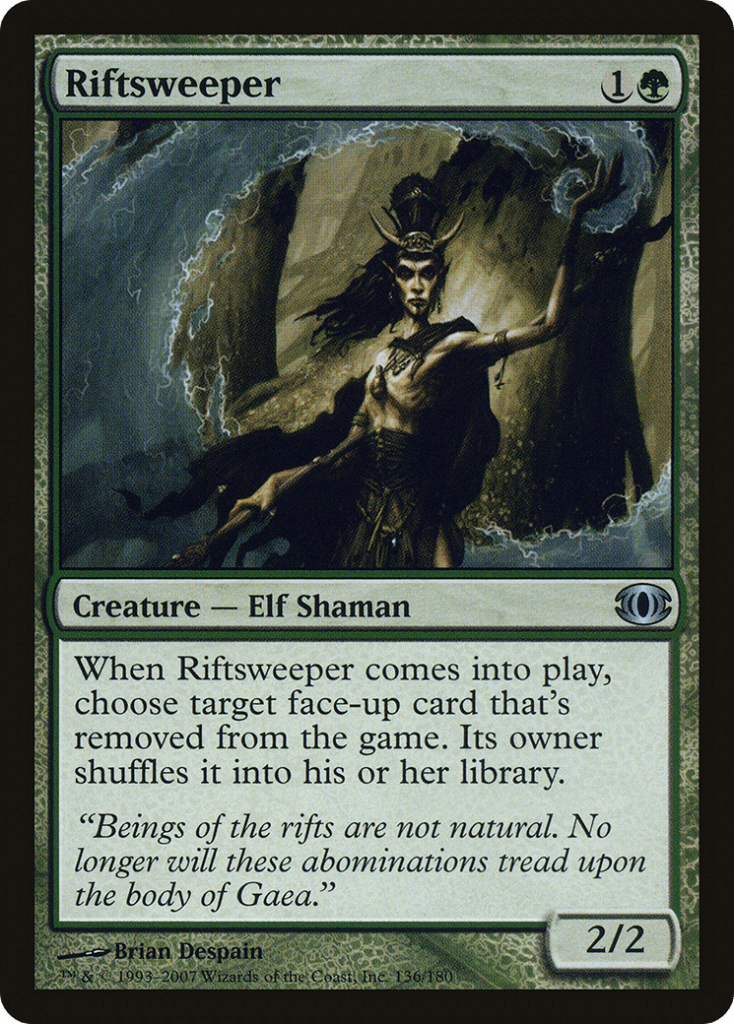
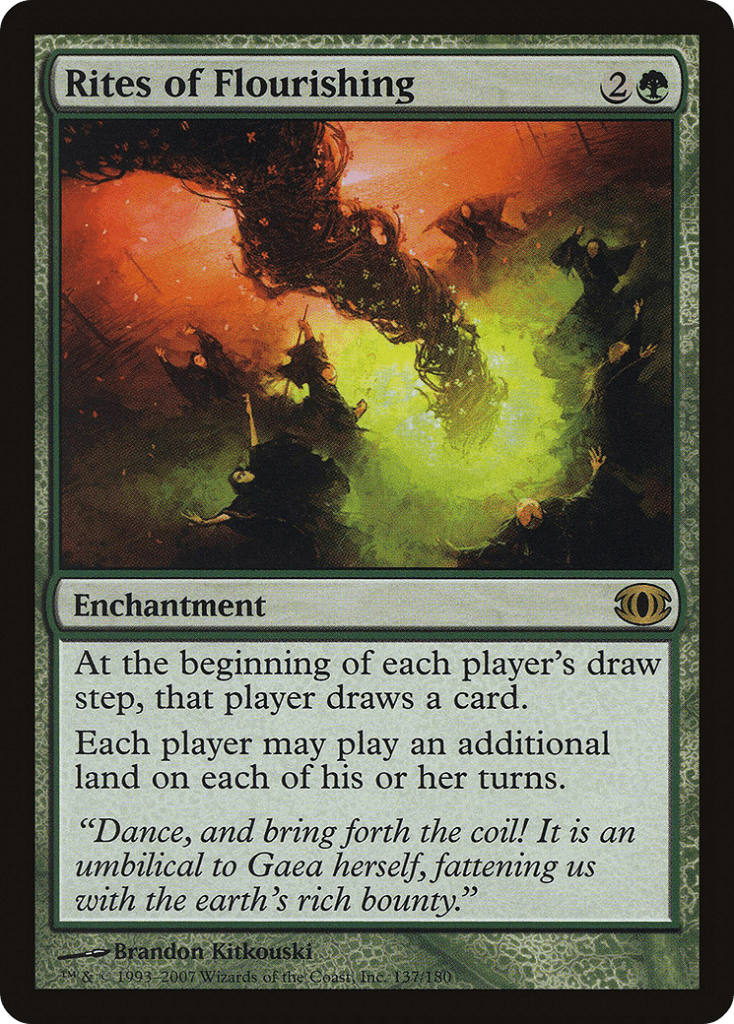
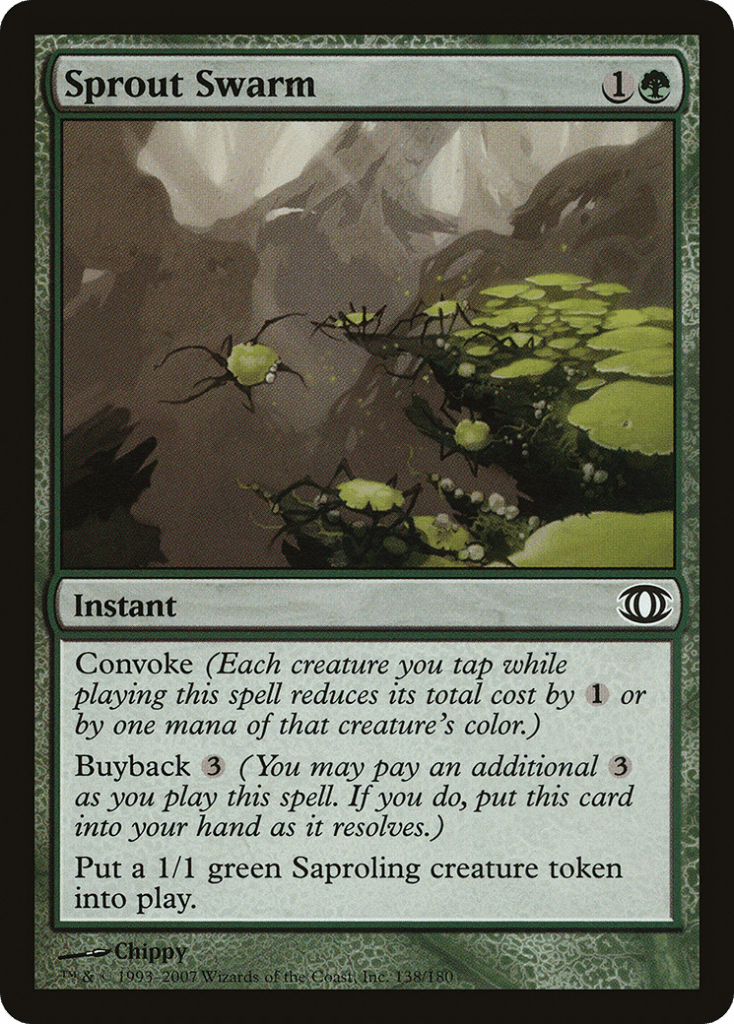
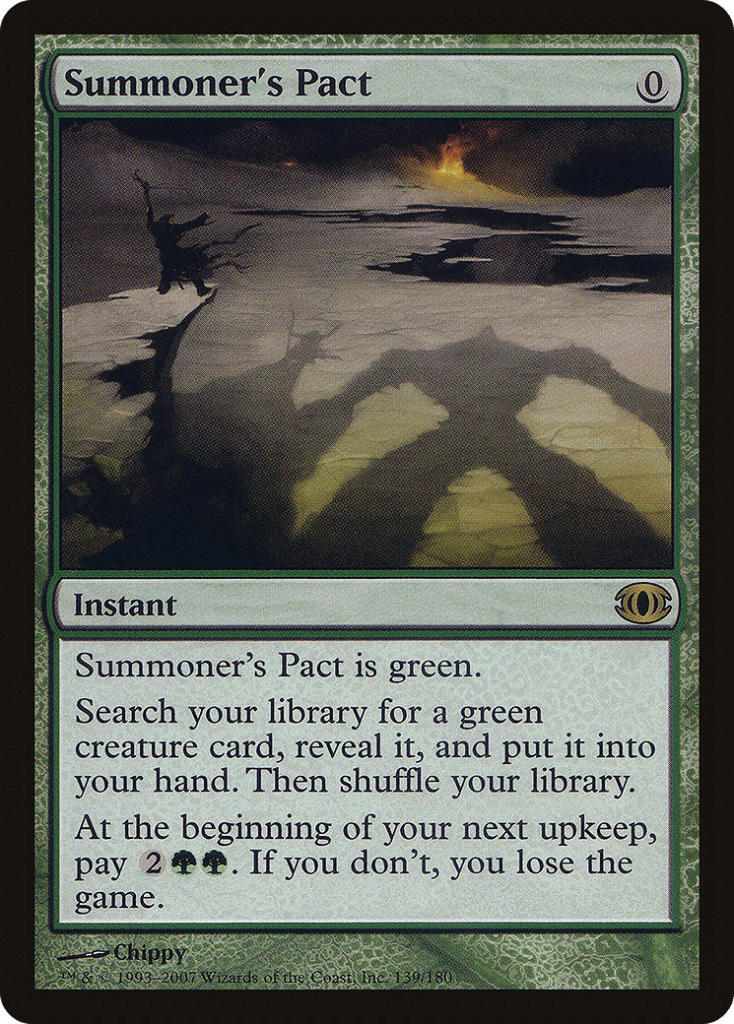
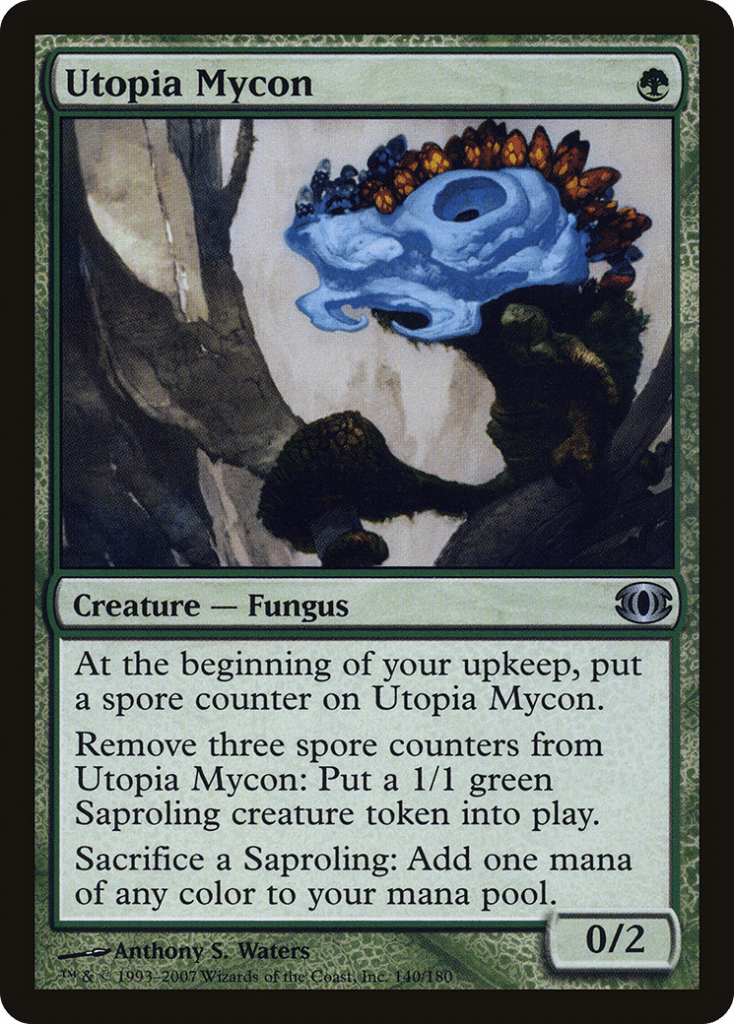

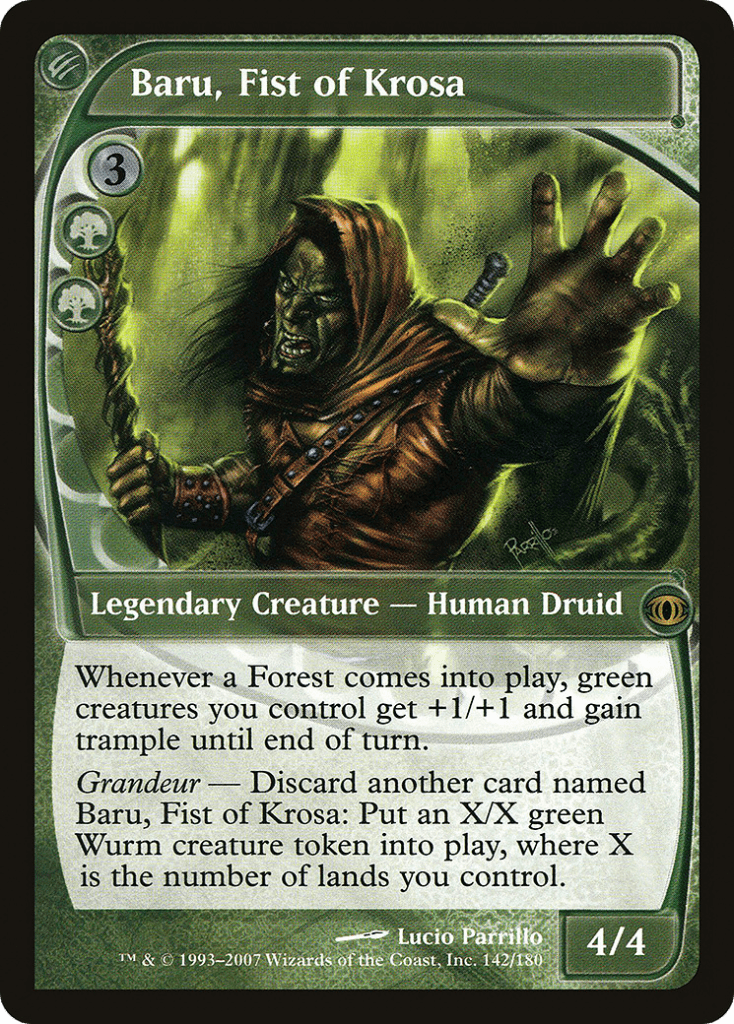
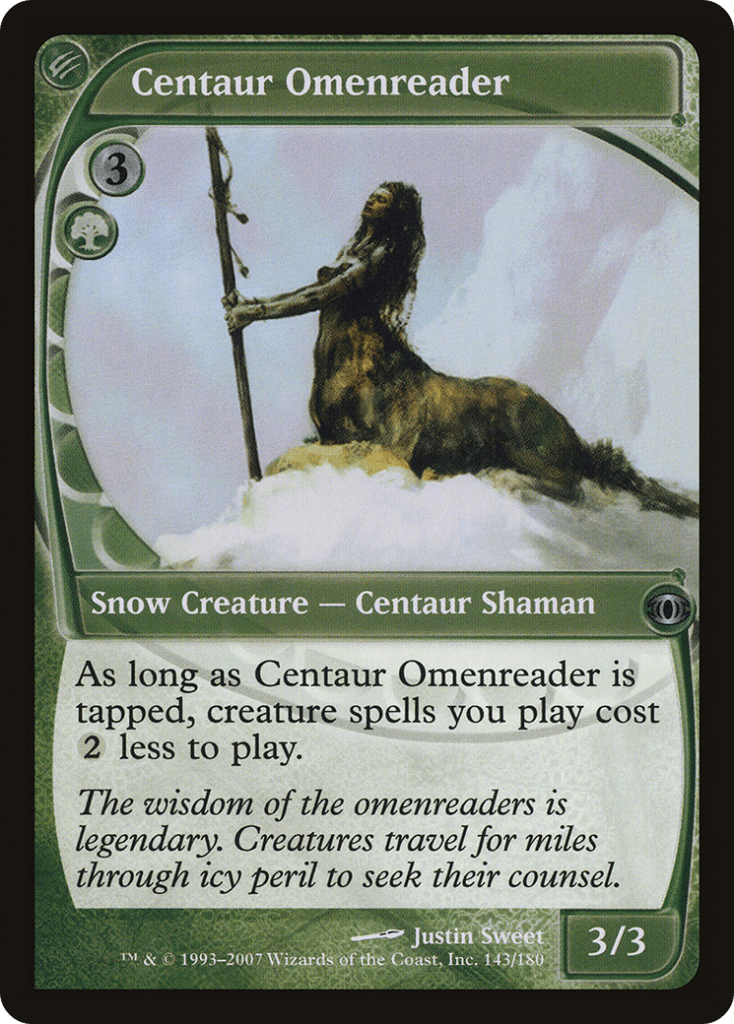
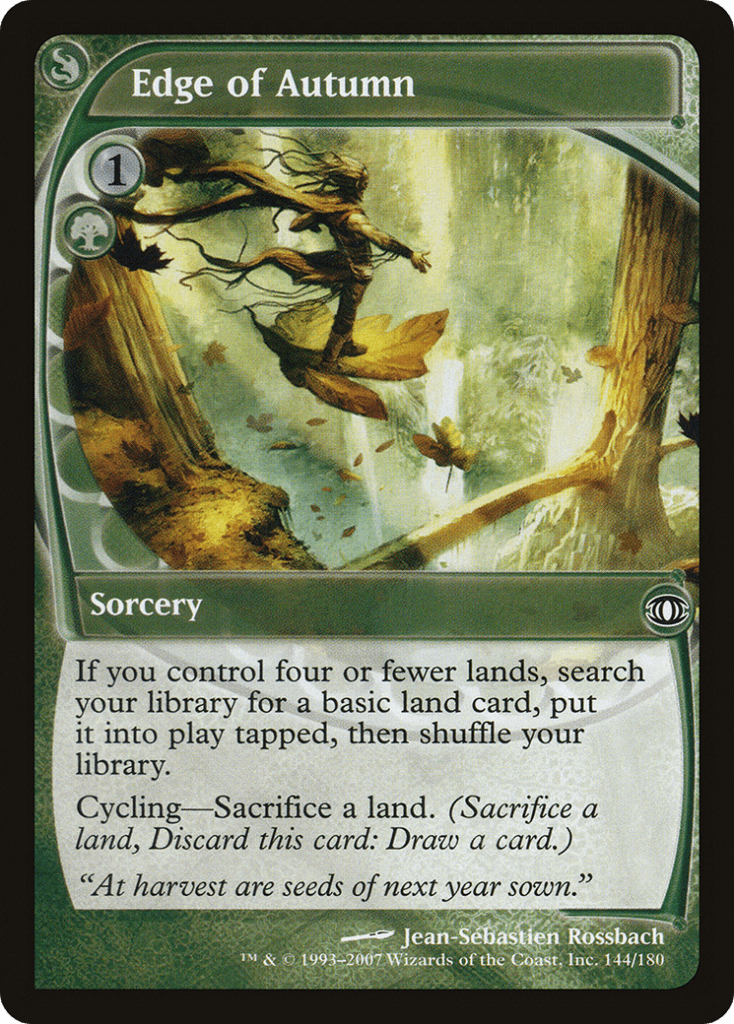
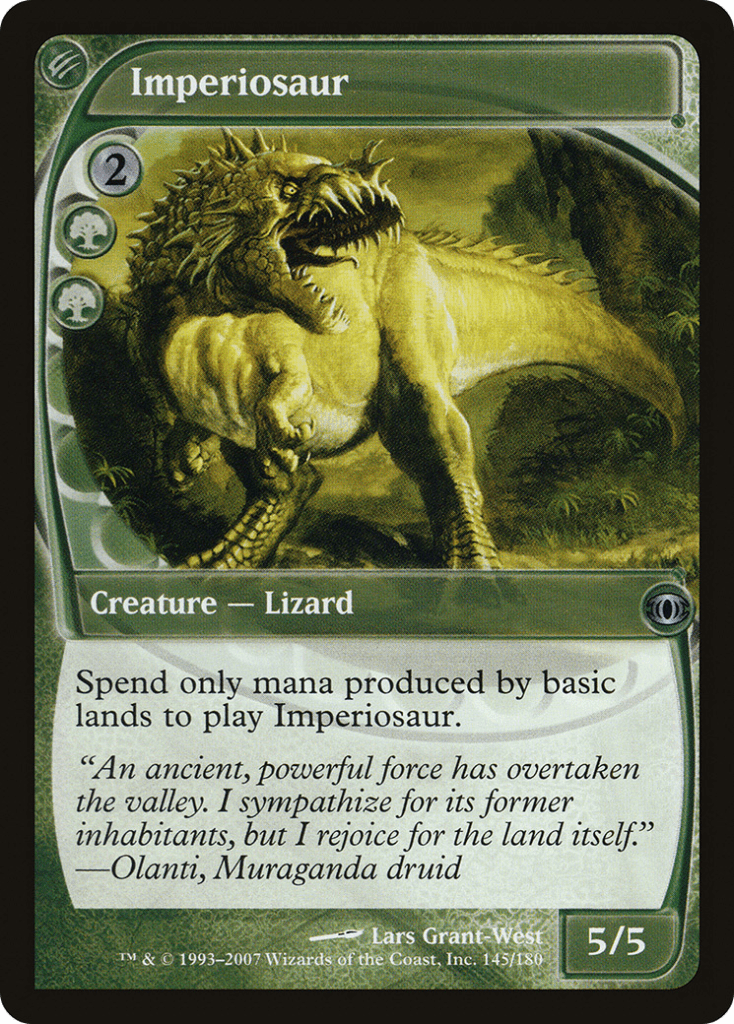
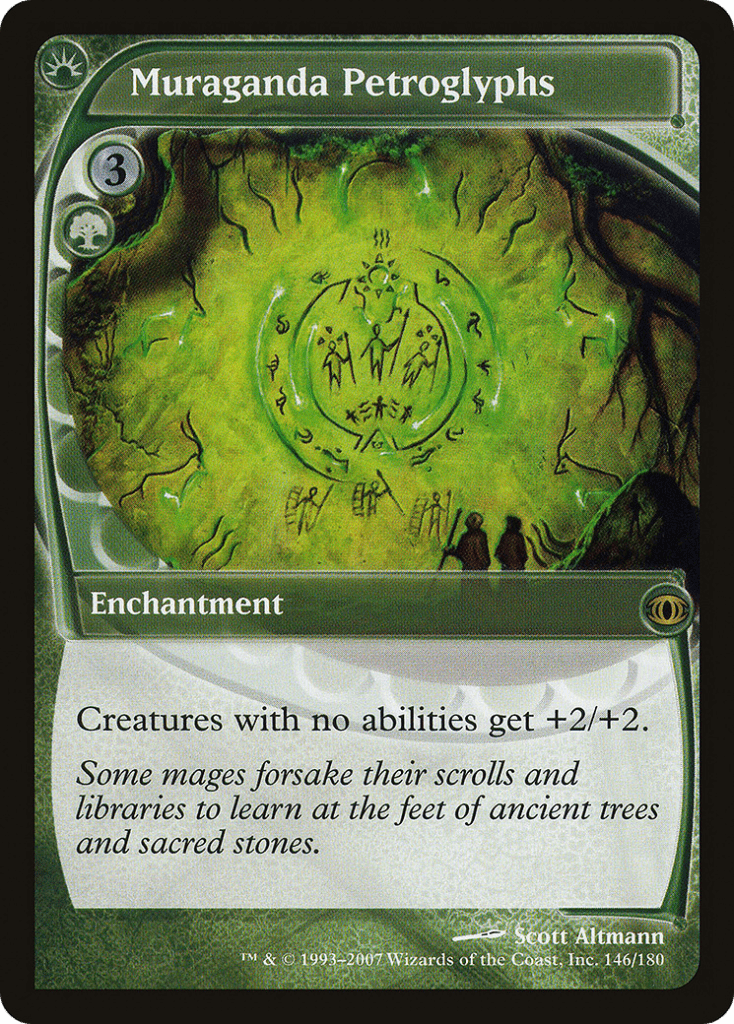
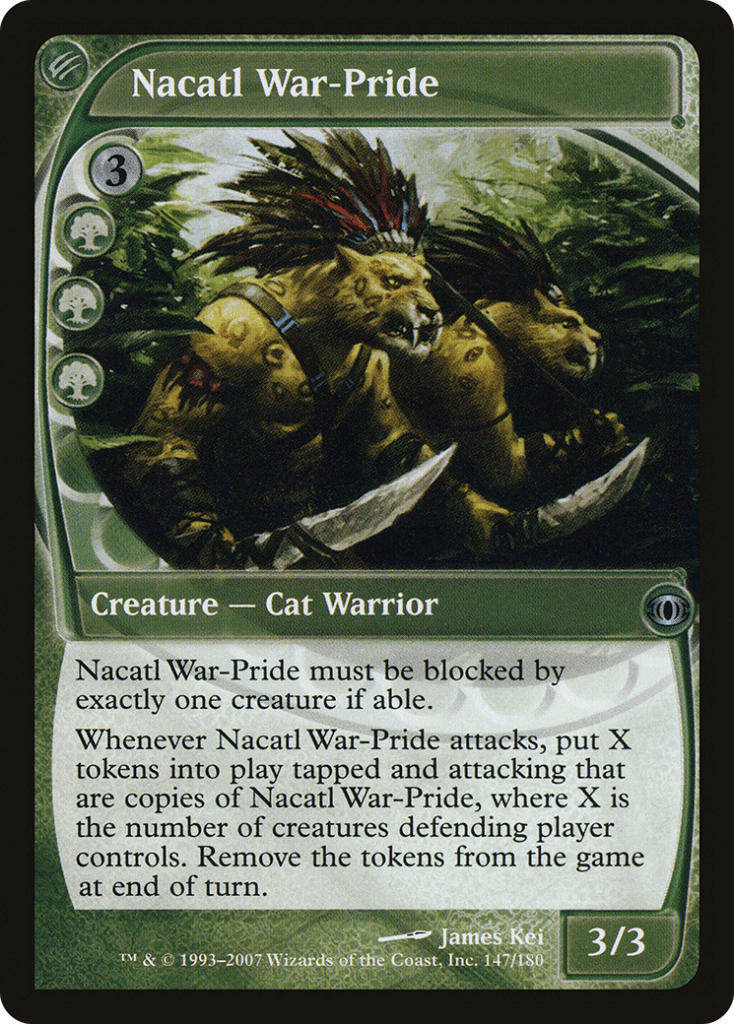

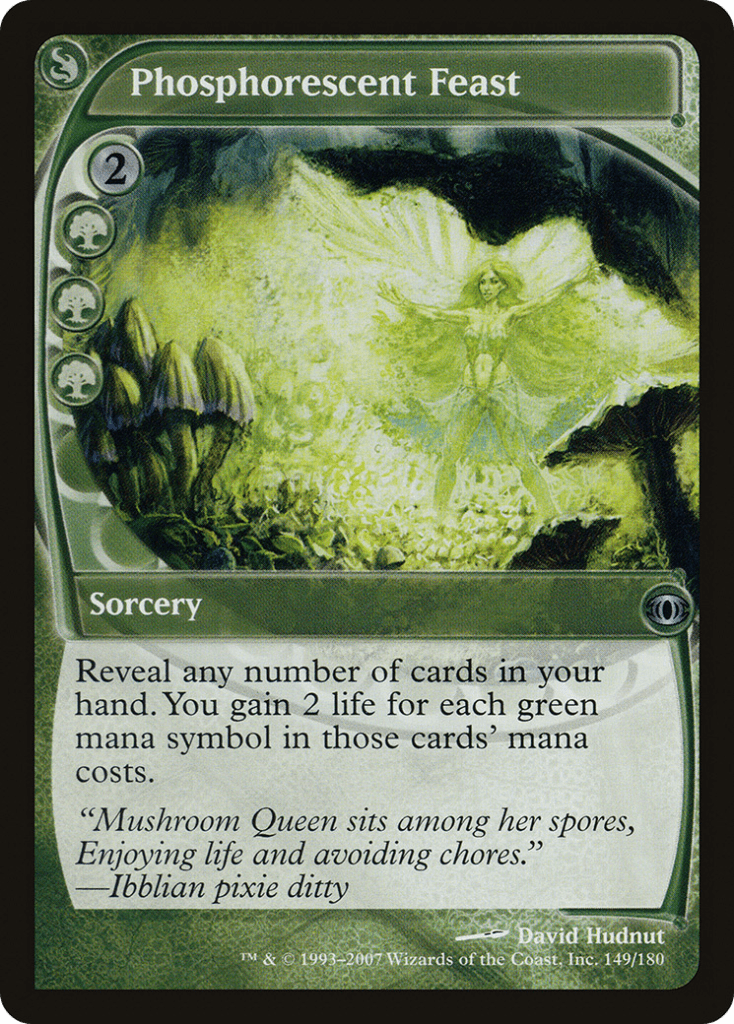
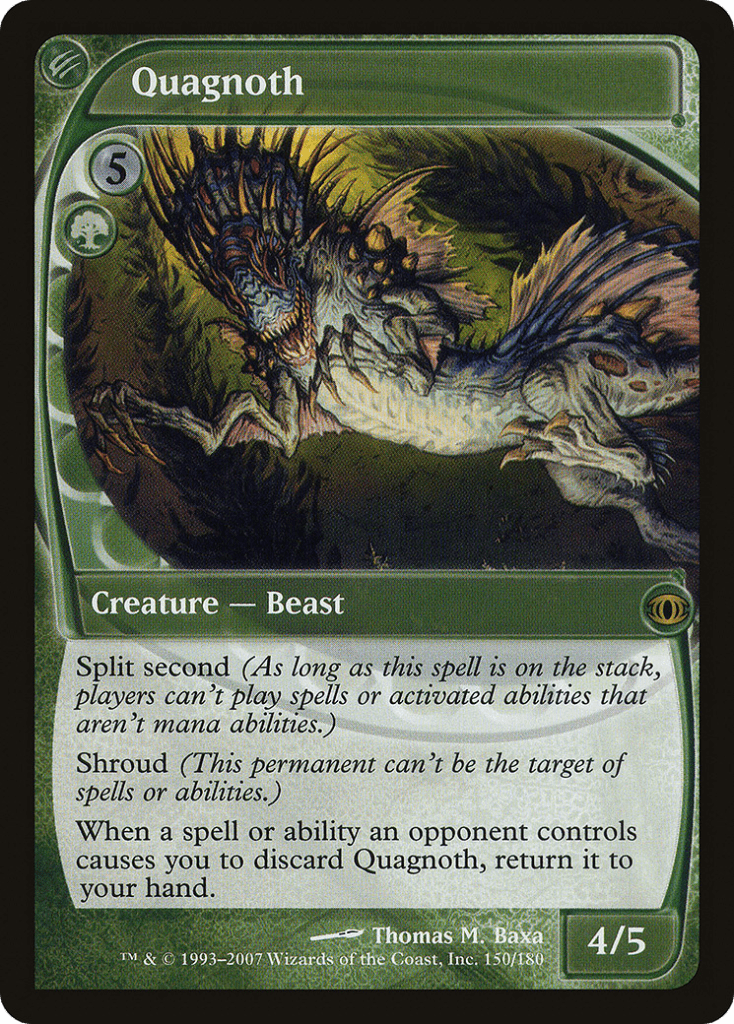

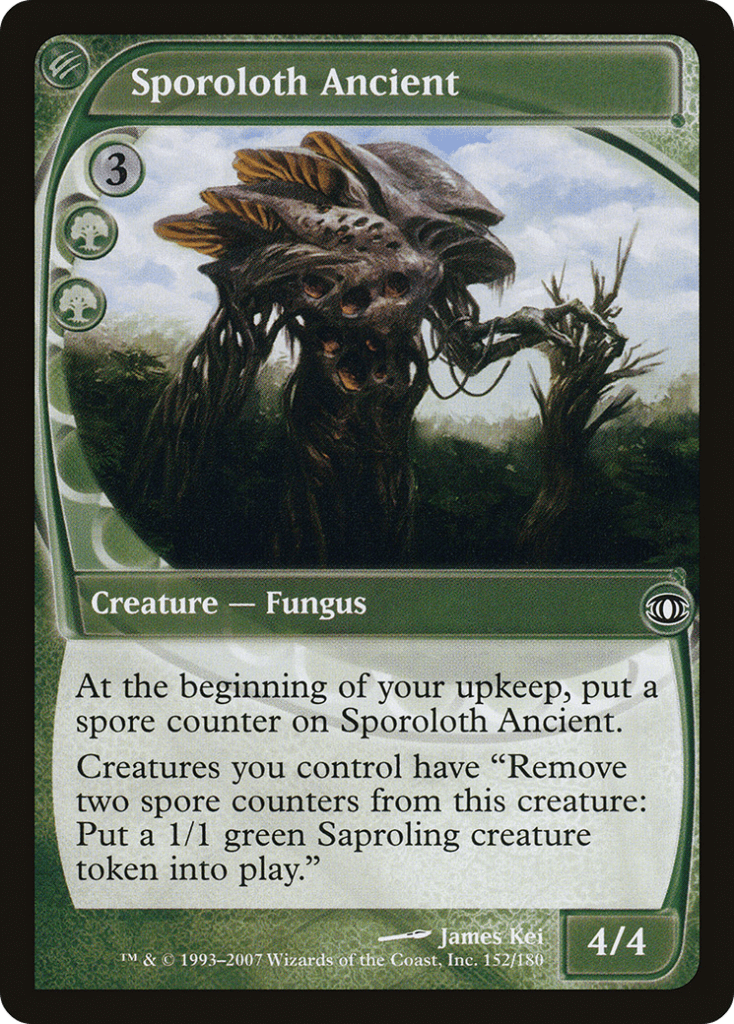
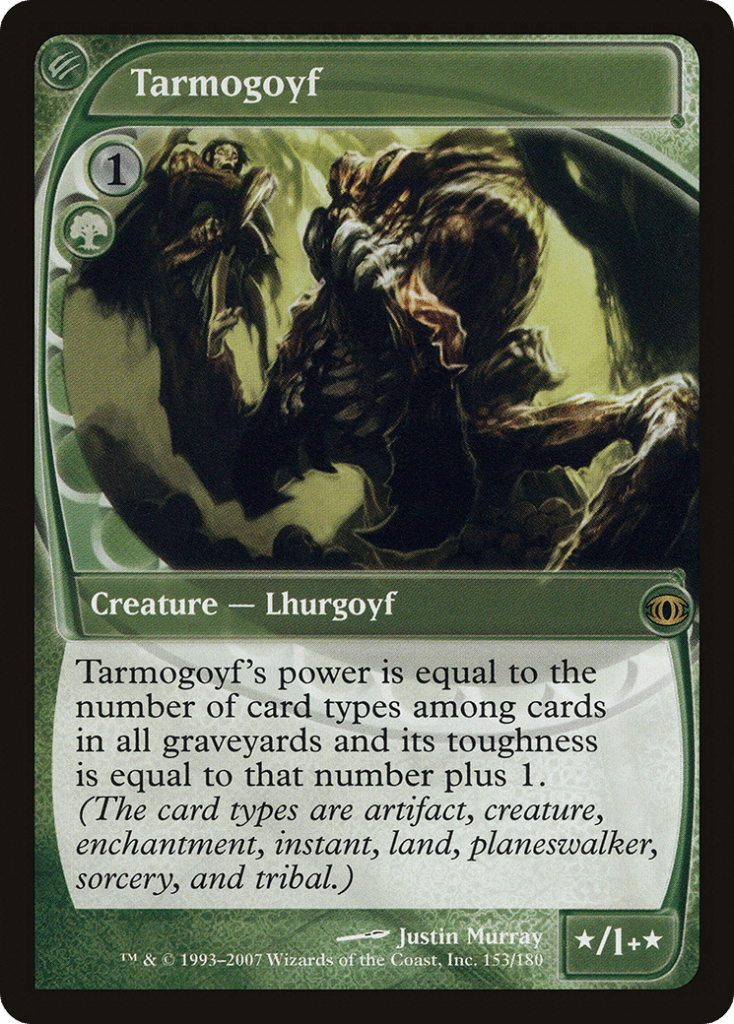


Multicolored
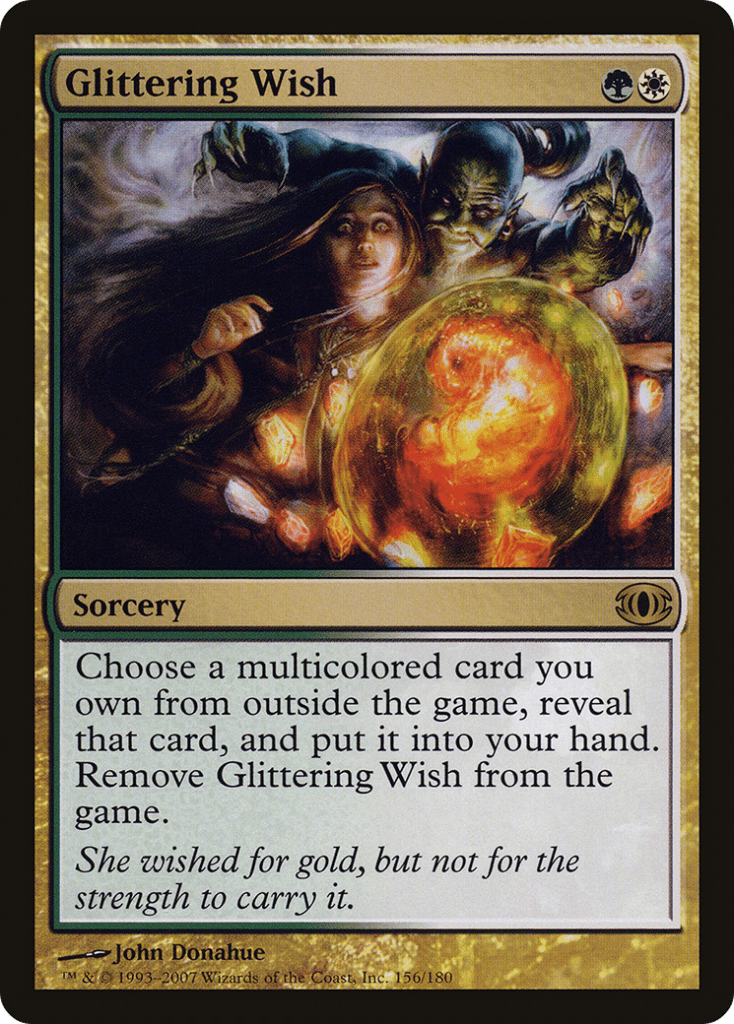

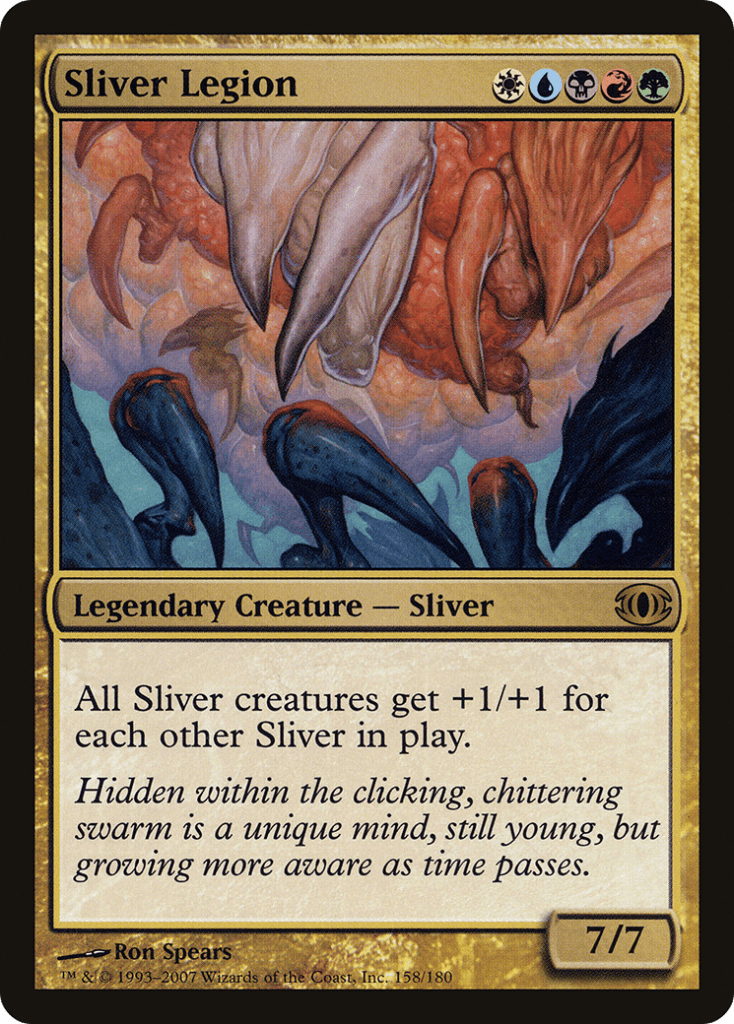
Colorless

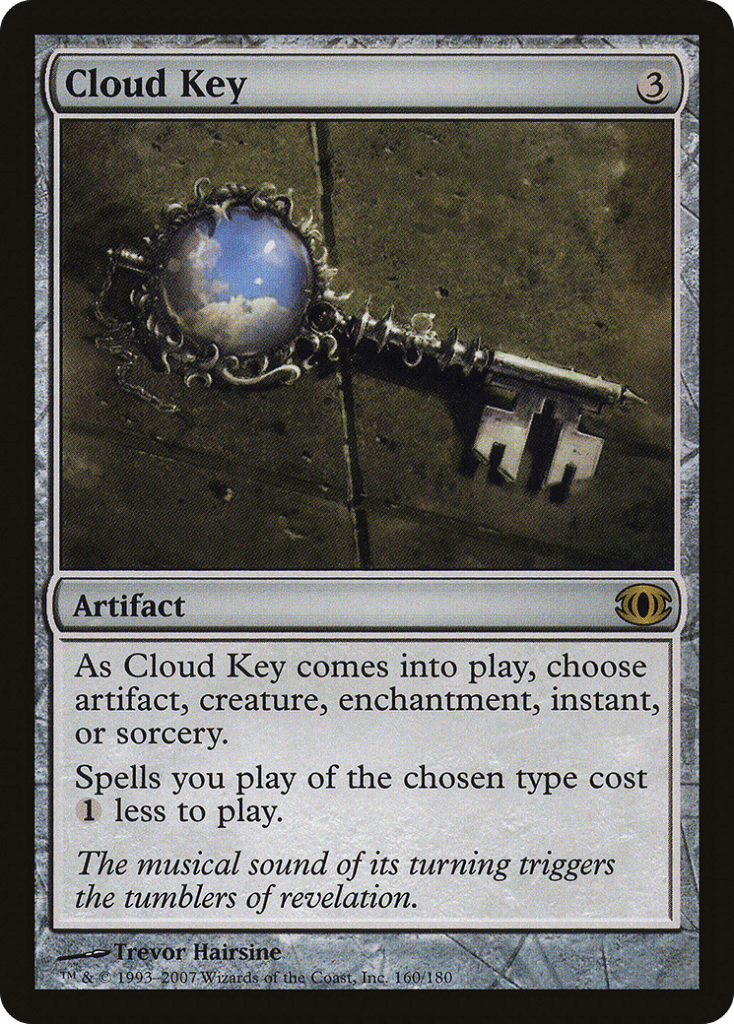
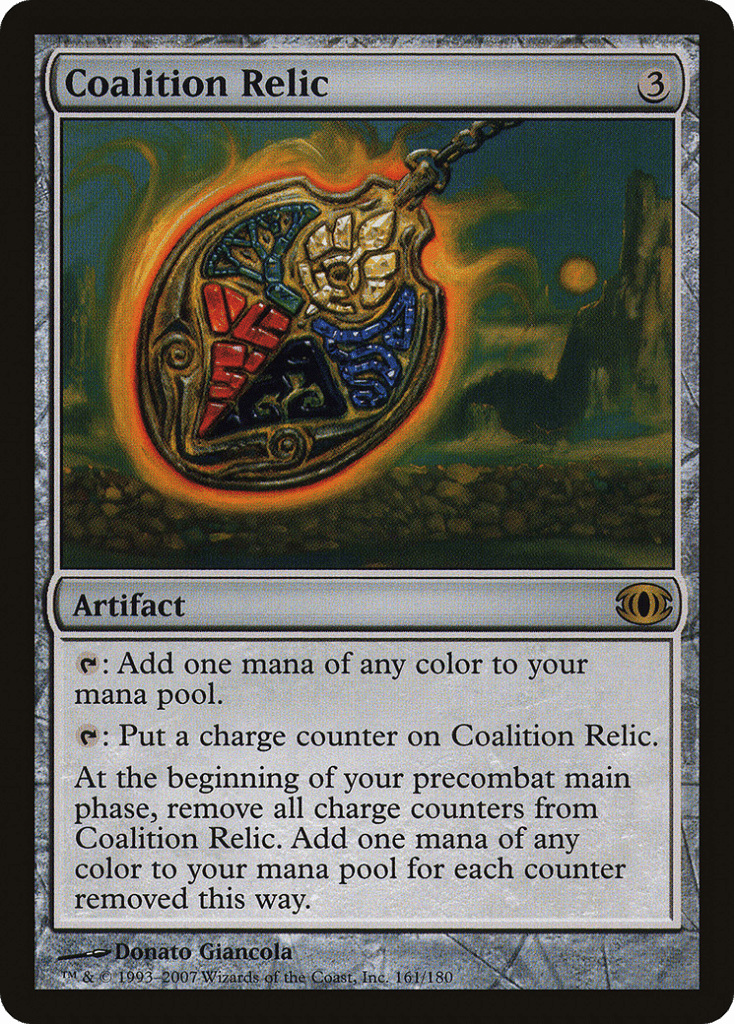

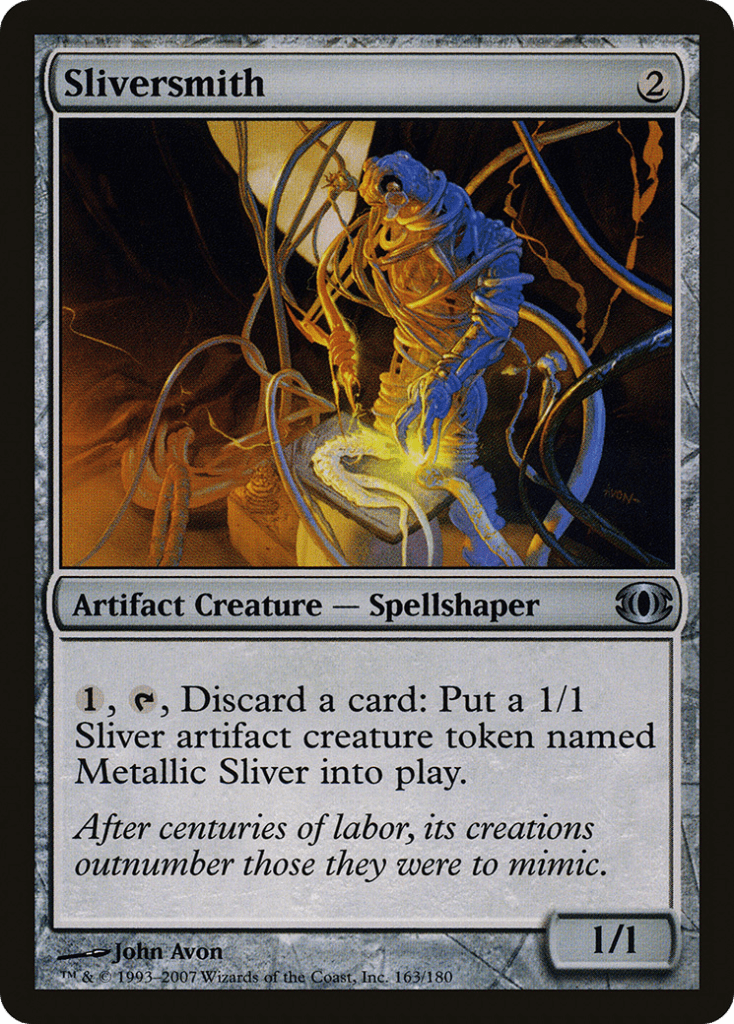
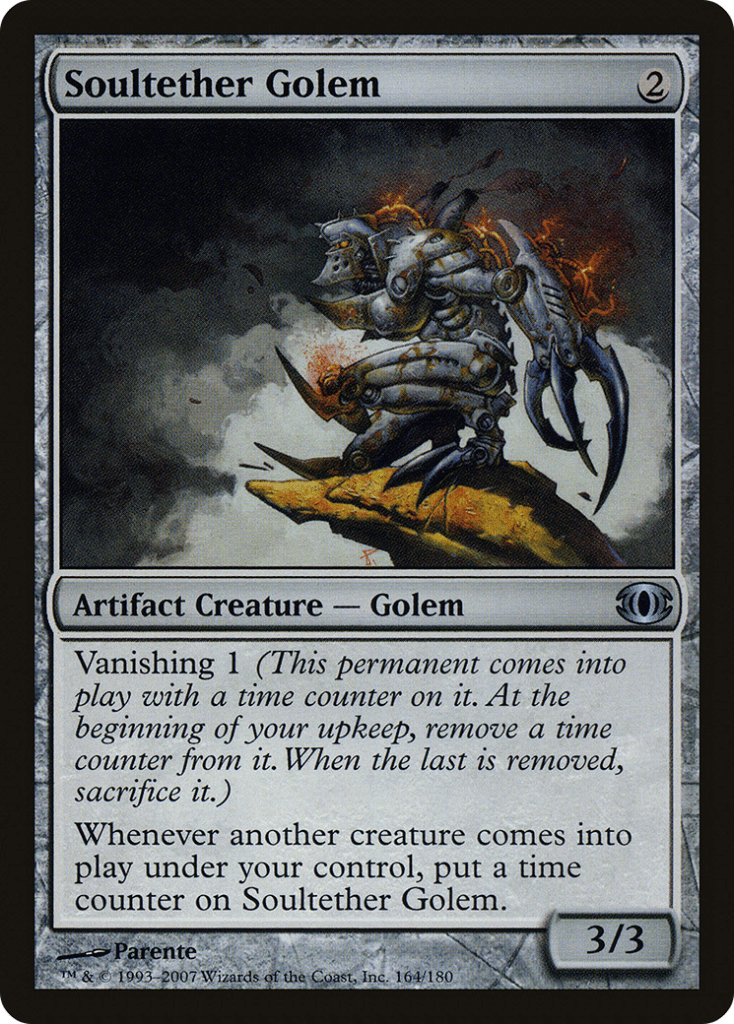
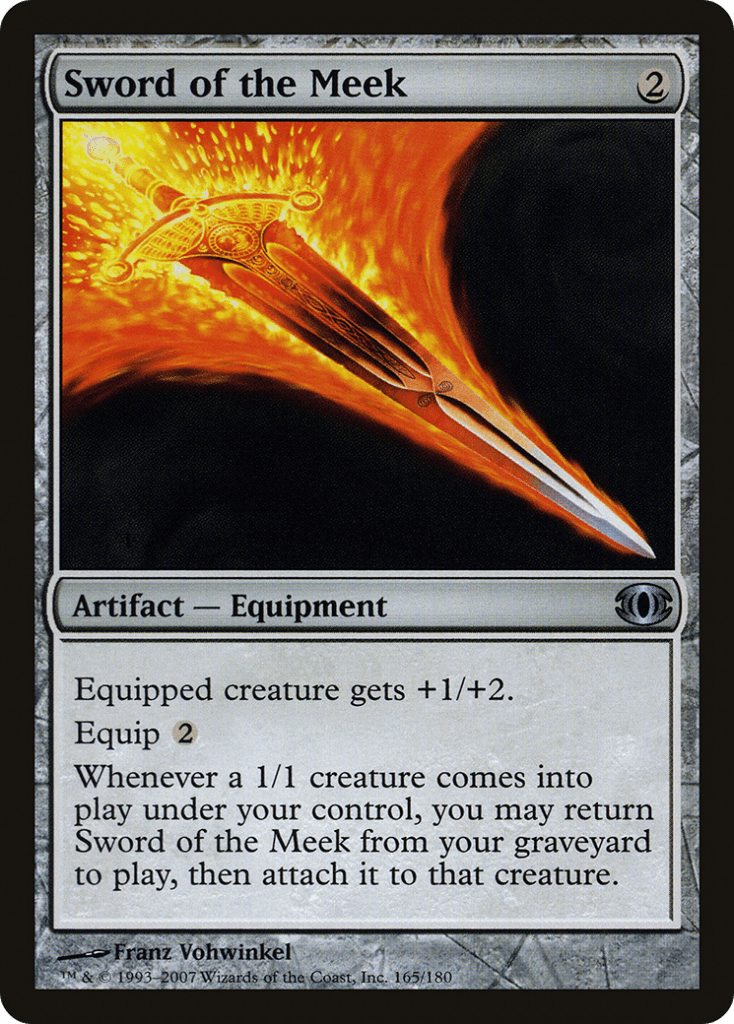
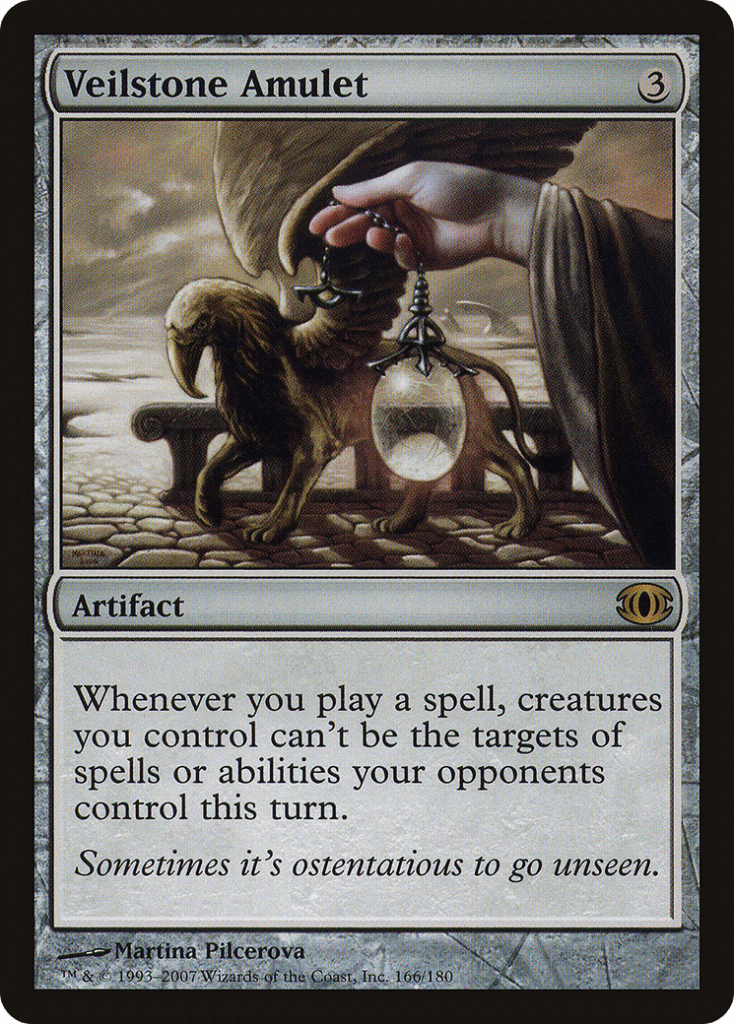

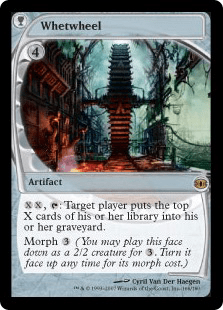
Lands
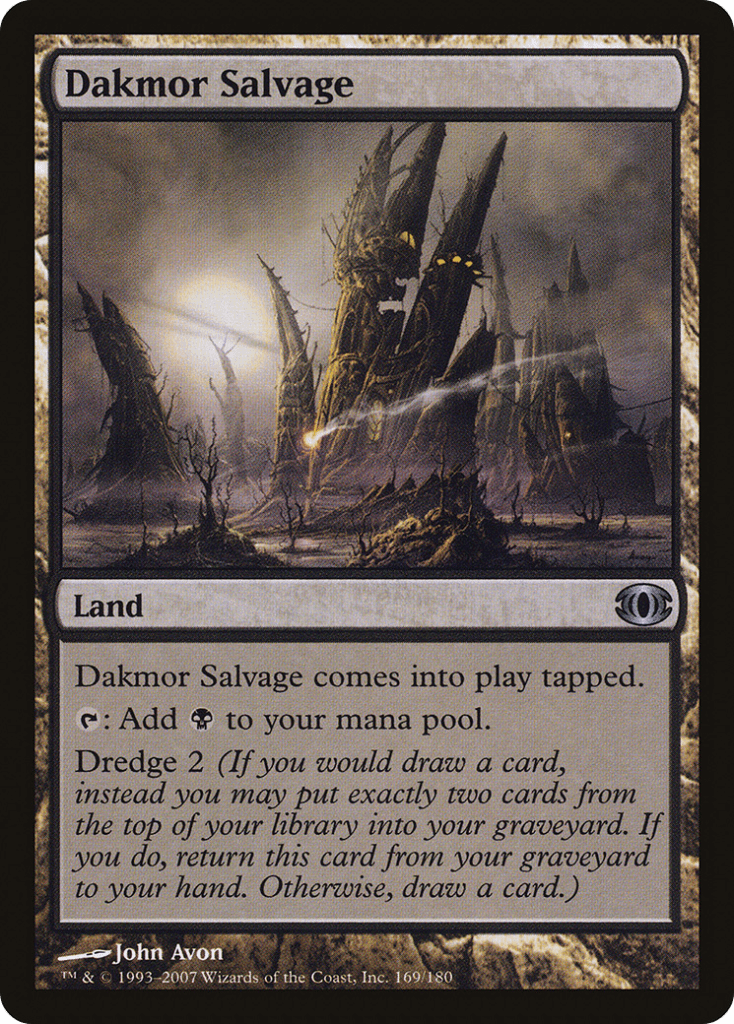

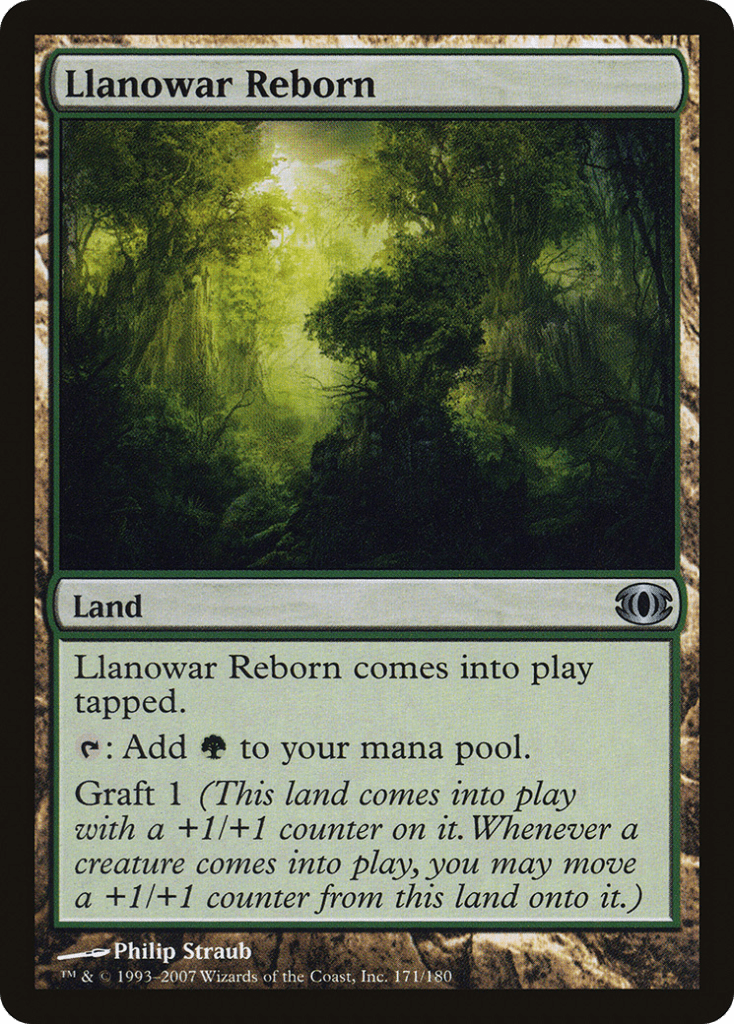
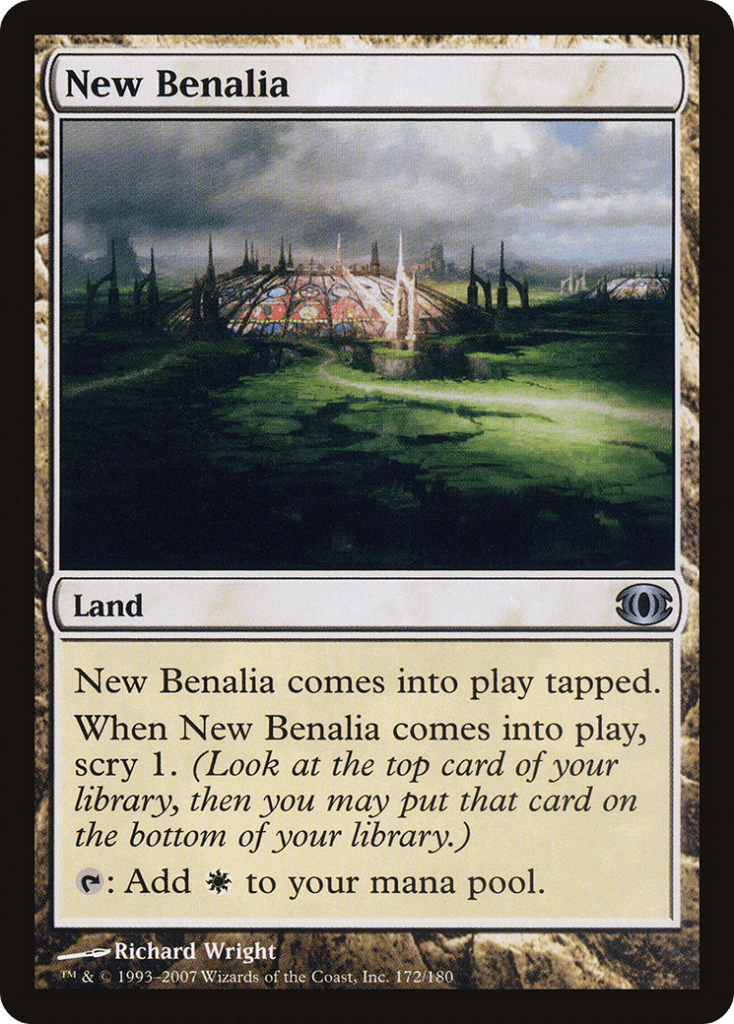
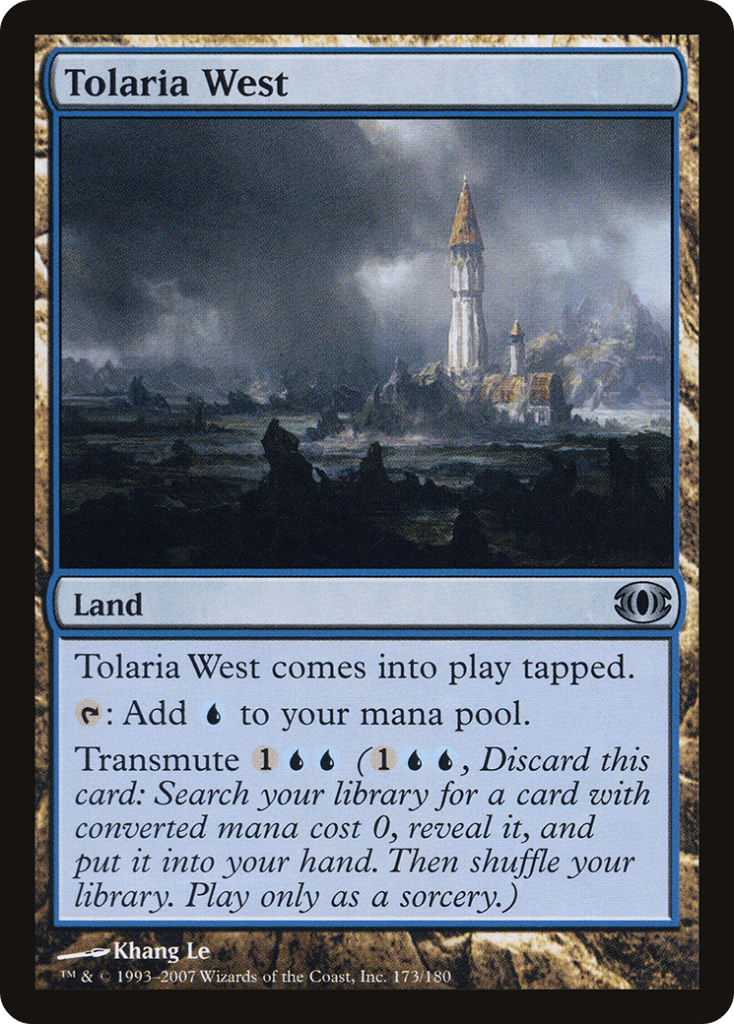
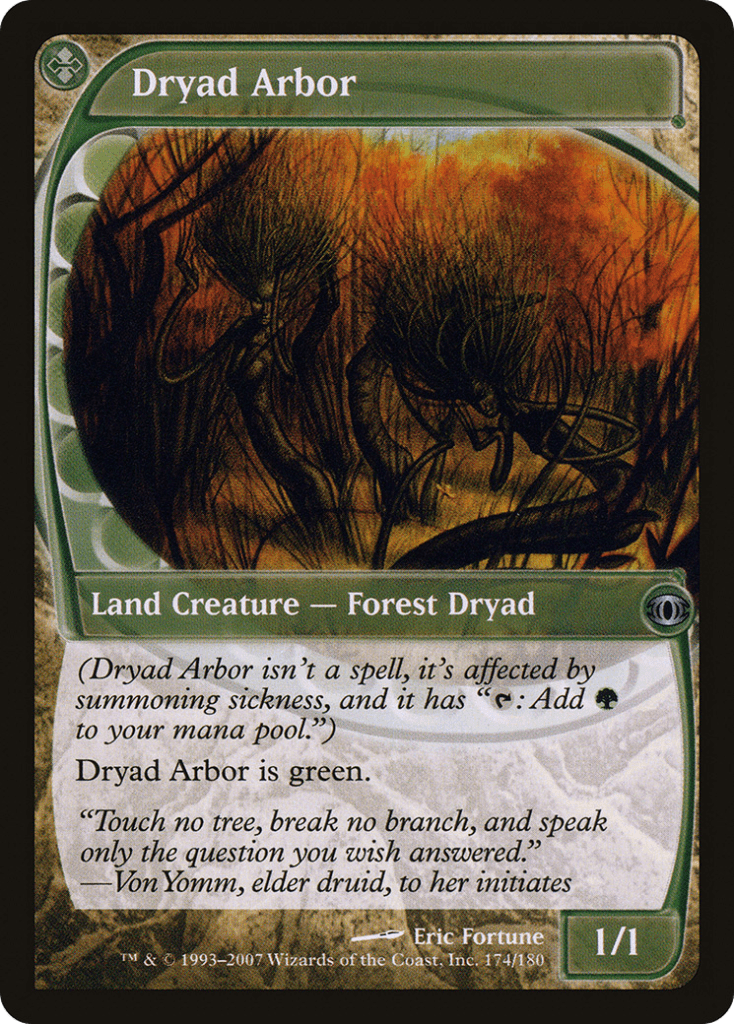
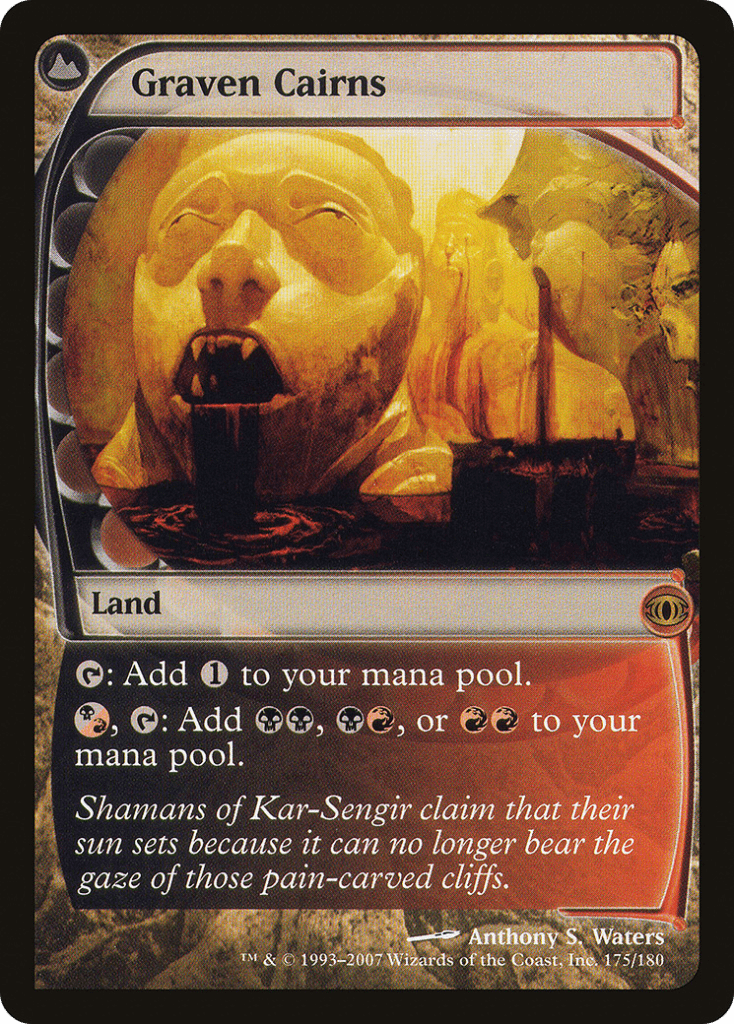
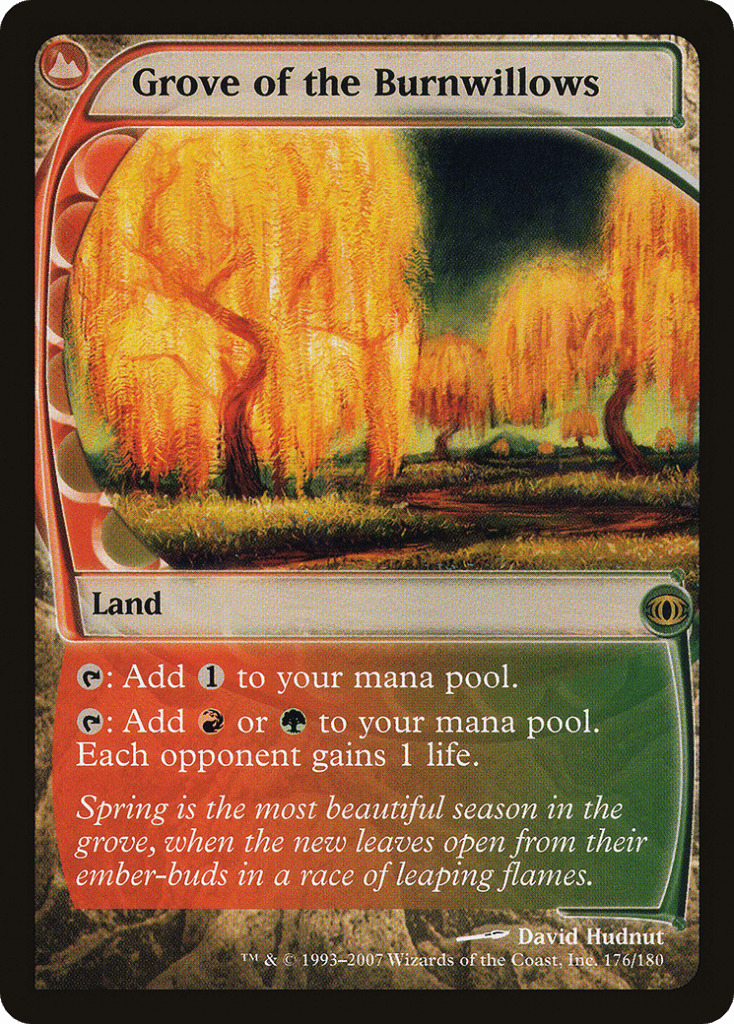

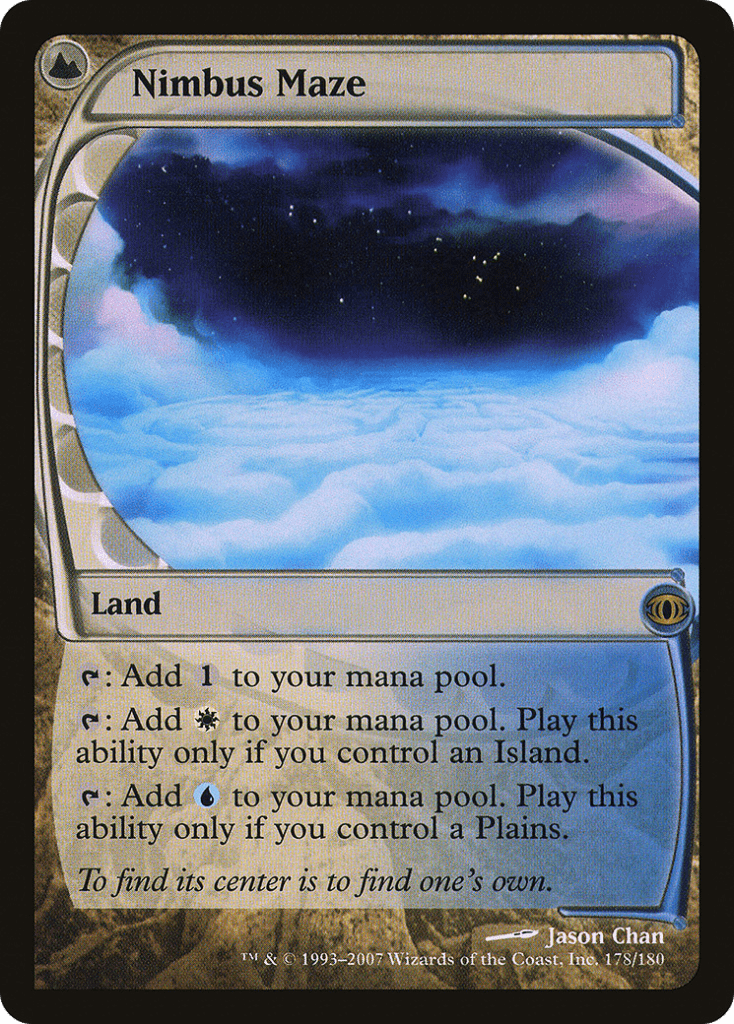

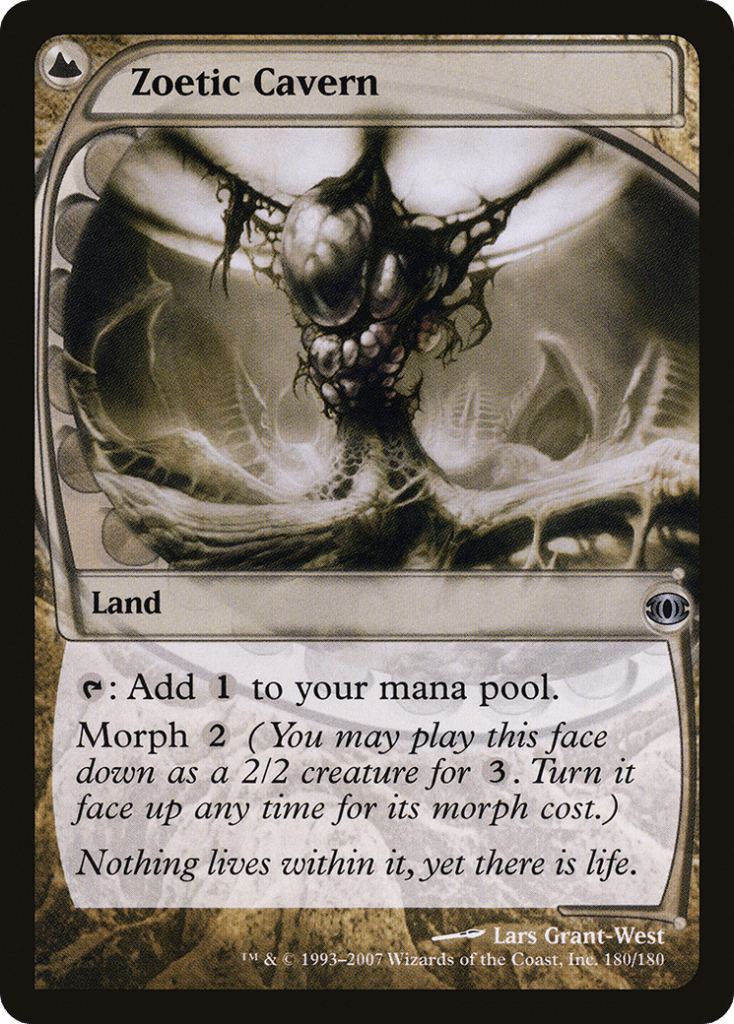
Notable Cards
Despite (or maybe because of) its odd design, Future Sight produced more than a handful of popular cards that see play across multiple formats. It also expanded on the variant frames that appeared in Planar Chaos.
Cycles





Future Sight’s iconic cycle is the Pacts, with Pact of Negation as the best among them. Bluffing that you have no spells to cast on your opponent’s turn only to surprise them with a counterspell doesn’t need any more explanation.

Horizon Canopy is a pain land that can be sacrificed to draw a card. This simple upgrade over the typical pain land is small but noticeable, especially for only one colorless to activate.

Nimbus Maze also saw its first printing here. It can tap for colorless, or the color from its pair that you don’t control. It makes for a great mana fixer and has that weird Future Sight frame!

River of Tears is a changing land that changes the mana they produce based on if a land has been played this turn or not.

Grove of the Burnwillows is basically the inverse of the pain lands, granting each opponent one life whenever it's tapped.
Future Sight Frames

Future Sight didn’t just push the mechanical design of cards, it also innovated on card art and frames. 81 cards are “futureshifted,” meaning they’re examples of future designs and have a futuristic design.
The futureshifted frame features the mana cost along the left side of the artwork and a type symbol in the top left corner. The futureshifted frame was also applied to five full-art commons, each a creature with no abilities making for great boots-on-the-ground for Muragand Petroglyphs.
Tarmogoyf

I’d be remiss not to mention the terrible Tarmogoyf. This 2-drop has lots of value and basically explodes in any deck that can quickly mill itself.
The number of returning Lhurgoyf effects more than proves Tarmogoyf’s lasting legacy in Magic. It’s even nastier in a deck with…
Bridge from Below

Bridge from Below is unique in that its abilities are only active when it’s in its owner’s graveyard. It’s a huge payoff in dredge decks, and it was banned in Modern in 2019 to try to stop the Hogaak, Arisen Necropolis decks from destroying the meta.
Dryad Arbor

Dryad Arbor was the first card with both the creature and land types. Because of this it’s a 0-mana creature that suffers from summoning sickness, but it can tap for green as though it were a Forest.
It can block creatures, be enchanted or equipped, and can be Murdered. The dryad forest cards returned recently with Awaken the Woods in The Brothers’ War, which creates a number of tokens that are basically just Dryad Arbors.
Available Products
Future Sight was sold in the typical suite of products at the time.
Booster Packs
Future Sight booster packs come with 15 cards and one guaranteed rare.
Future Sight fat packs, the precursor to the bundle, come with three booster packs, a tournament pack, and 40 basic lands.
Future Sight booster boxes come with 36 booster packs for collecting or drafting.
Theme Decks
There are four Future Sight theme decks, each featuring cards from across the Time Spiral block.
Future Shock
Future Shock is made up entirely of basic lands and timeshifted cards, focused on playing big creatures and swinging for big damage.
Fate Blaster
Fate Blaster is a control deck packed with scry effects to help you get Magus of the Future in play.
Suspended Sentence
Suspended Sentence uses suspend, vanishing, and time counters along with Paradox Haze to give you two upkeeps.
Rebels Unite
Rebels Unite is all about rebel creatures. Rebels in your deck, rebels in your graveyard, rebels on the battlefield, rebels everywhere!
Wrap Up

Bound in Silence | Illustration by William Simpson
Future Sight was the precursor to sets like Modern Horizons, where R&D could test out new mechanics and designs without committing an entire set’s worth of cards. It offered weird interactions and keywords we’ll probably never see again, either because of their complicated or overpowered design or their ugly-as-sin alternate frames. Either way they make great additions to your collection and create a very fun gameplay environment when played together.
Should WotC revisit the Future Sight-style of set? Or should new mechanics only be introduced when they’re full fleshed out? How do you feel about the futureshifted frames? Let me know in the comments or over on Draftsim's Twitter.
Thanks for reading!
Follow Draftsim for awesome articles and set updates: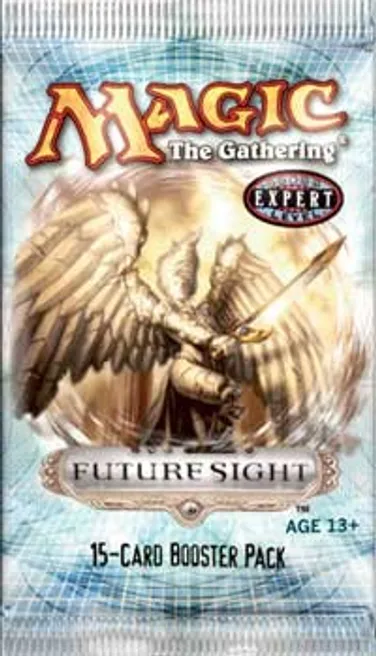

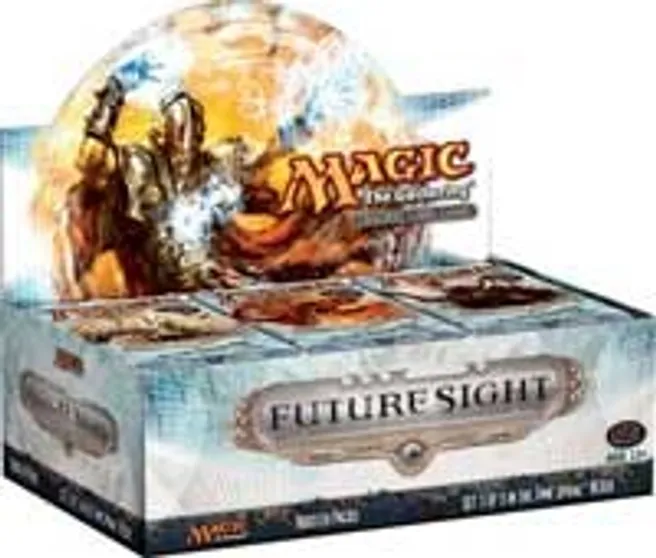

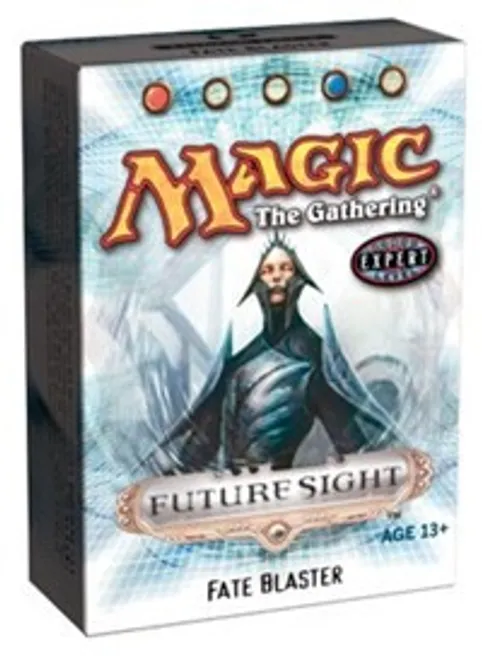
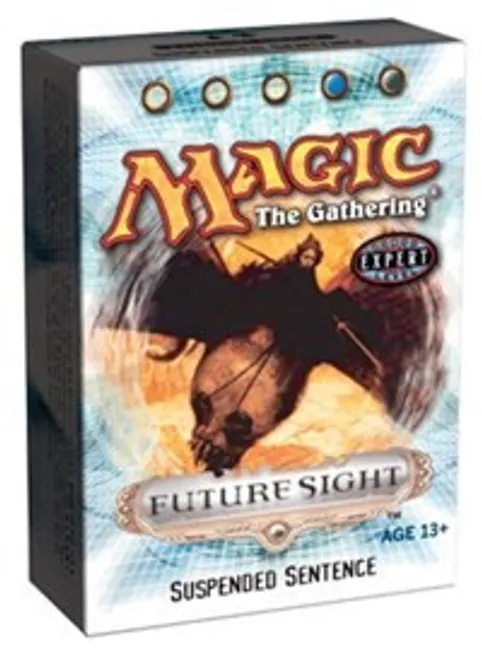
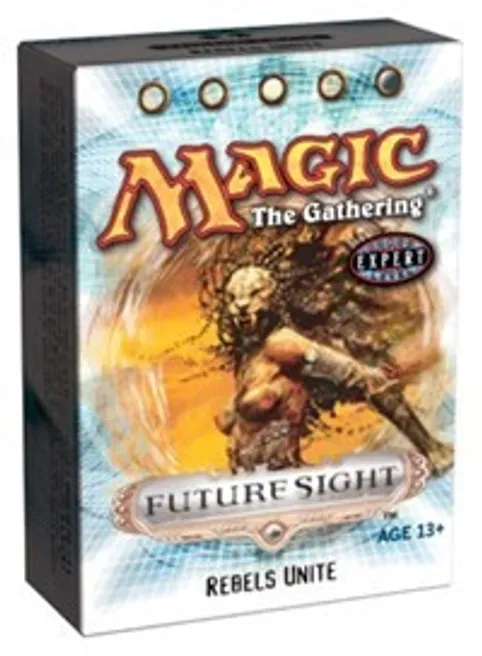
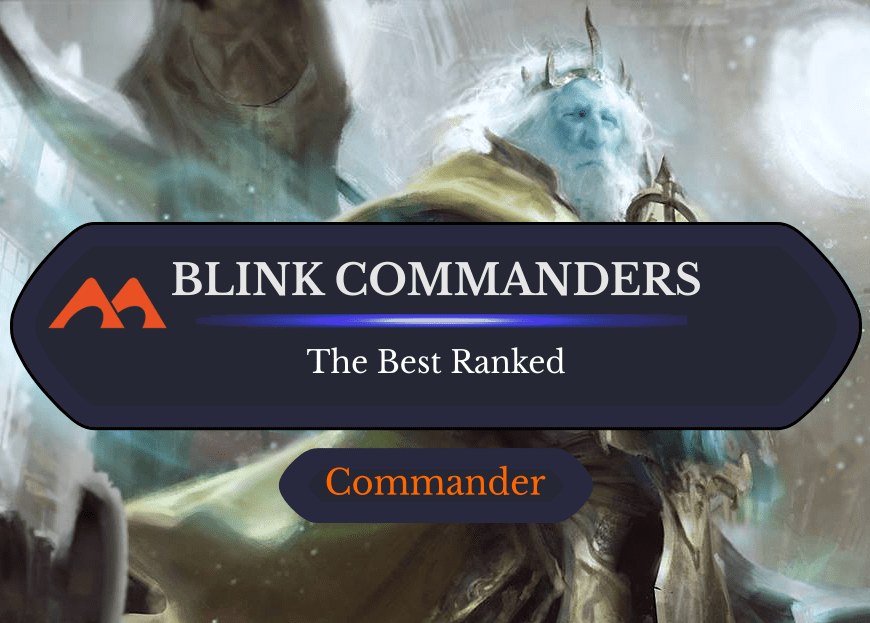
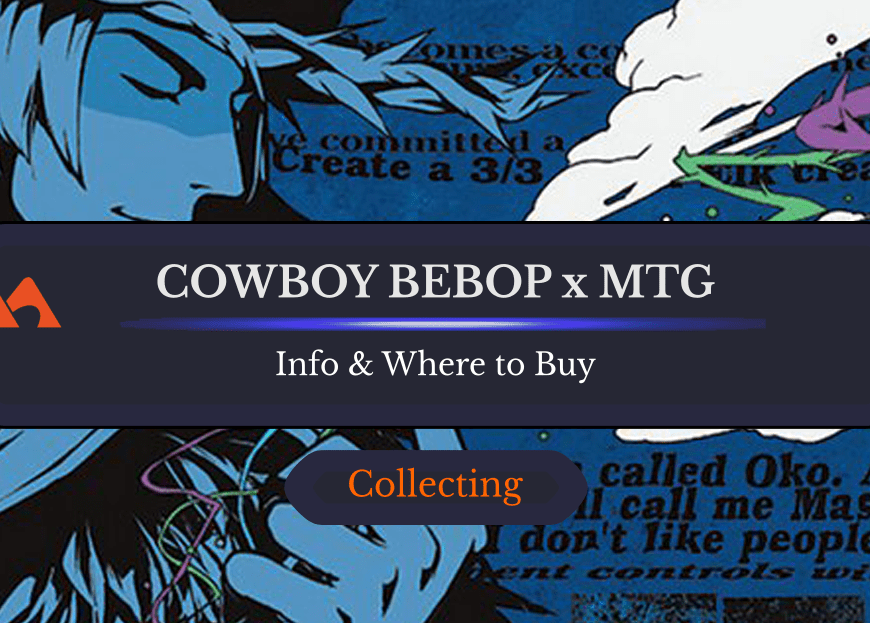
Add Comment